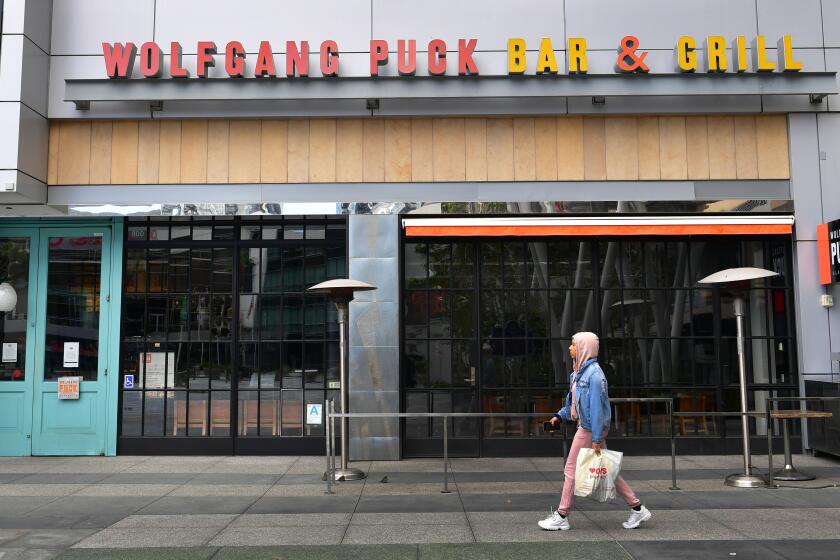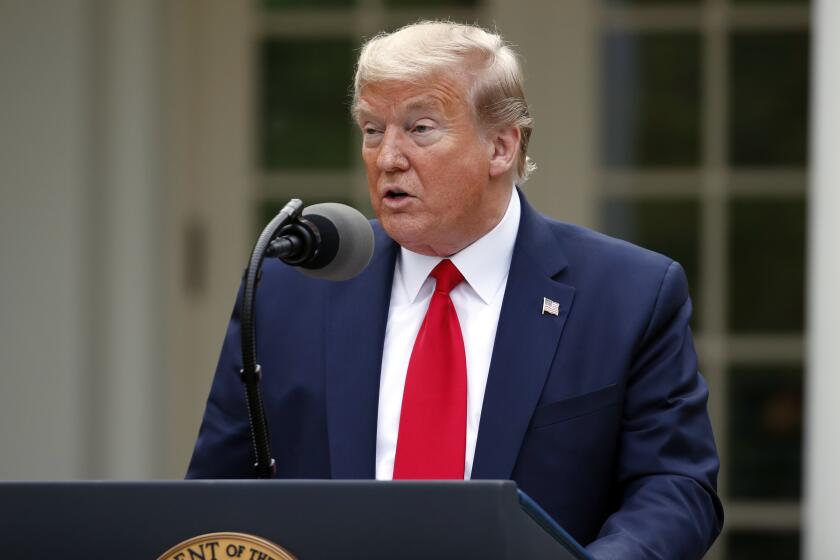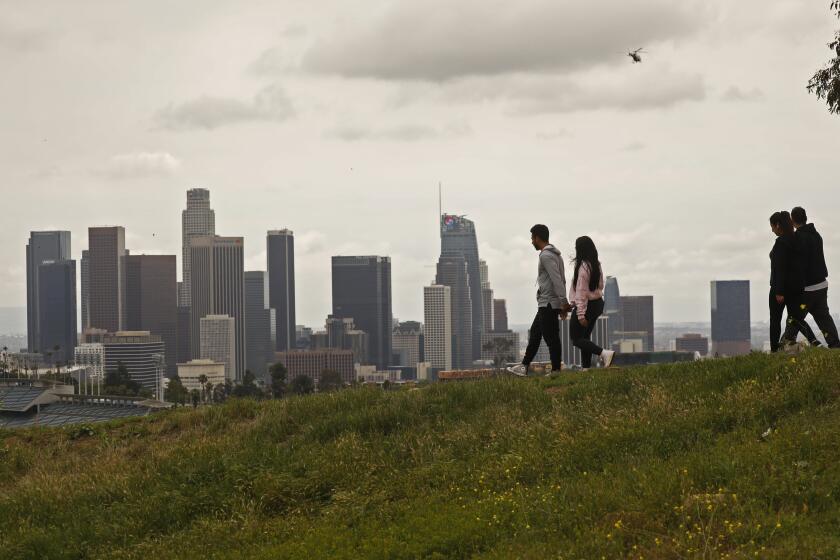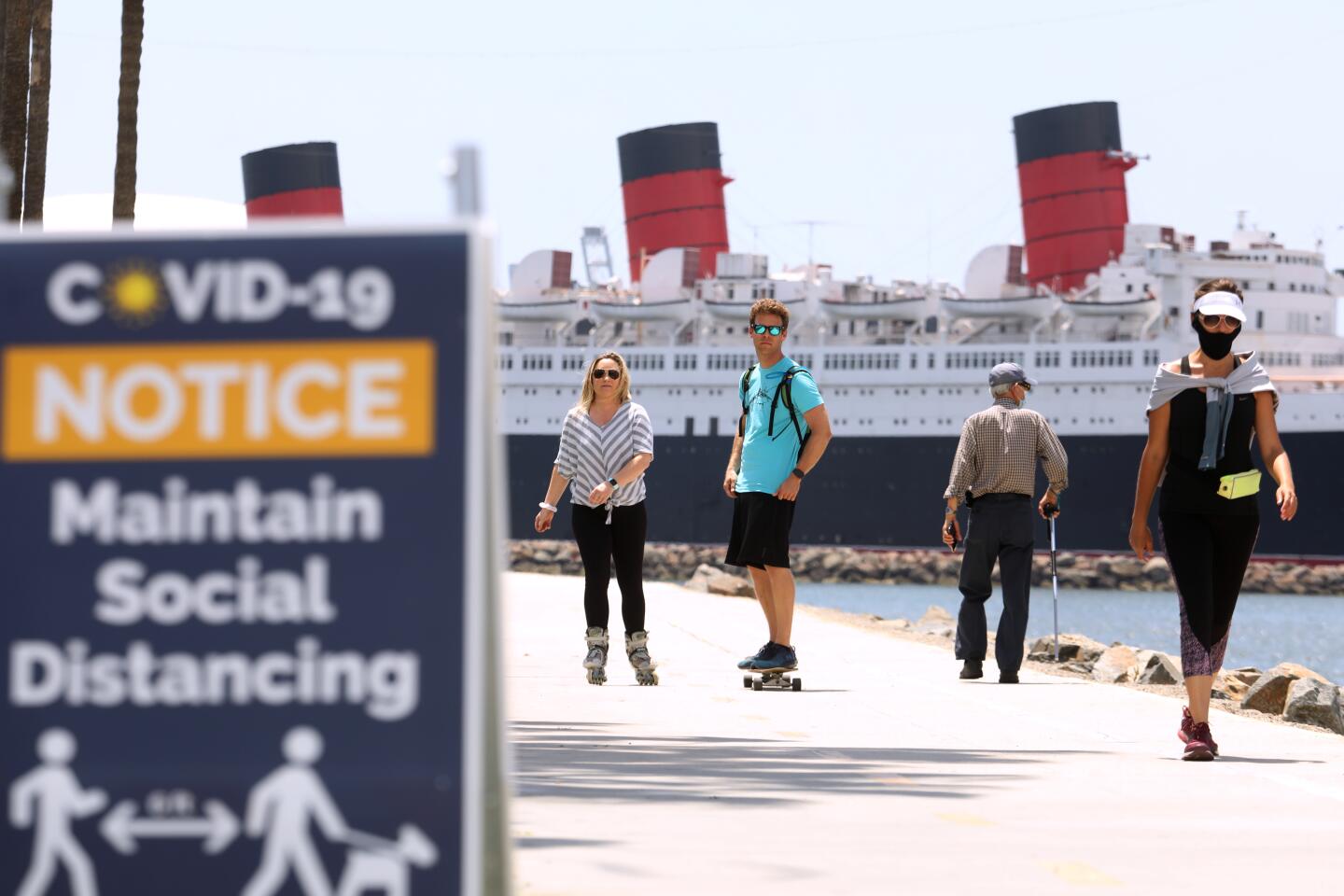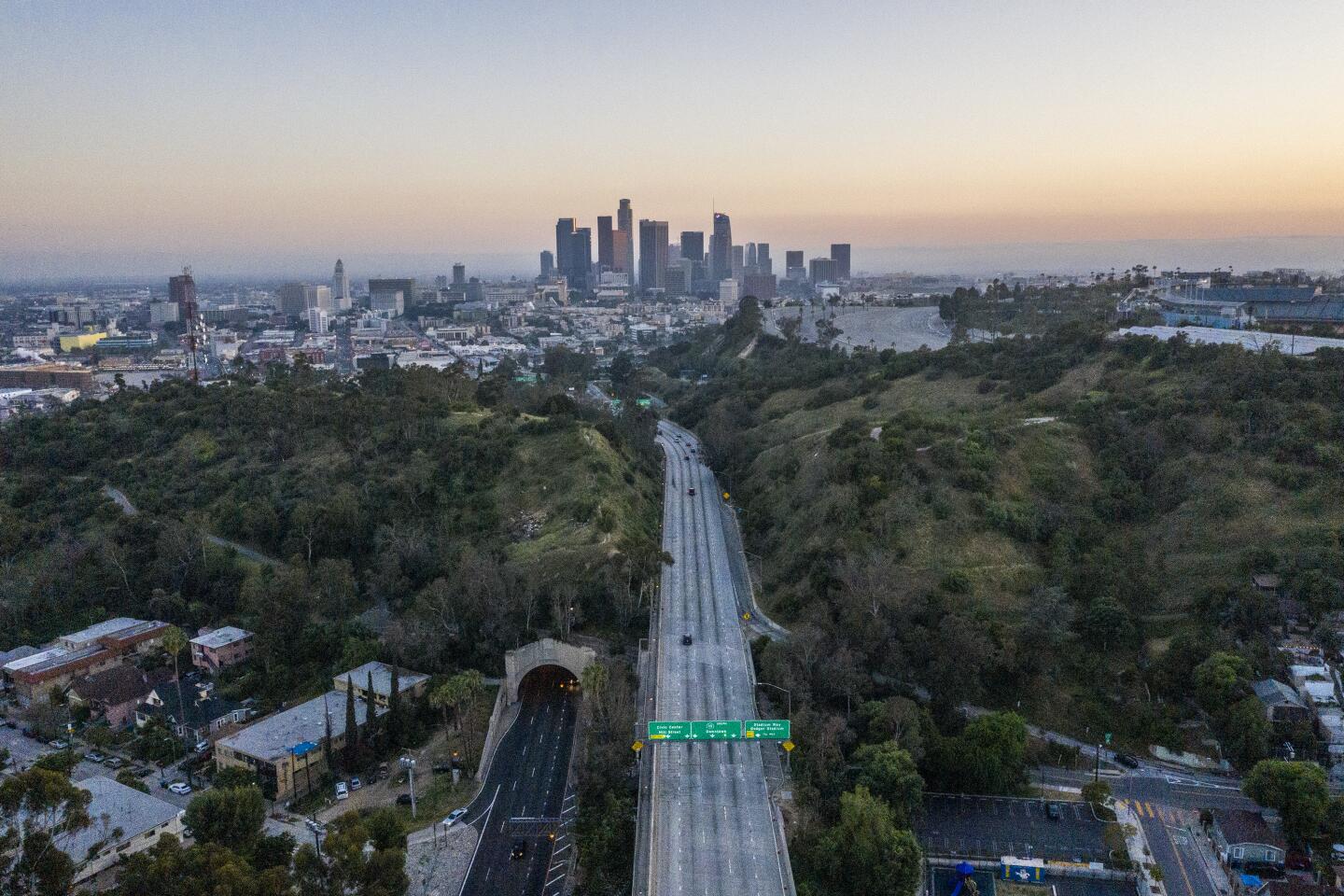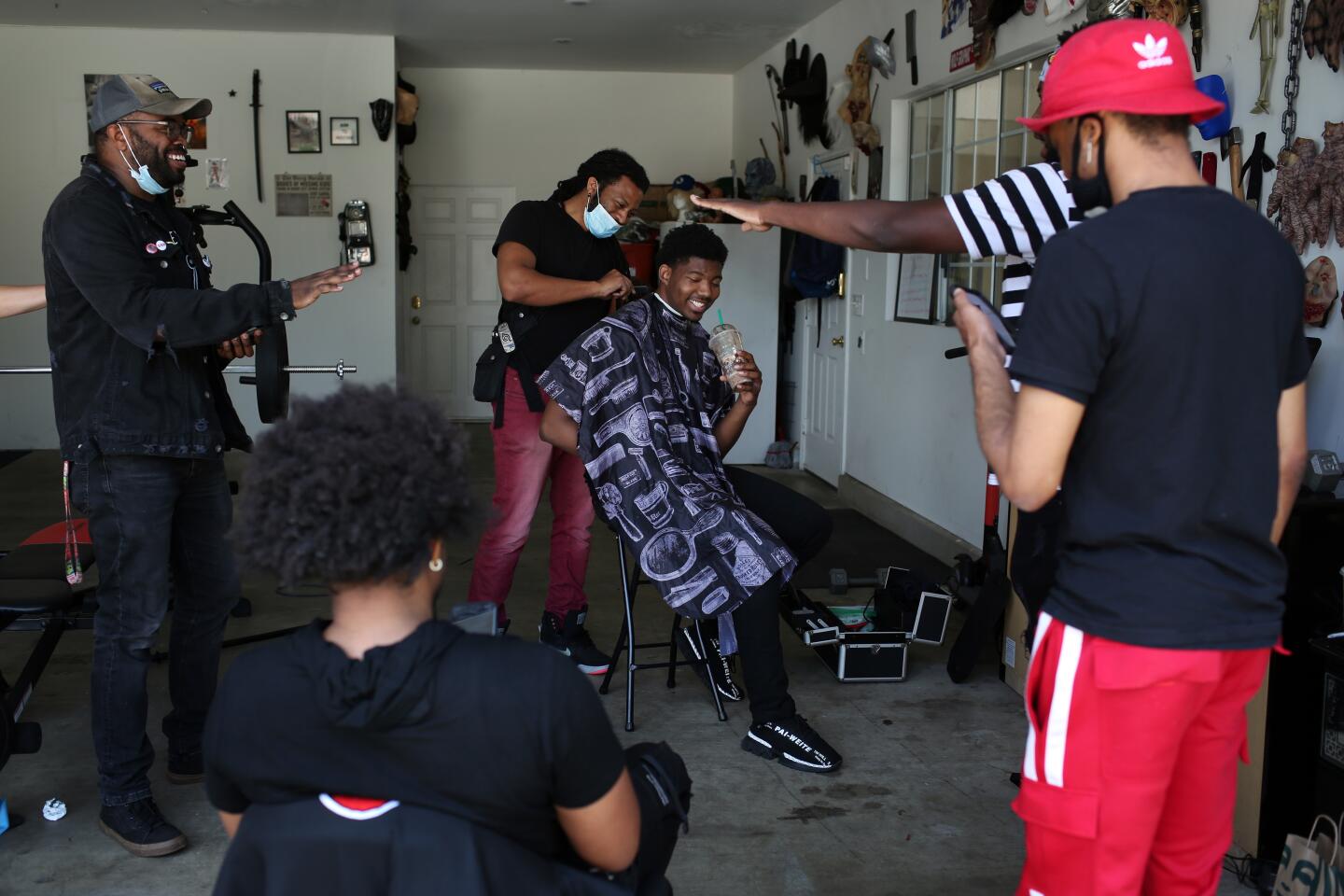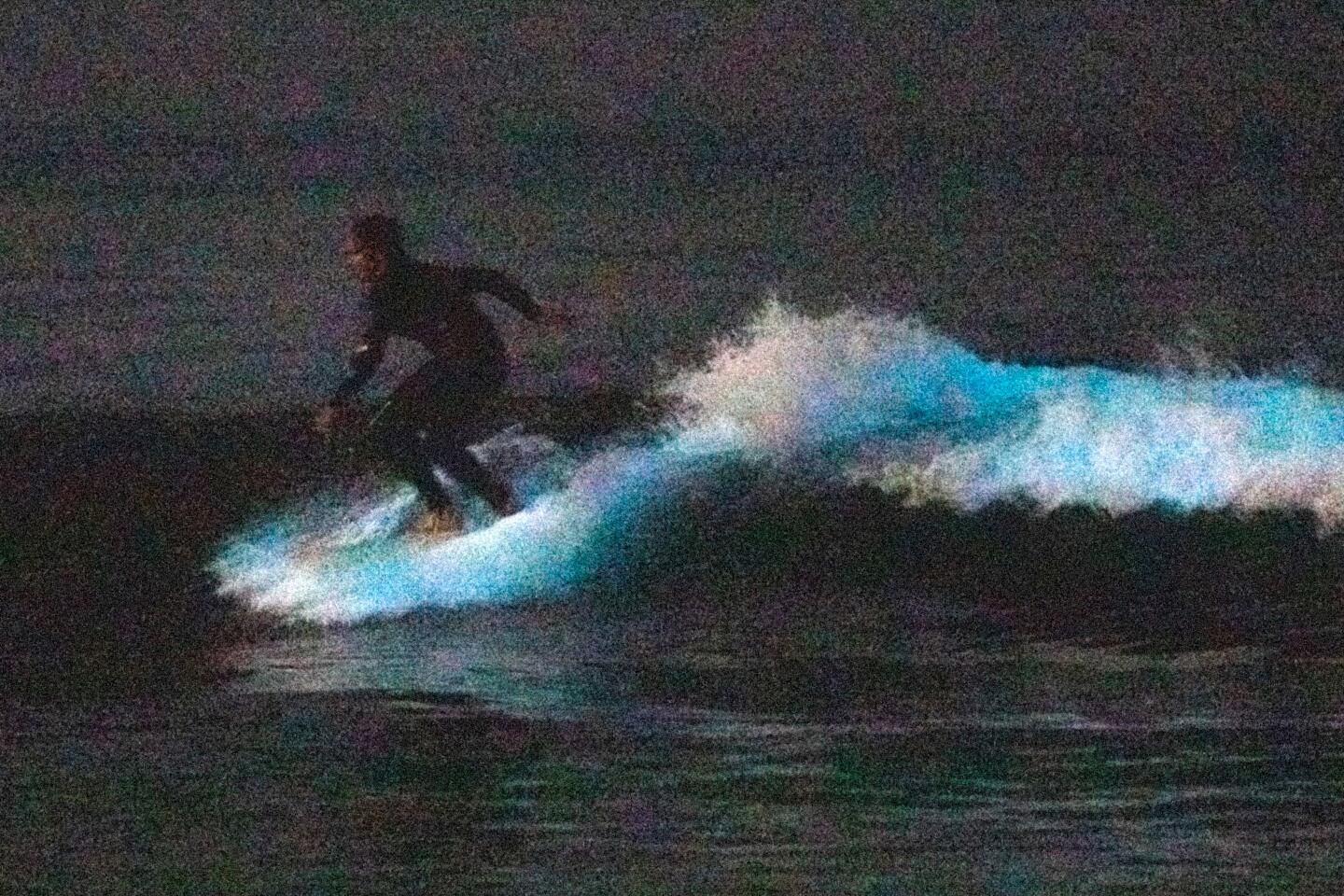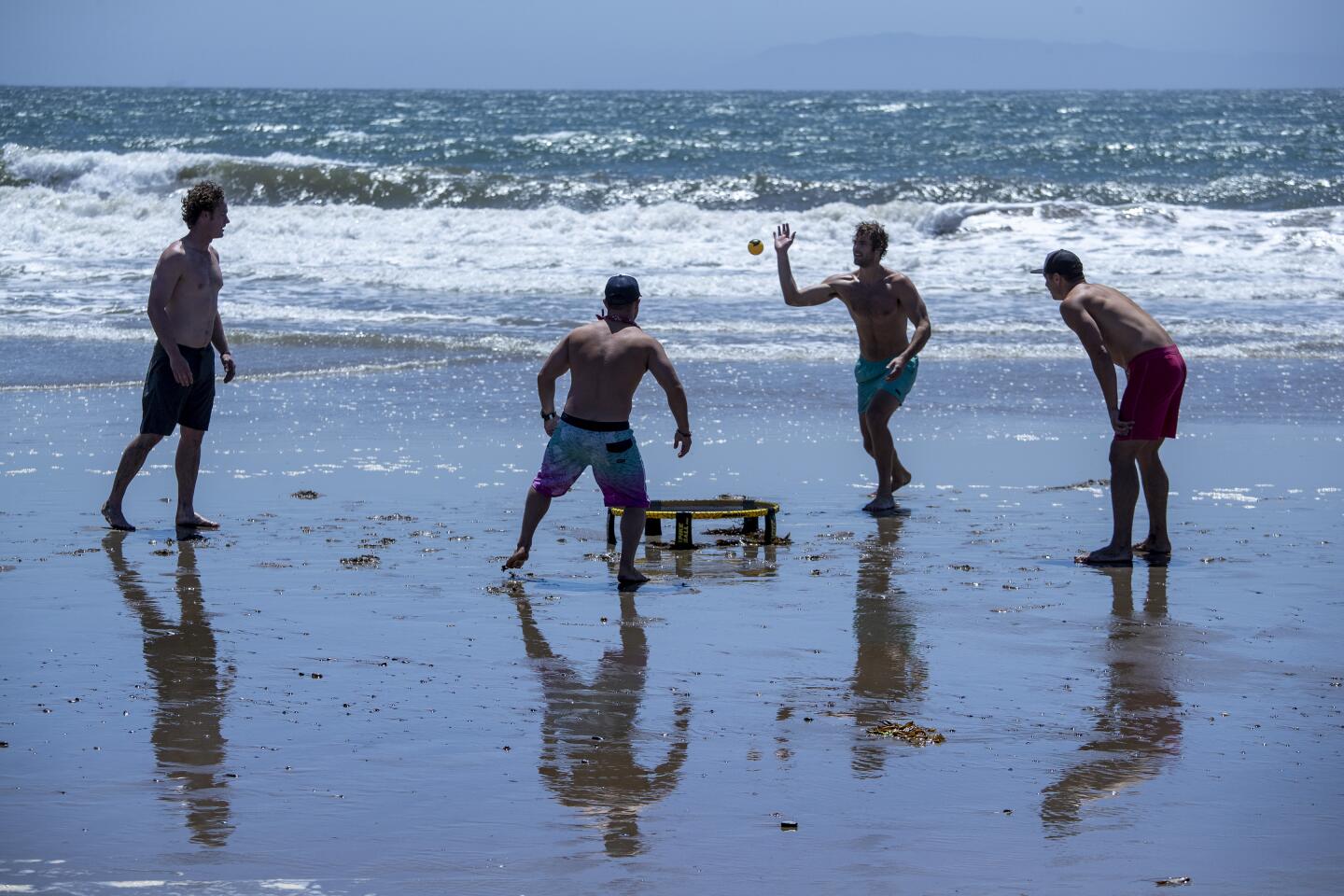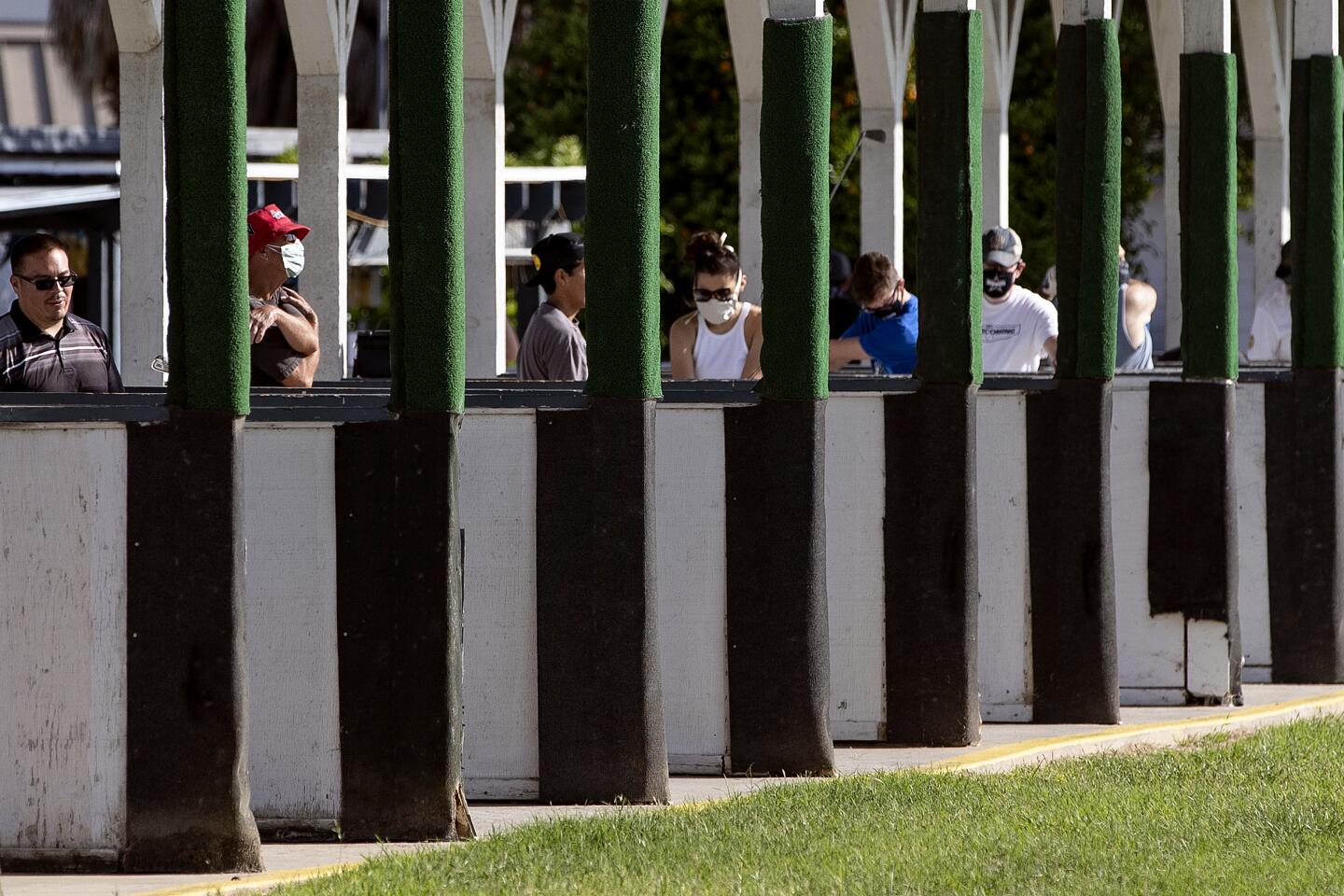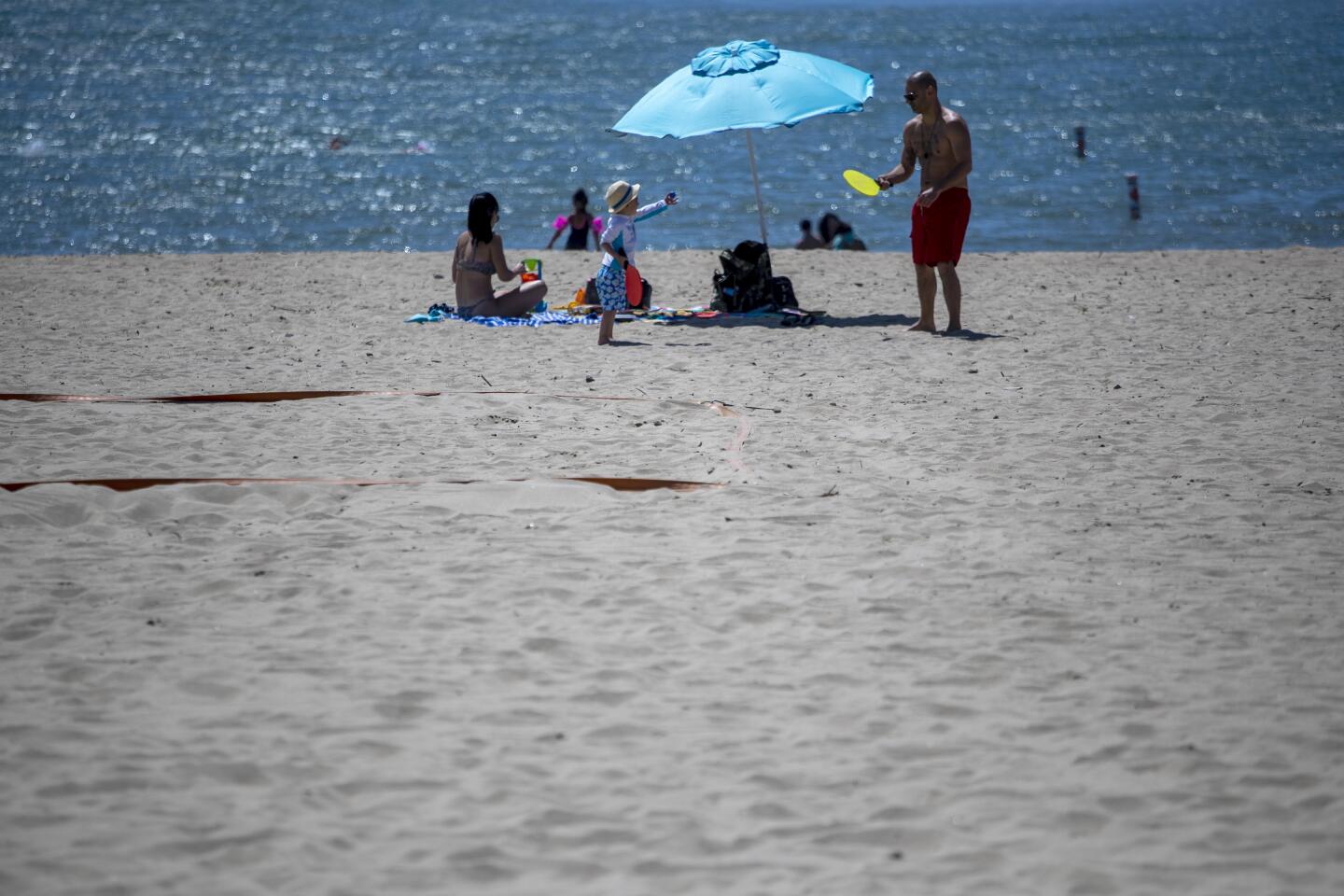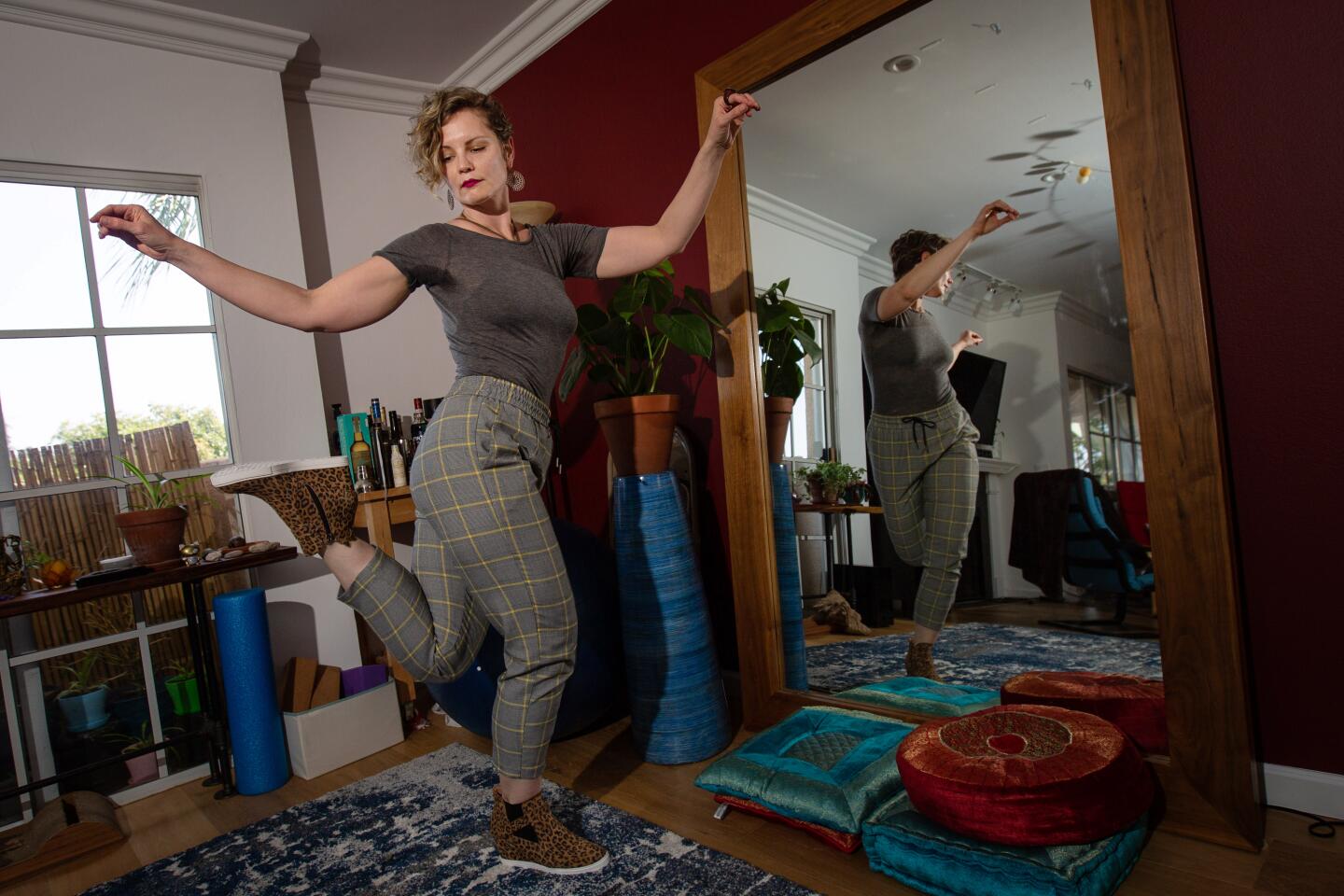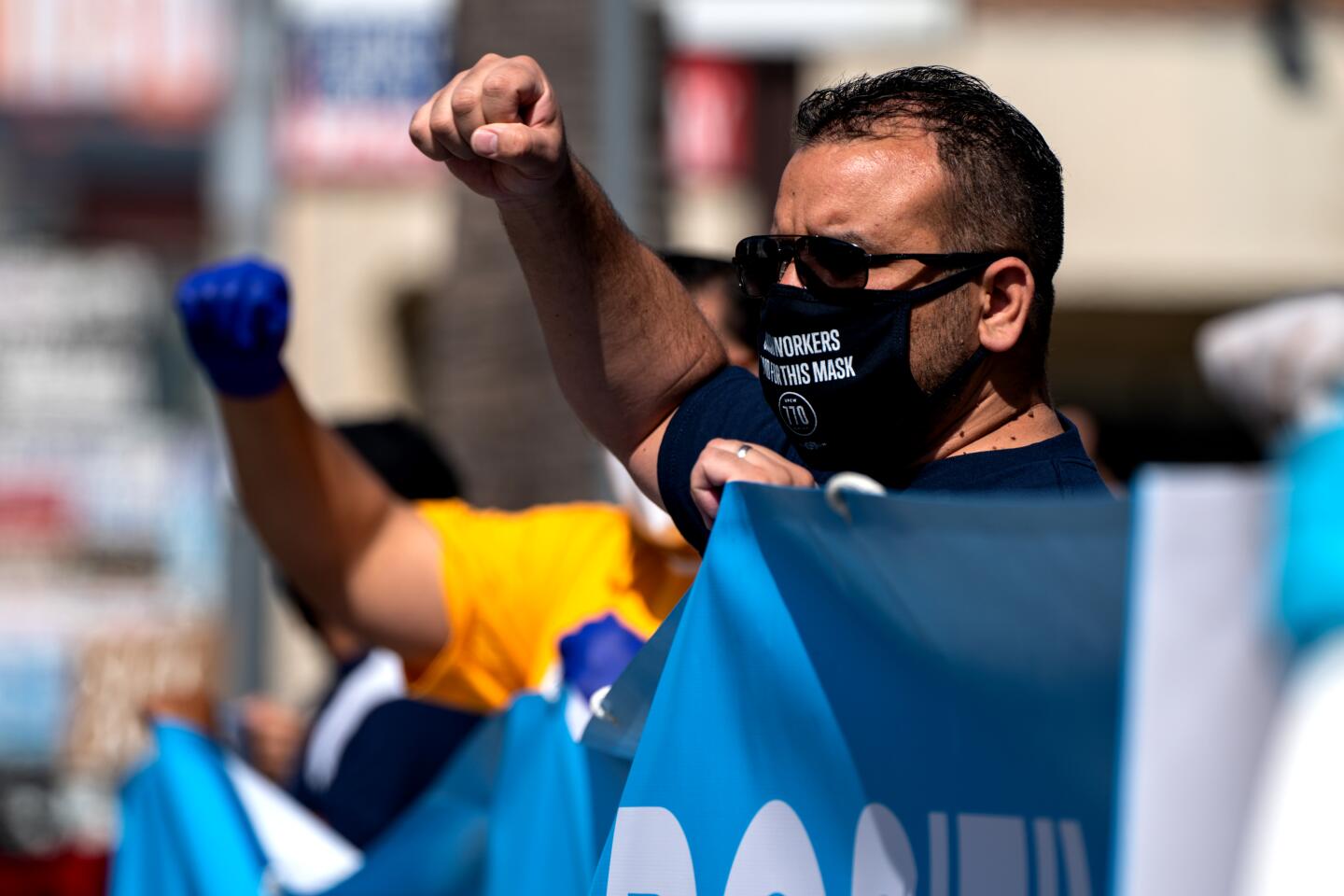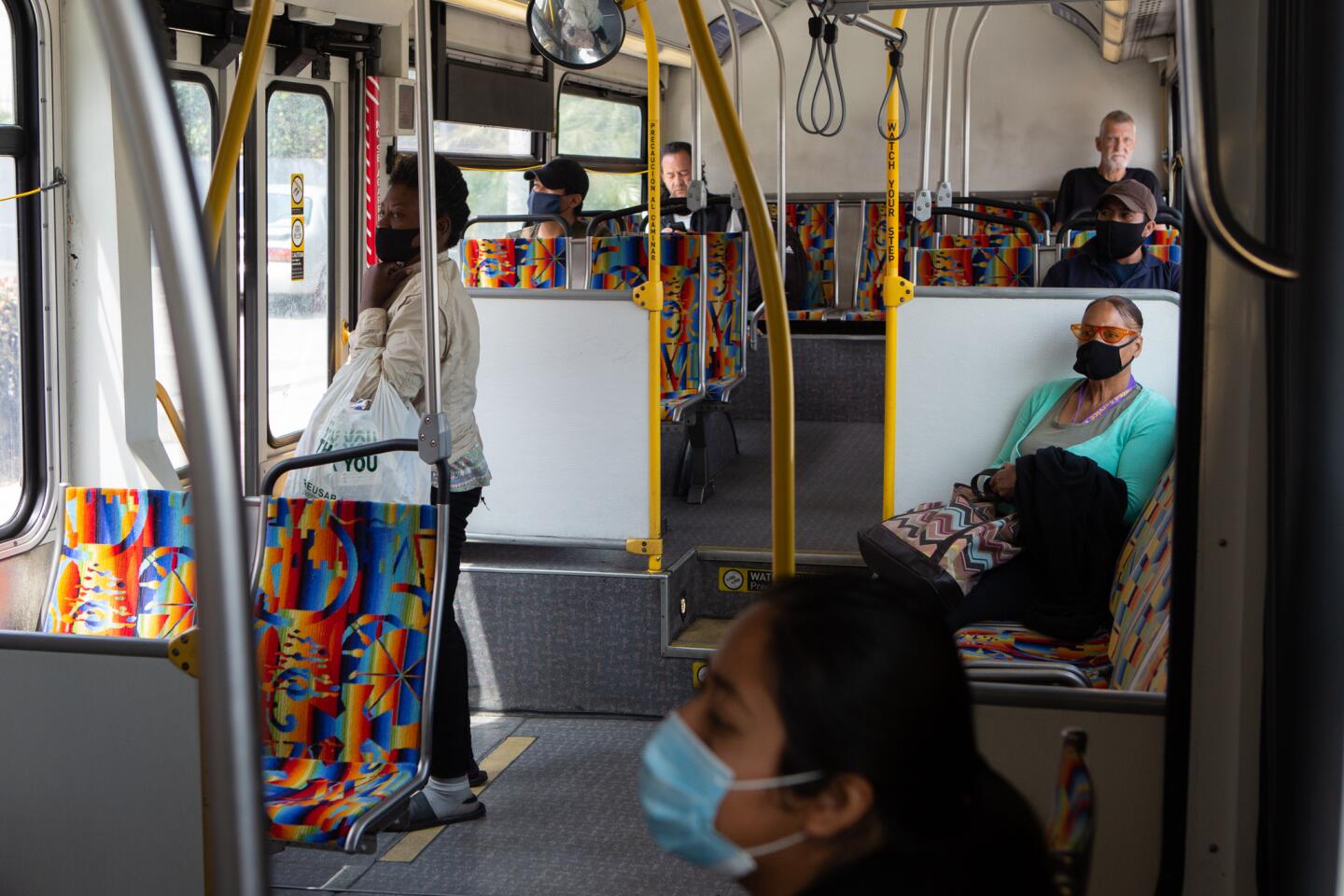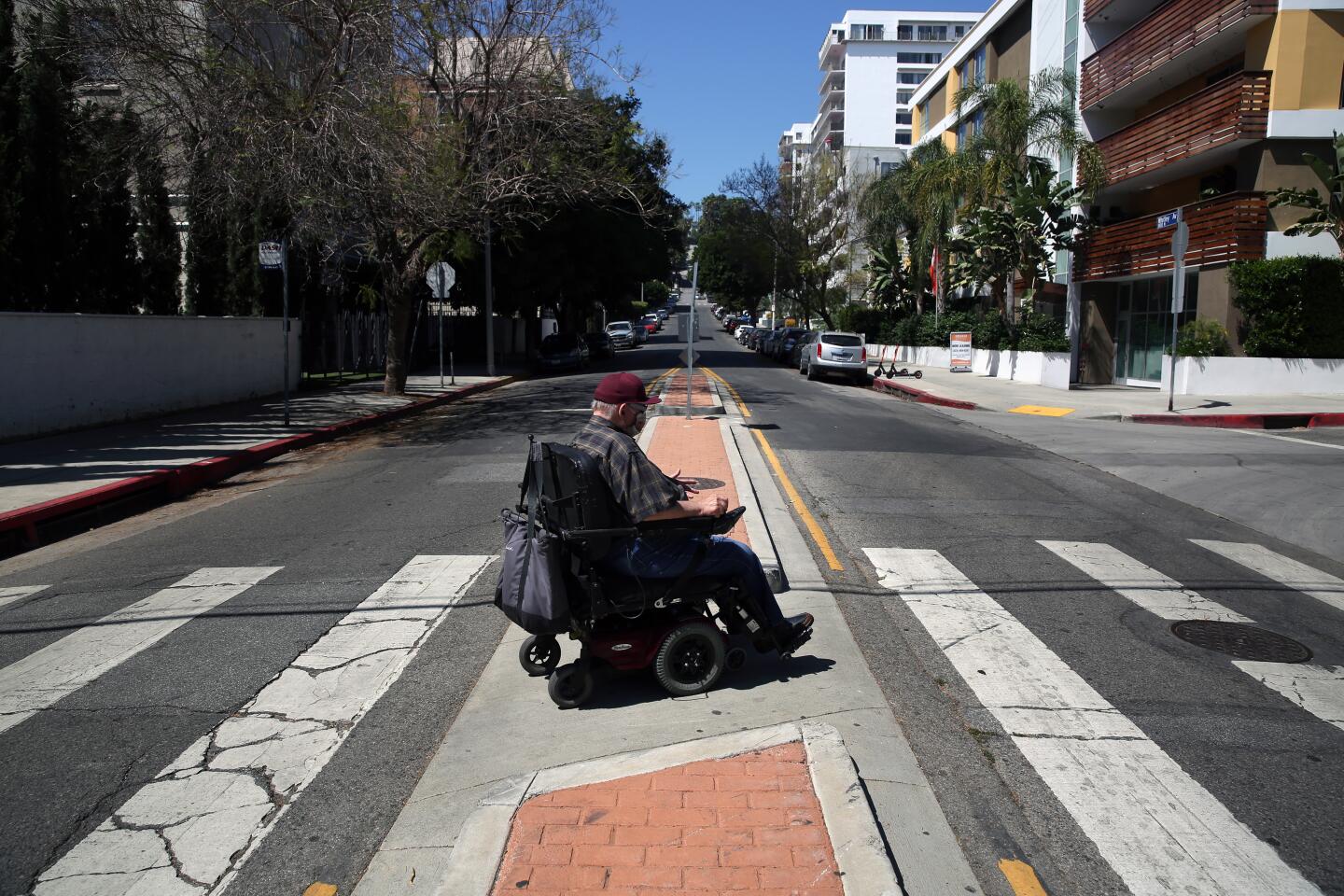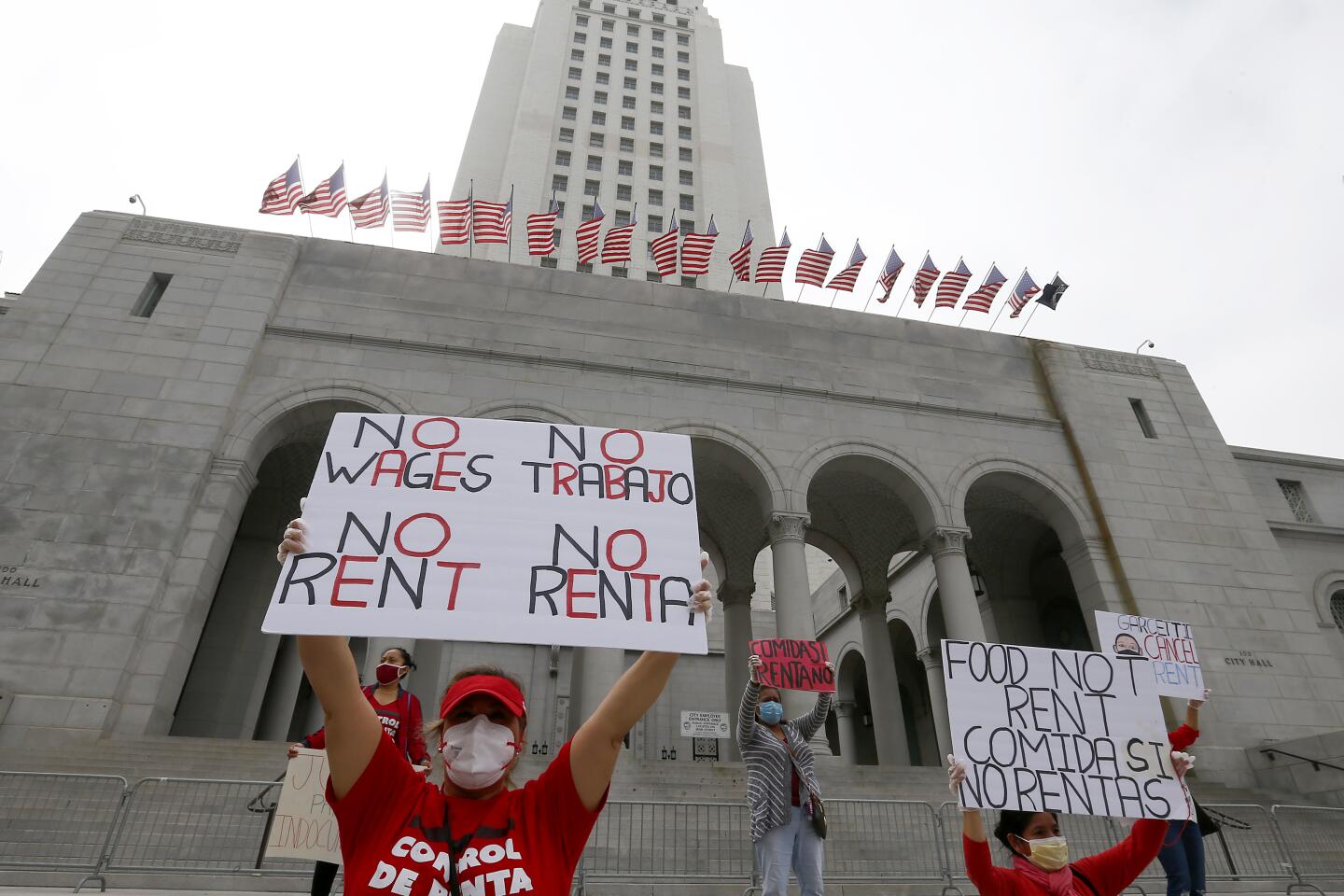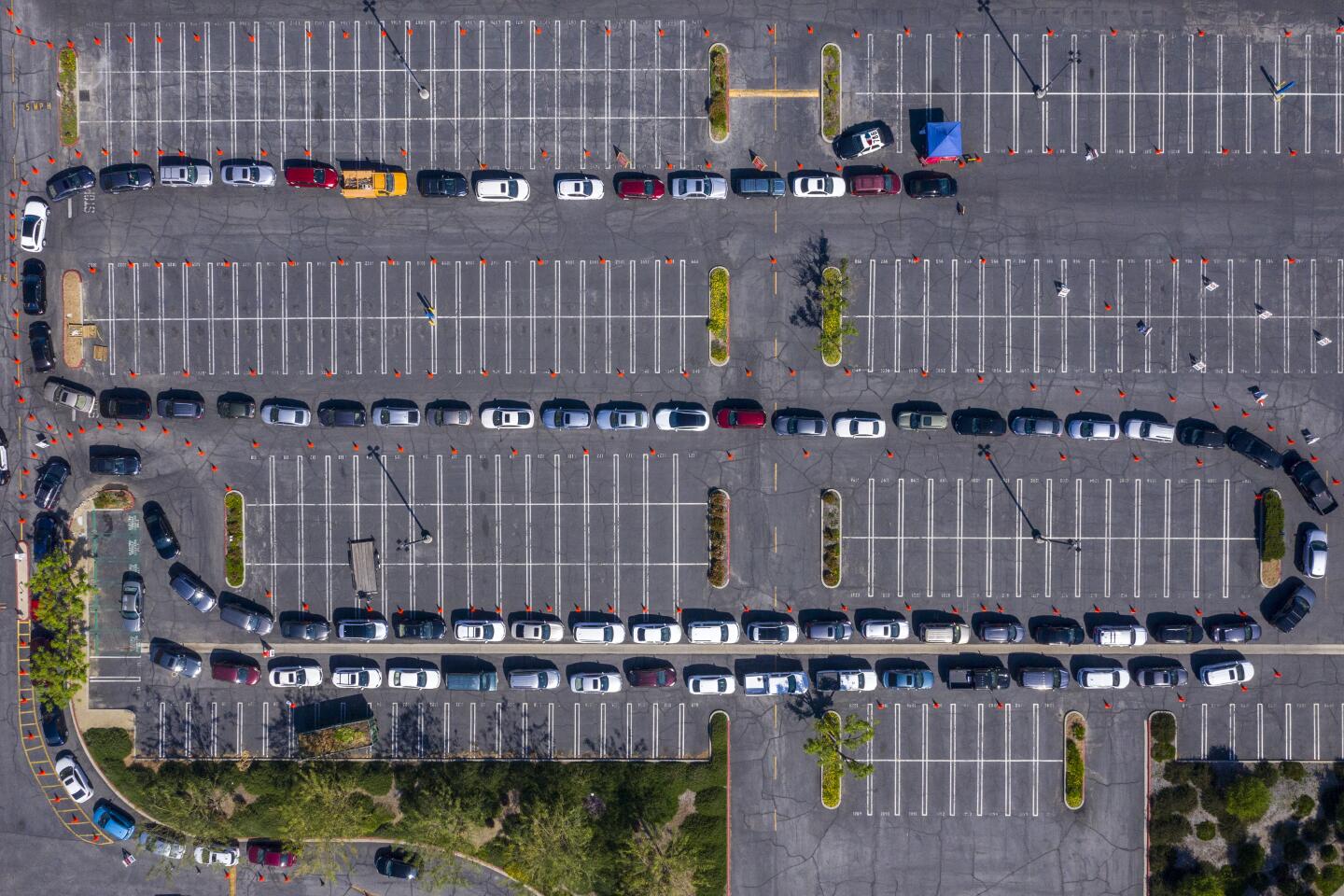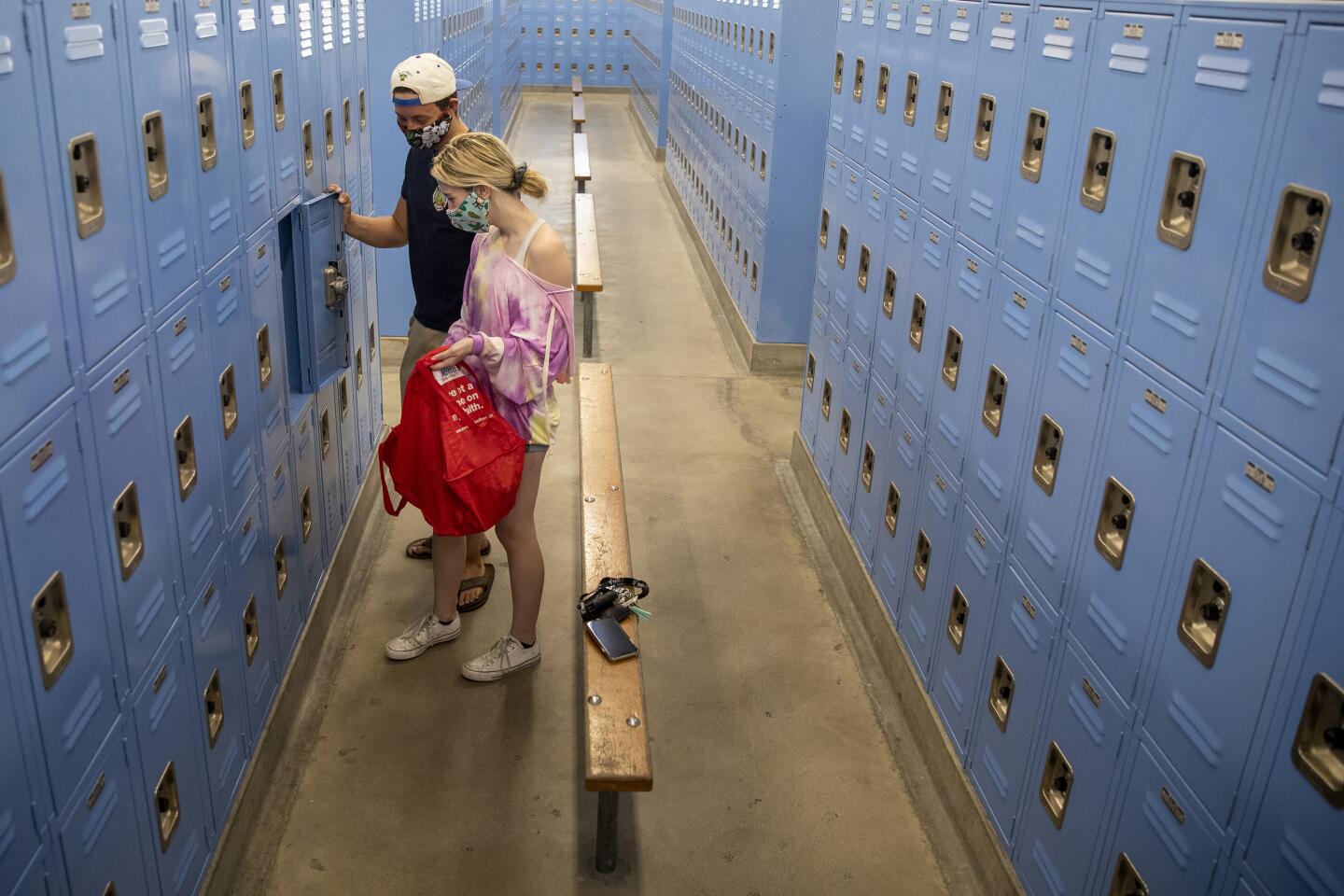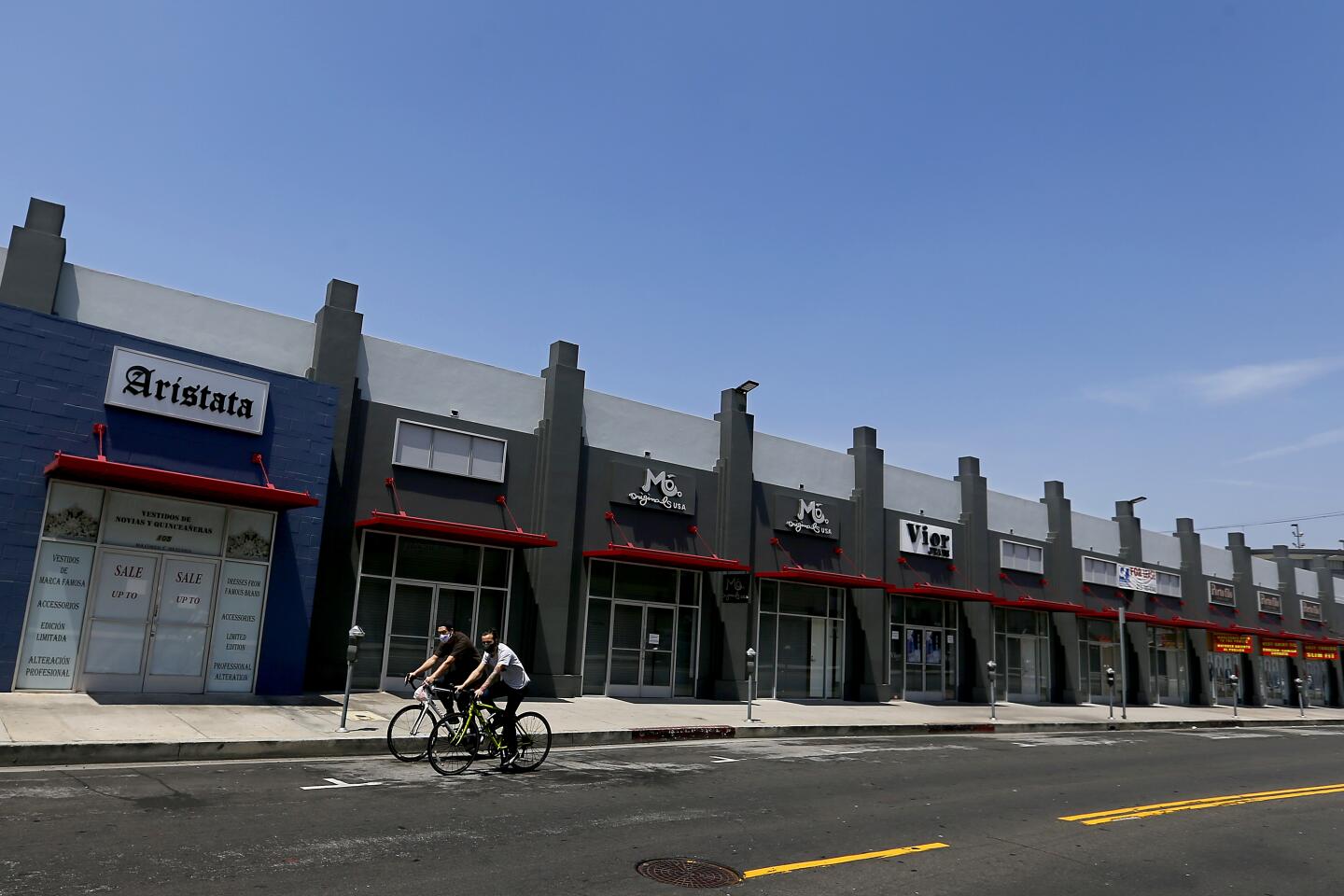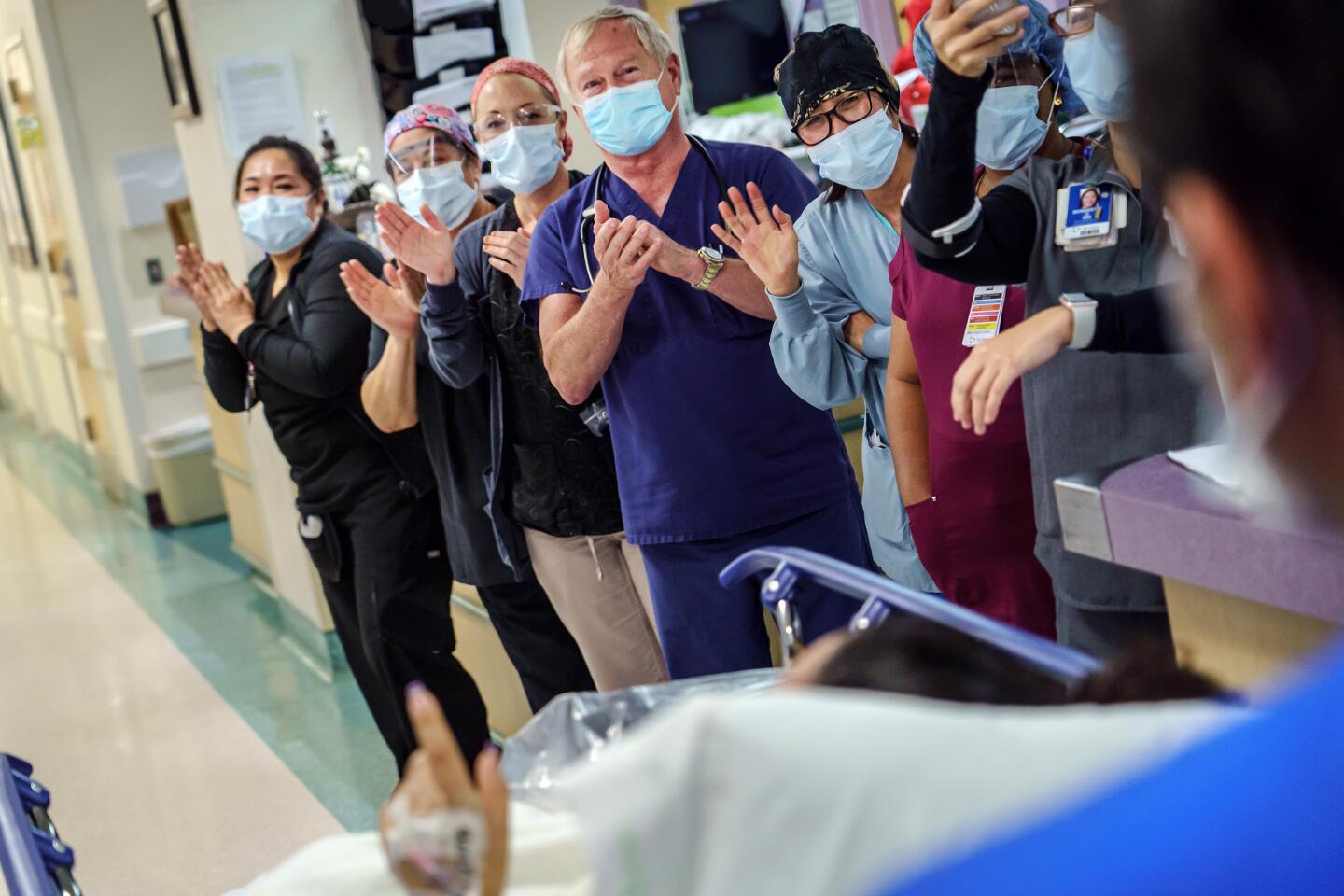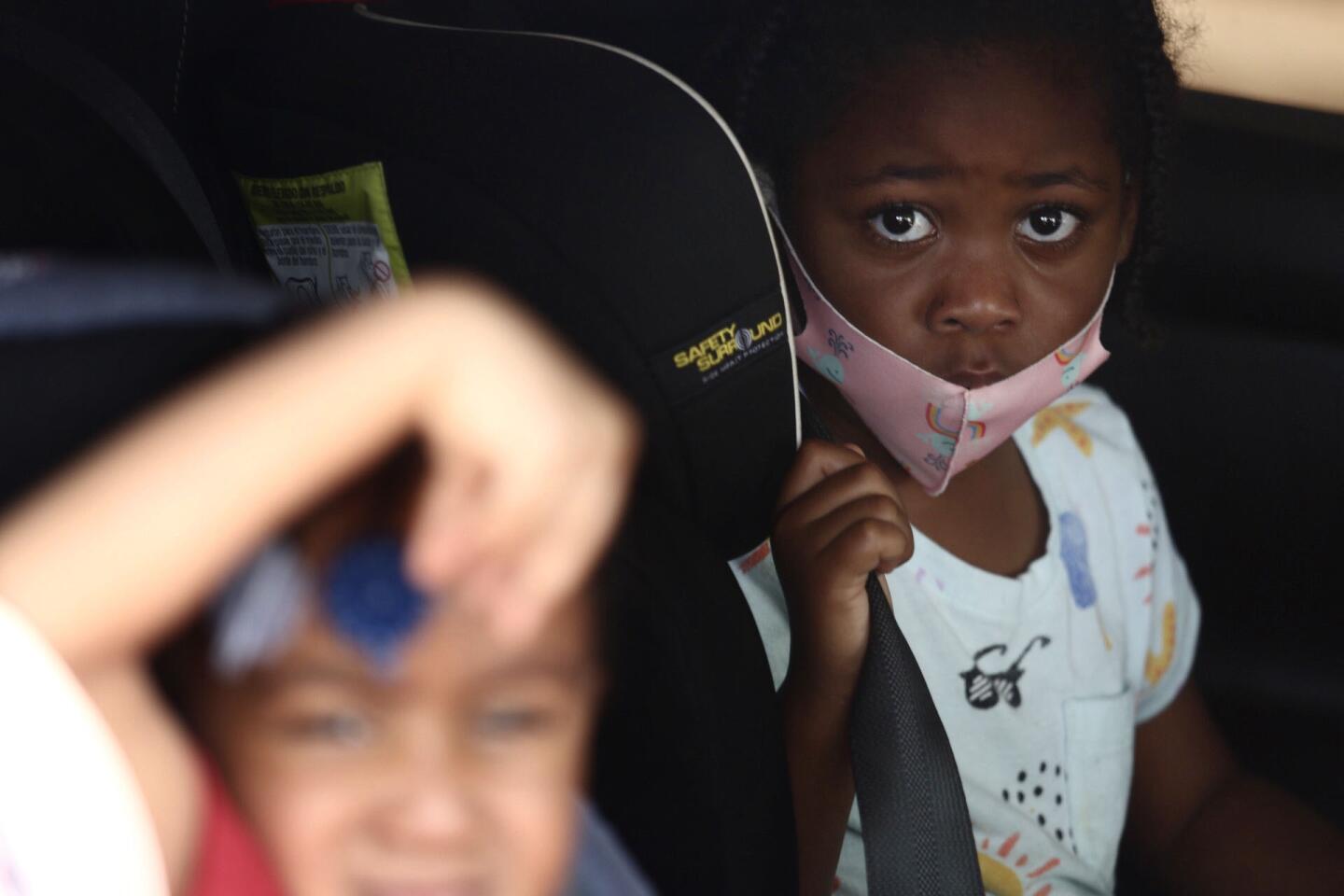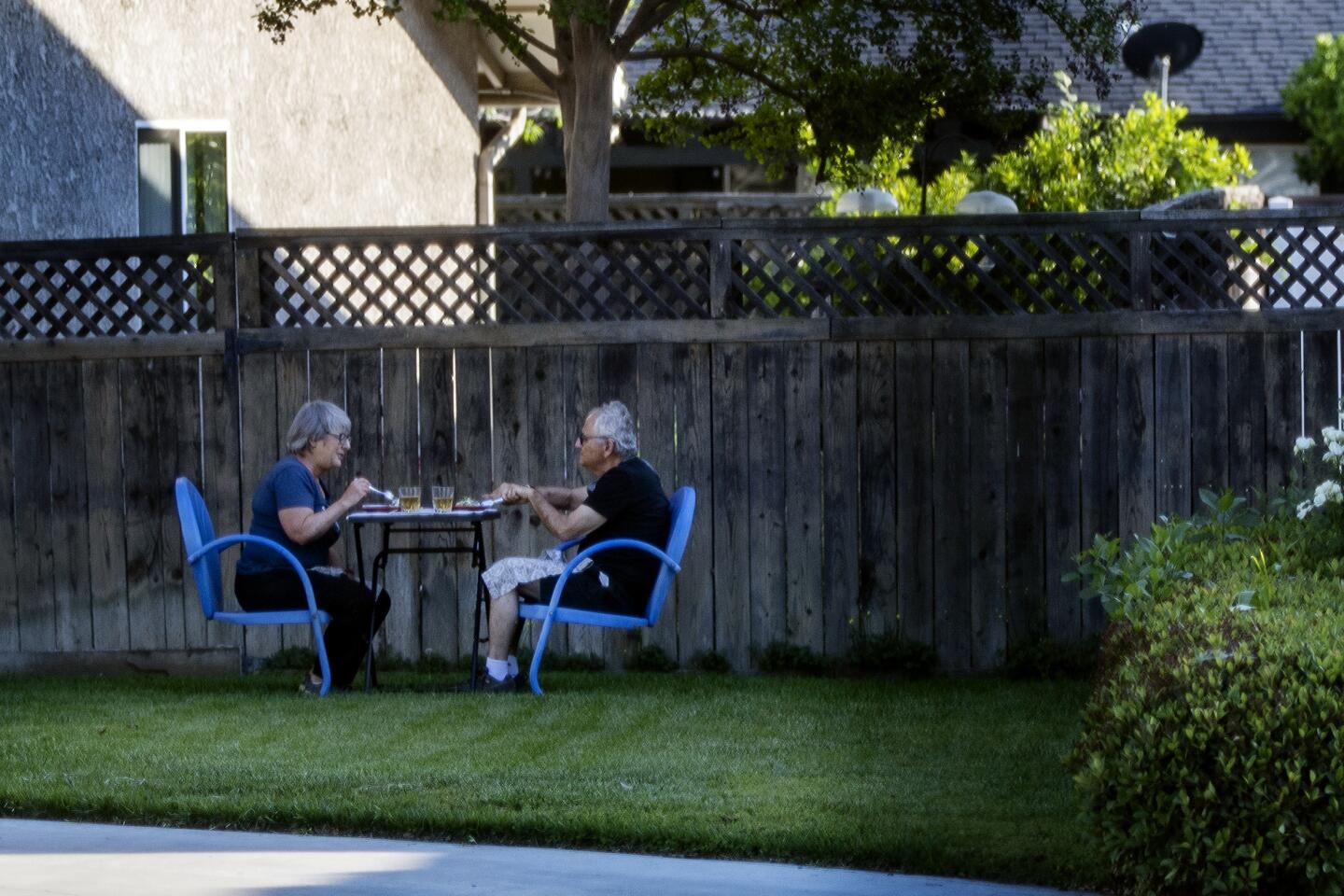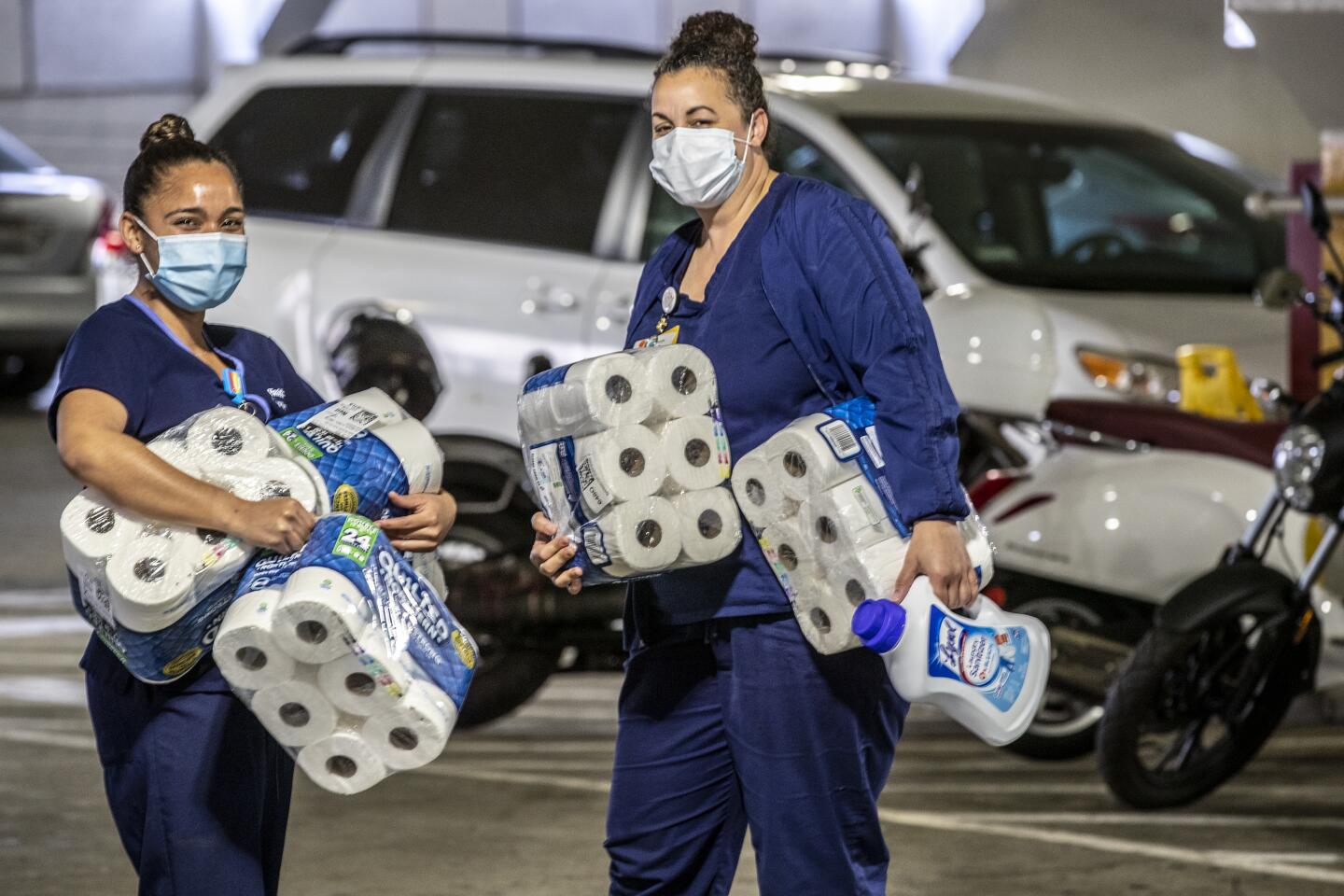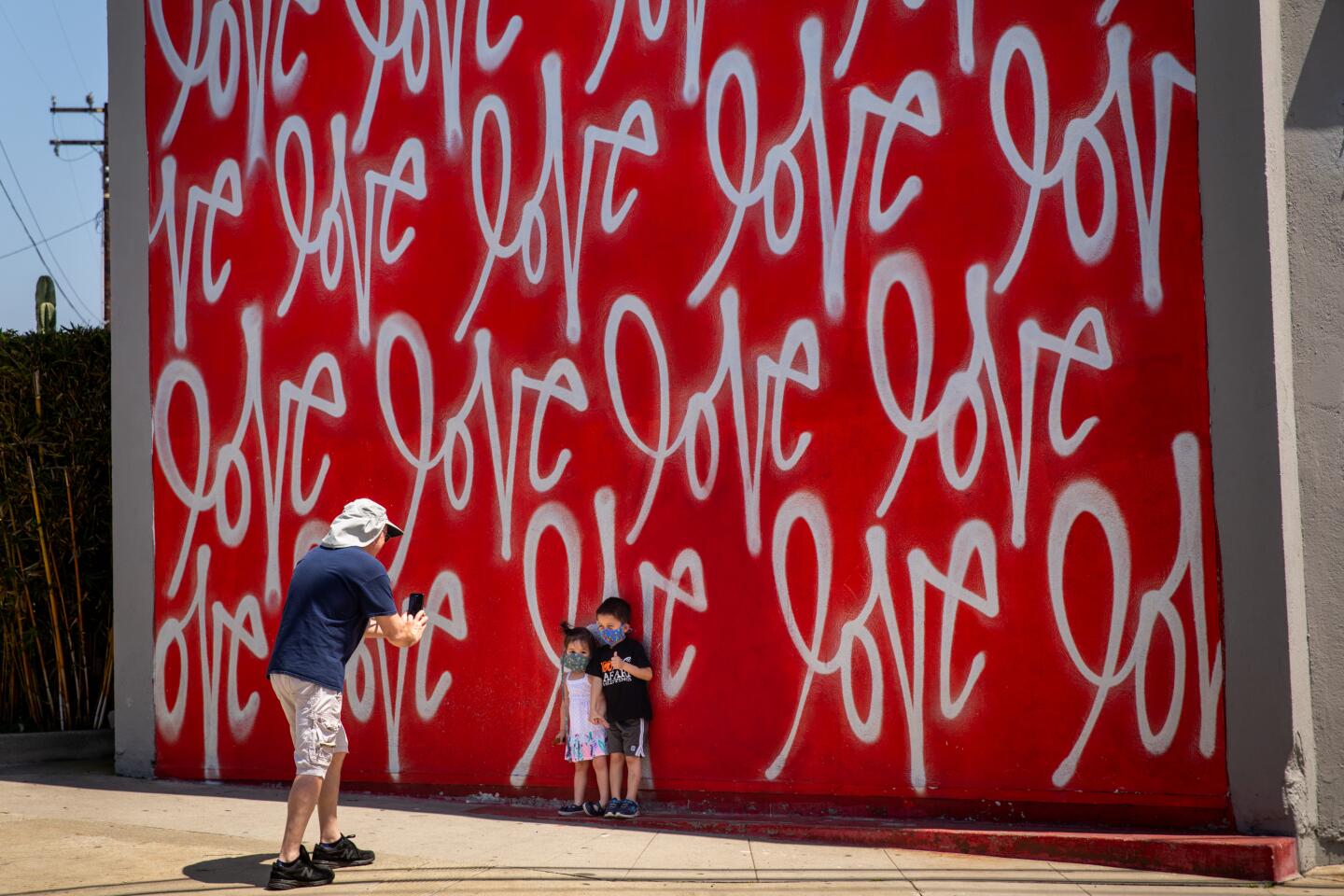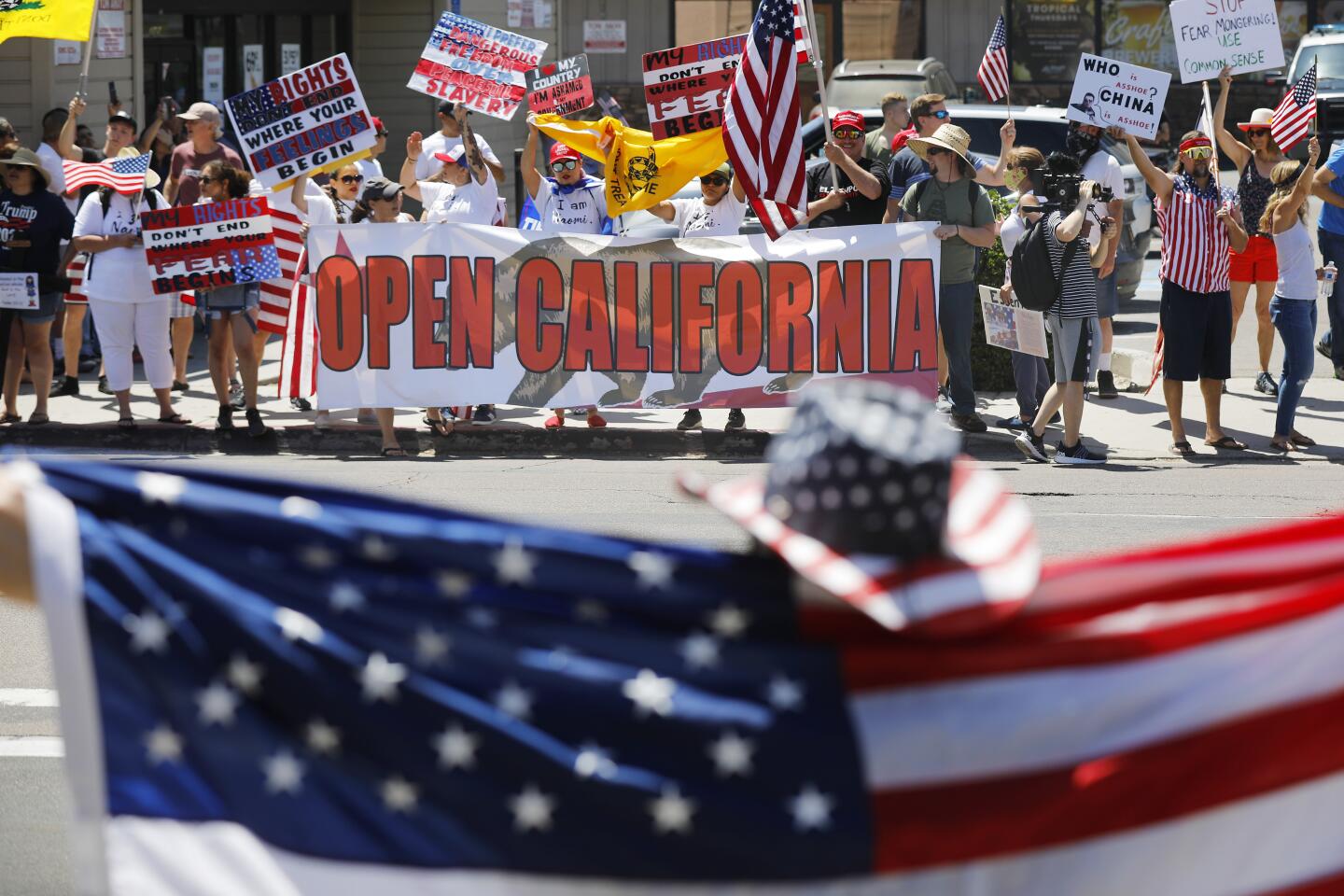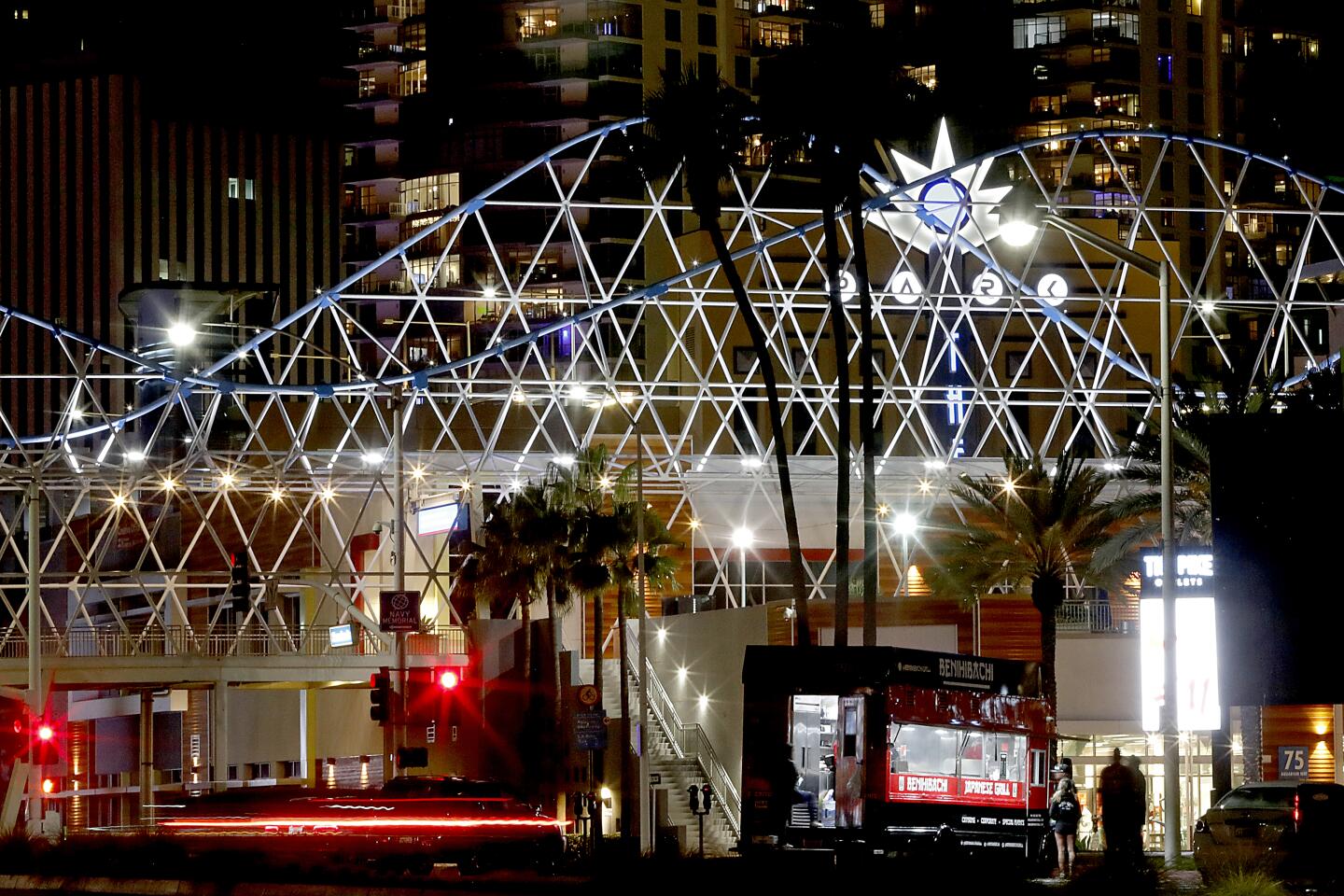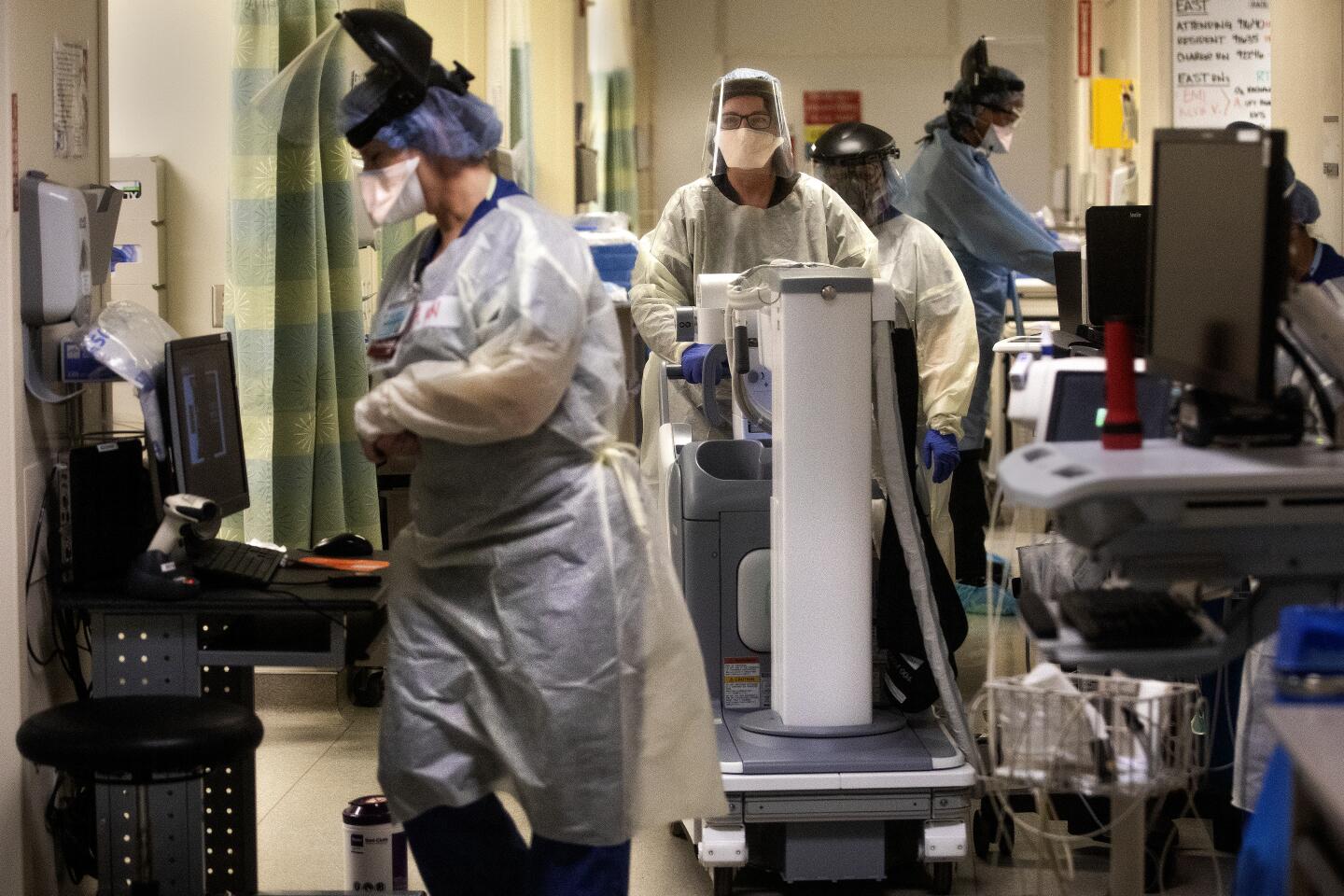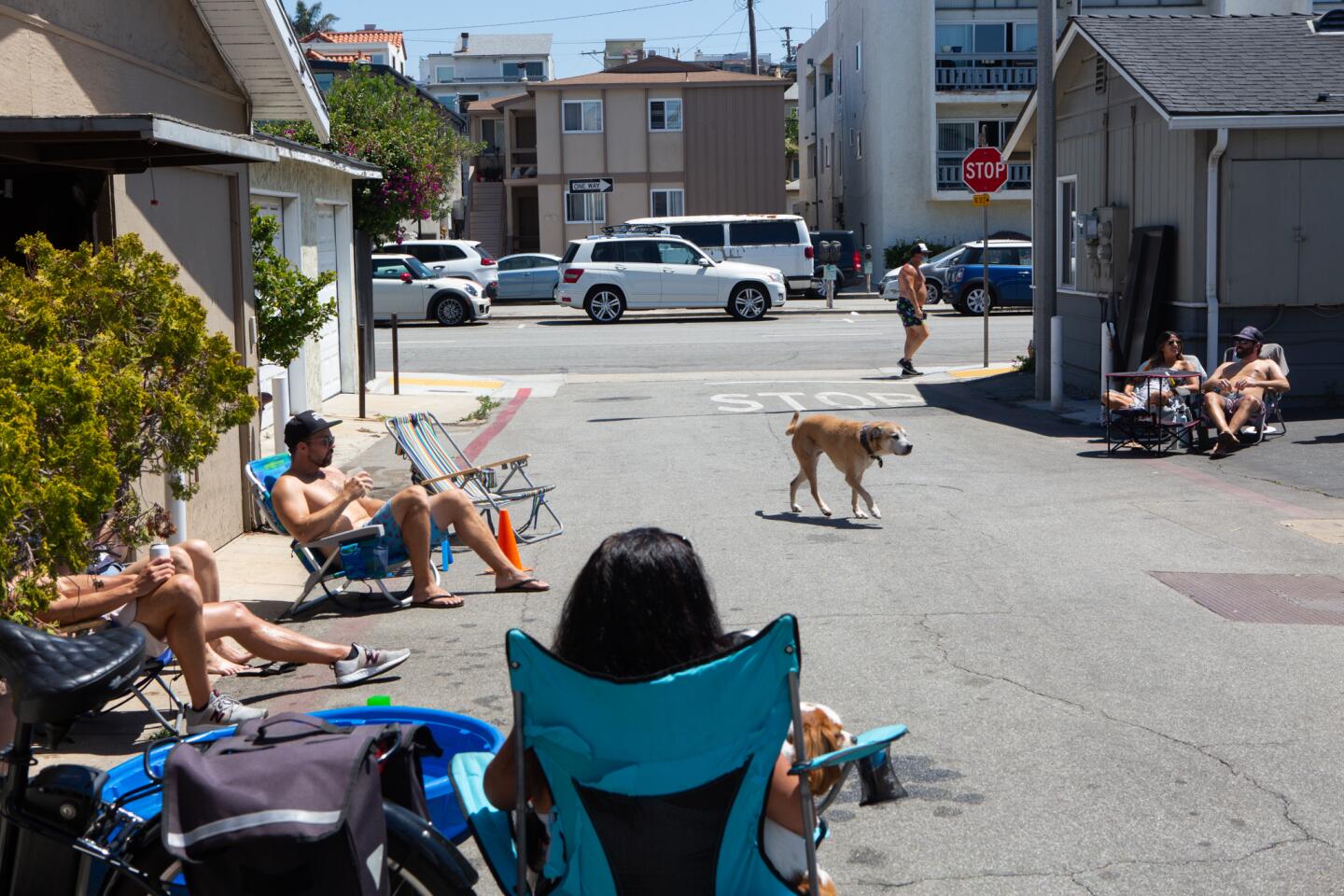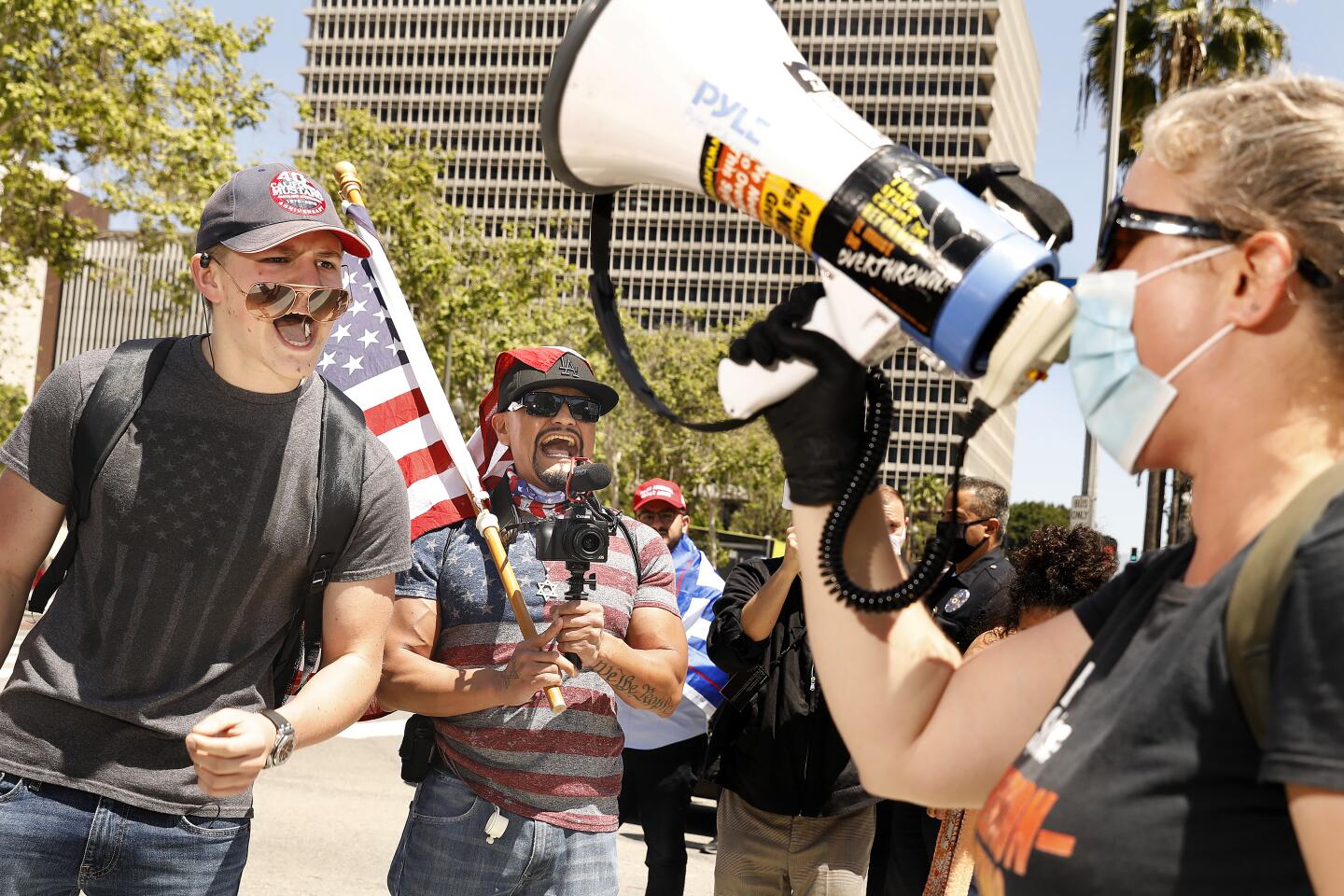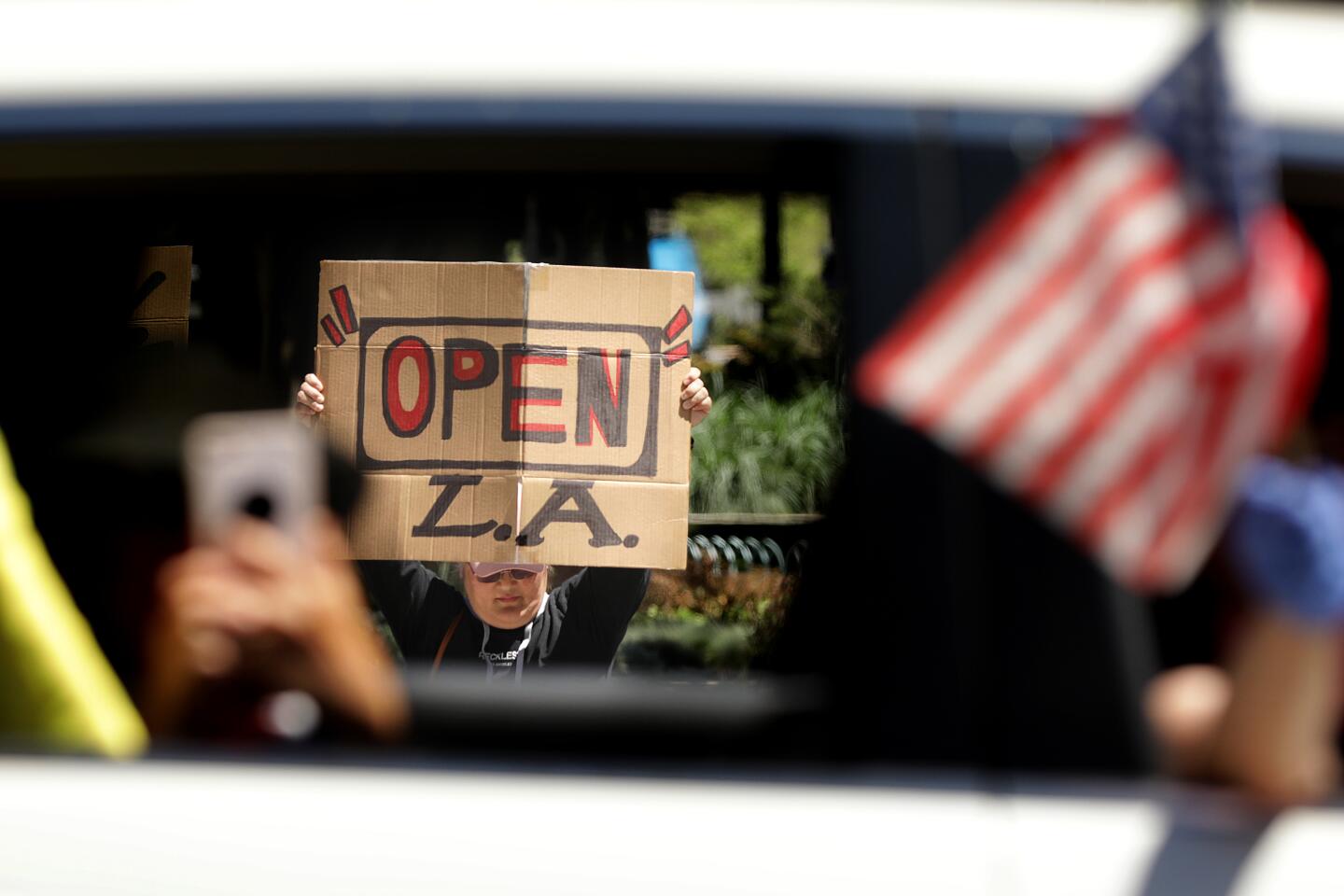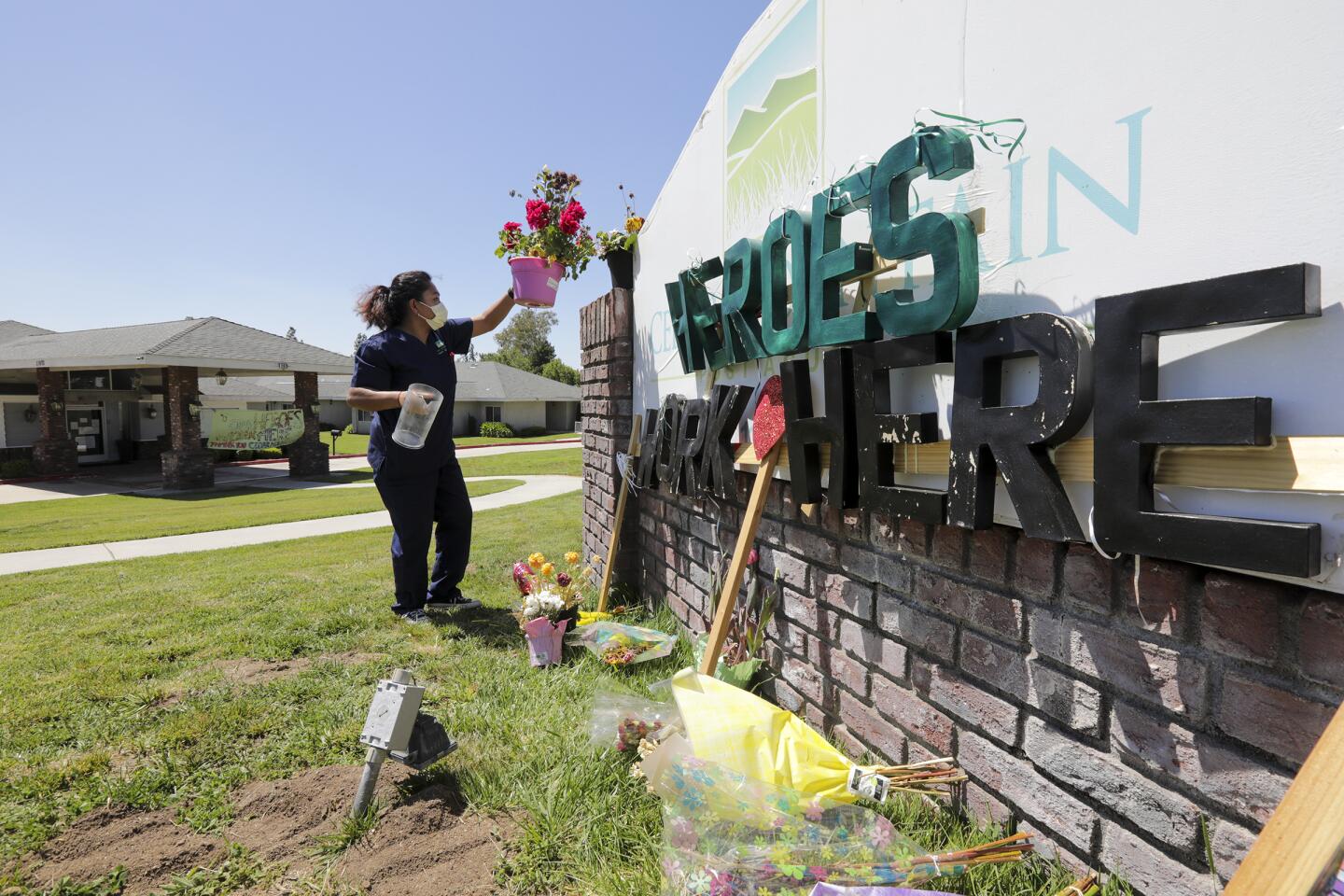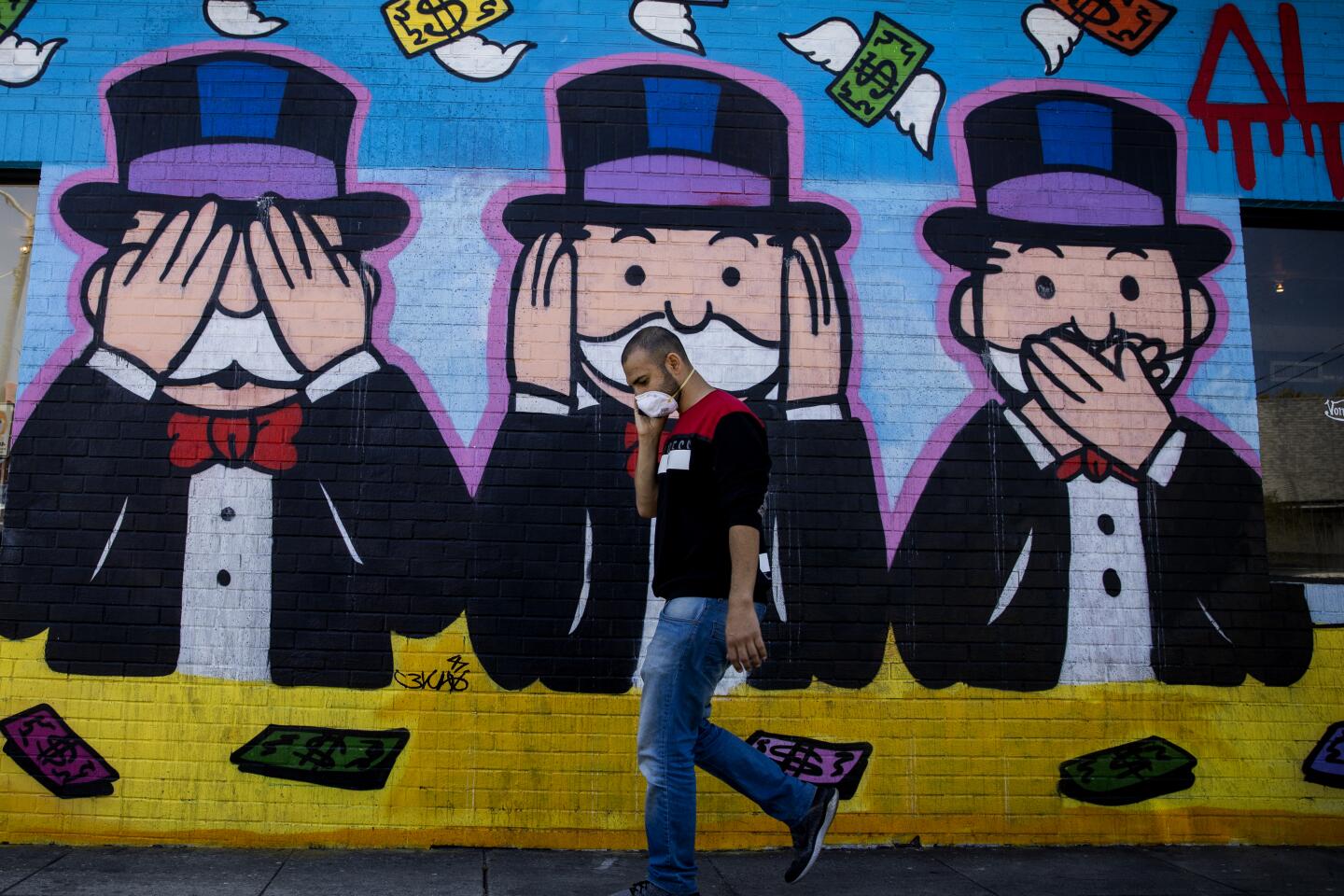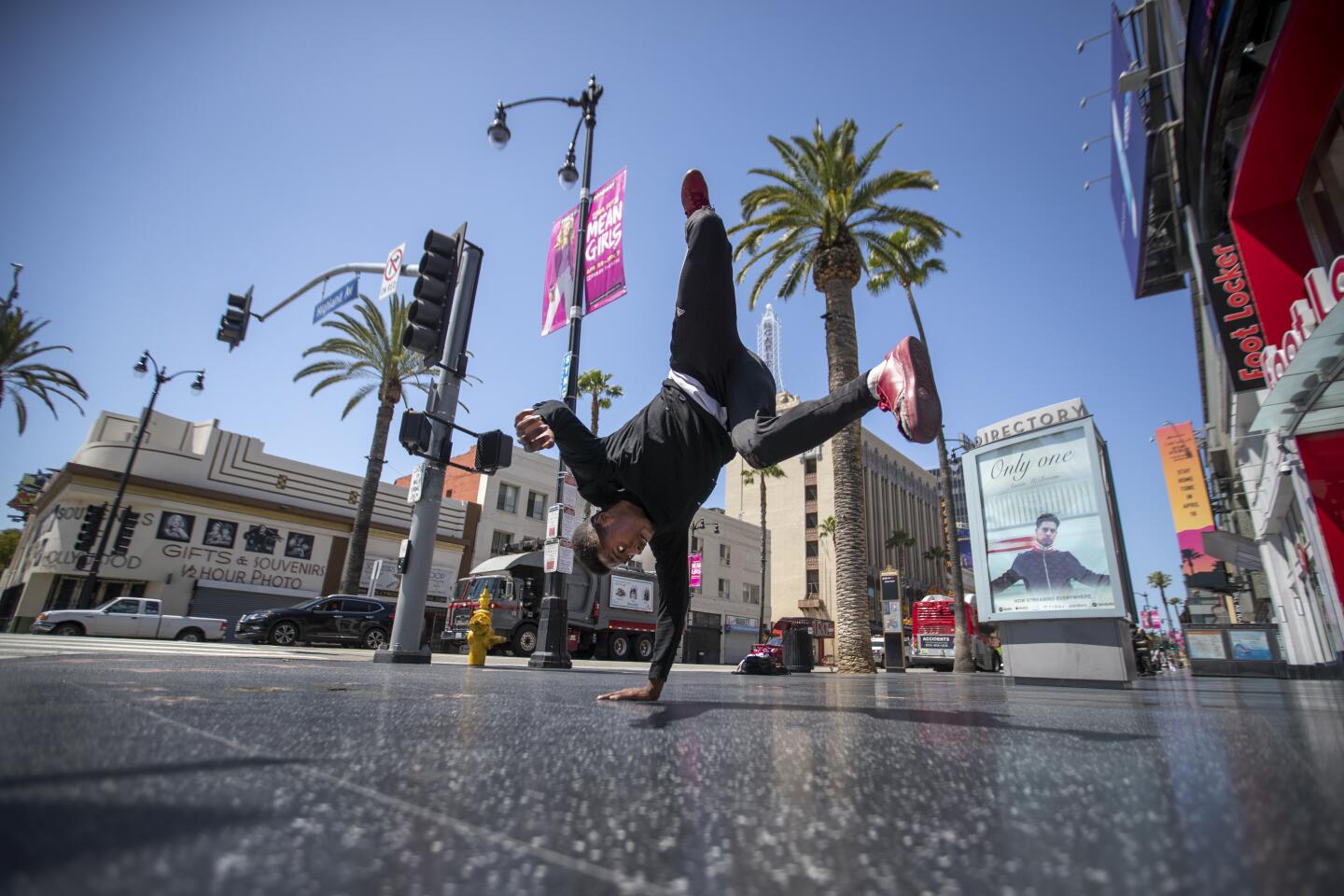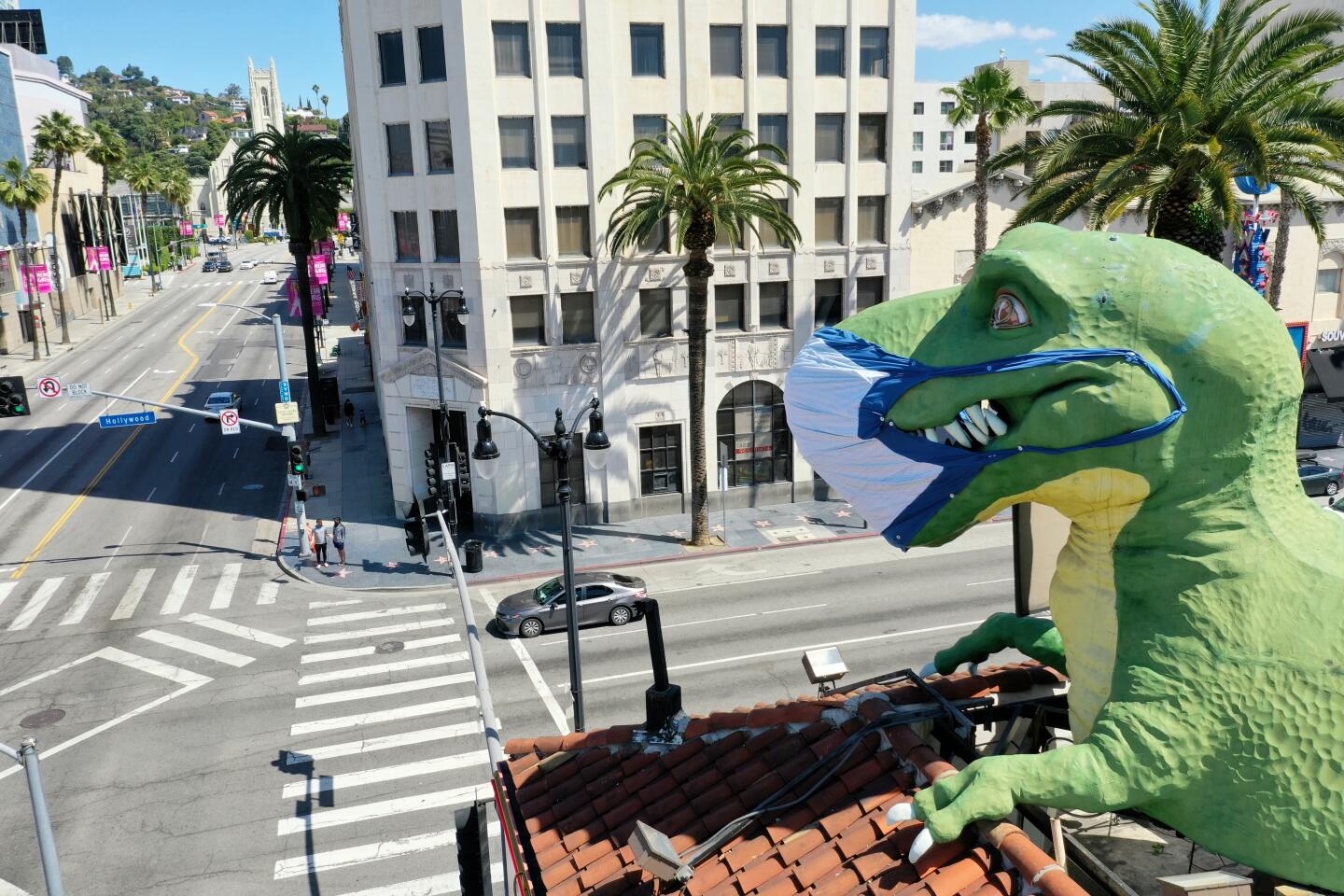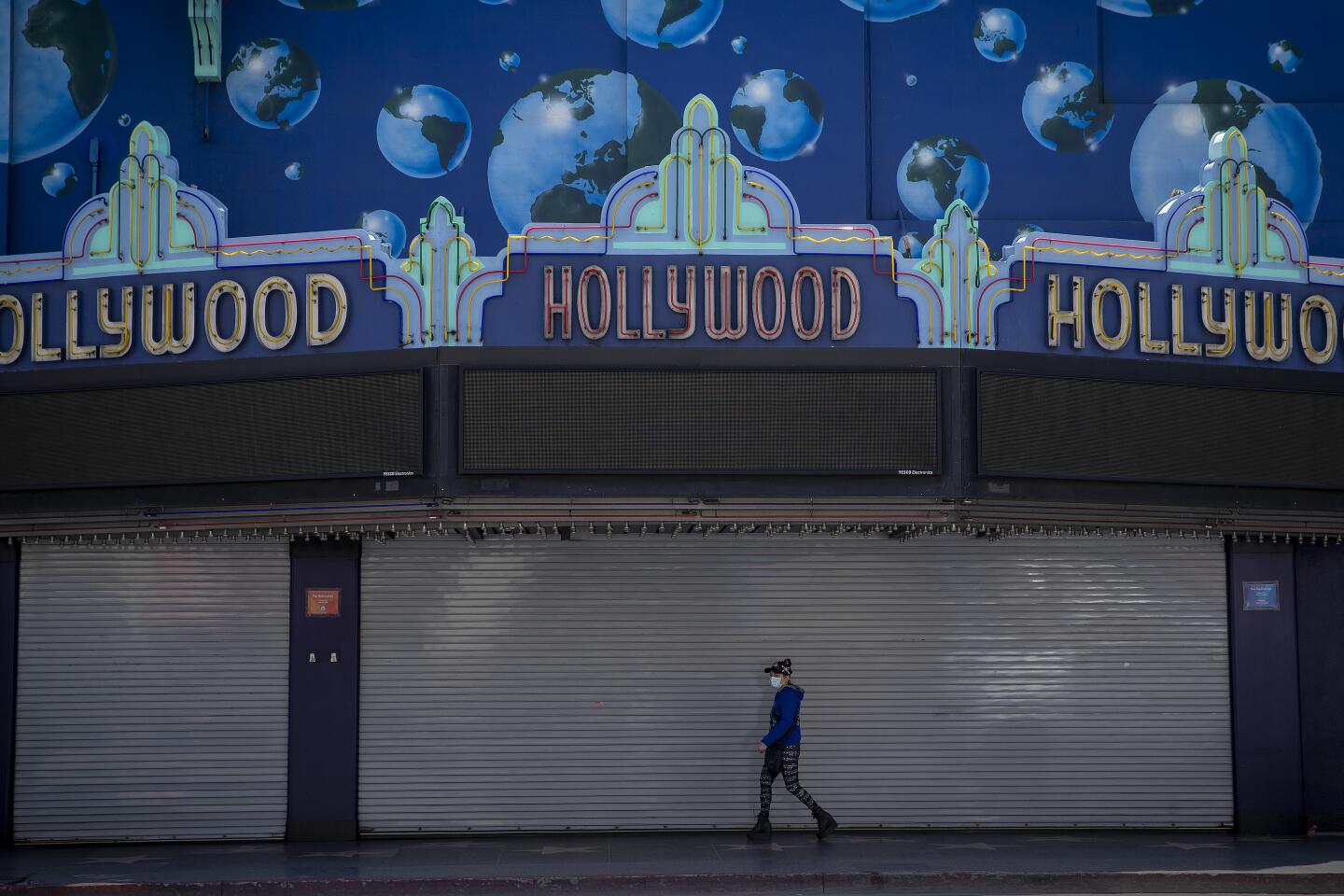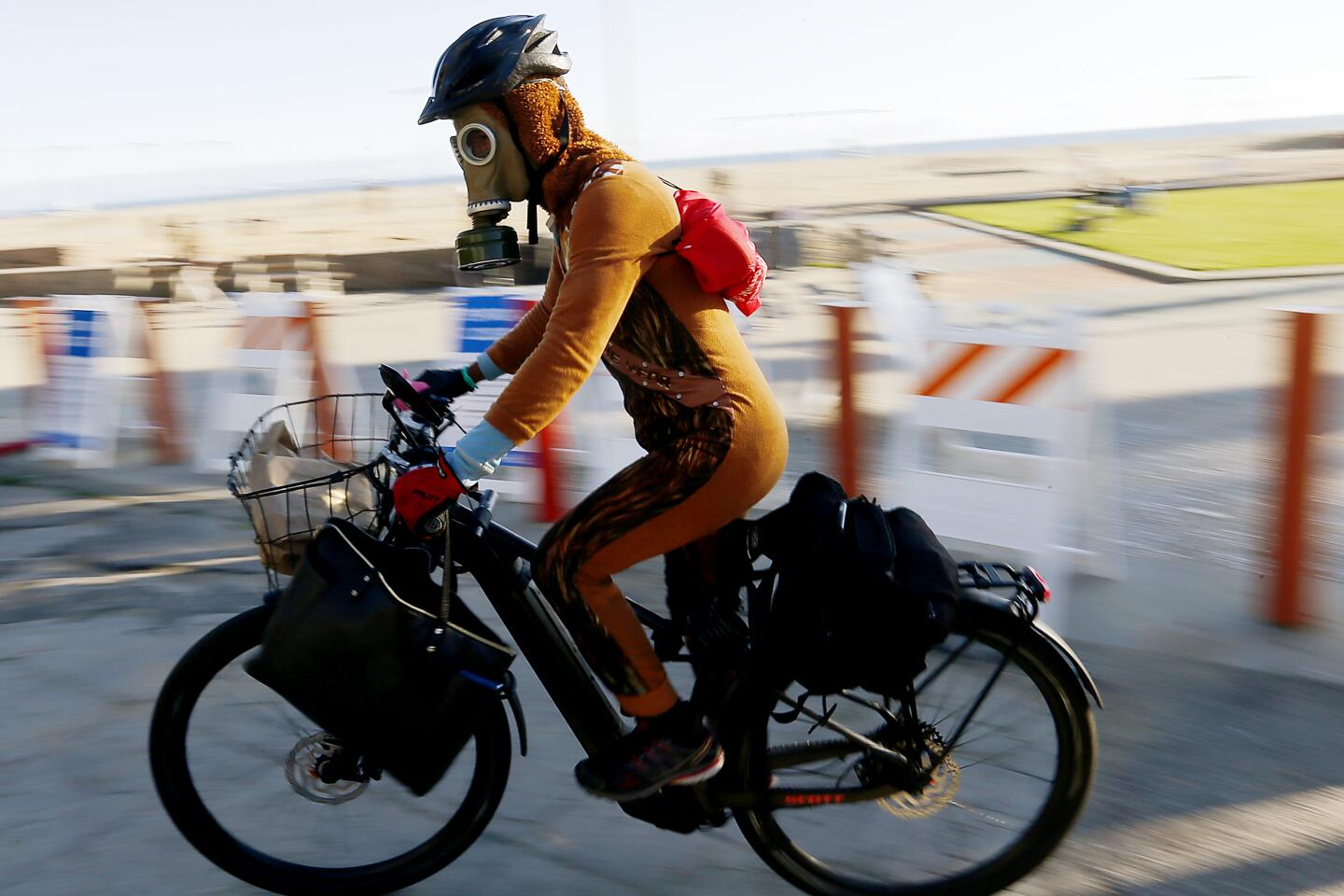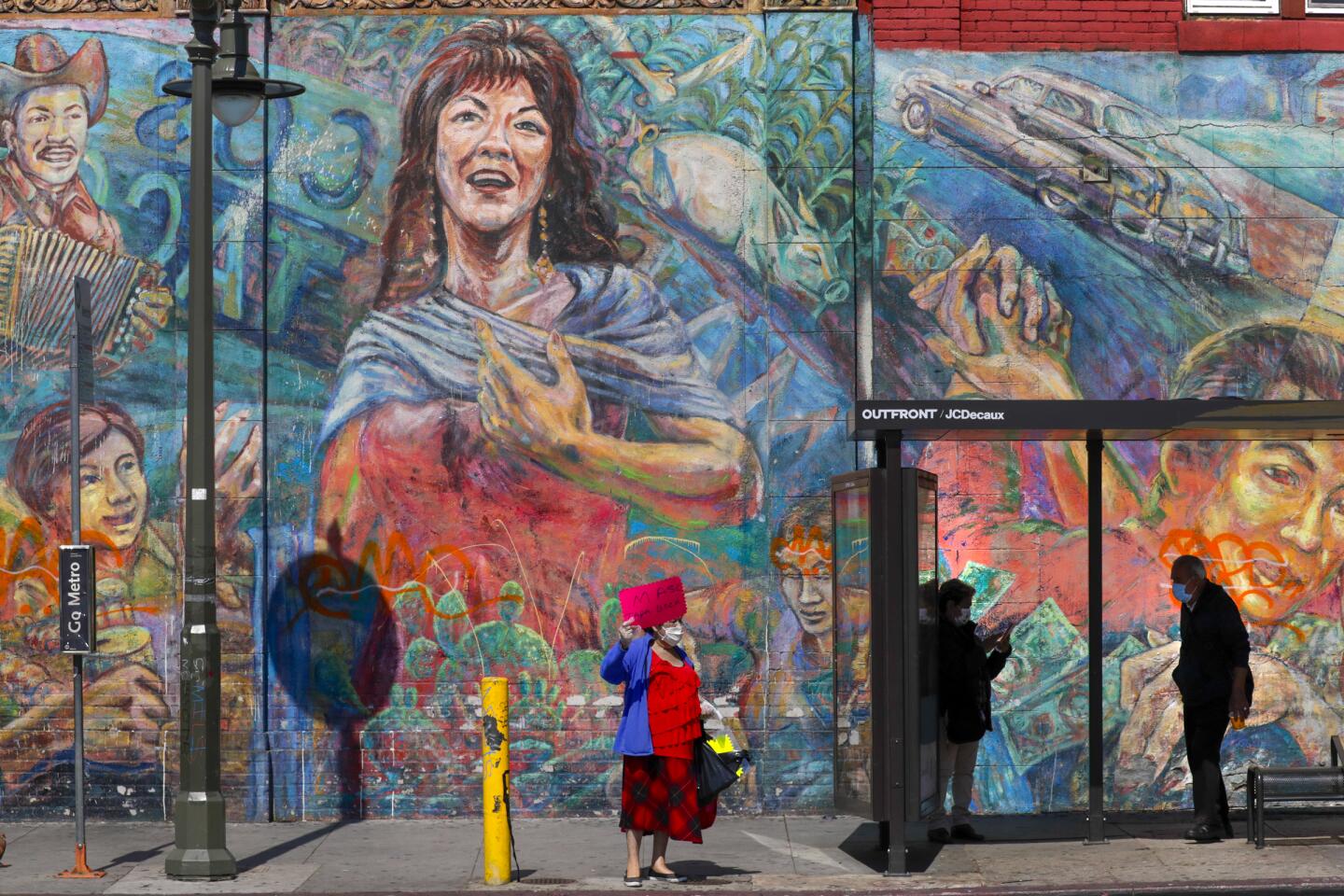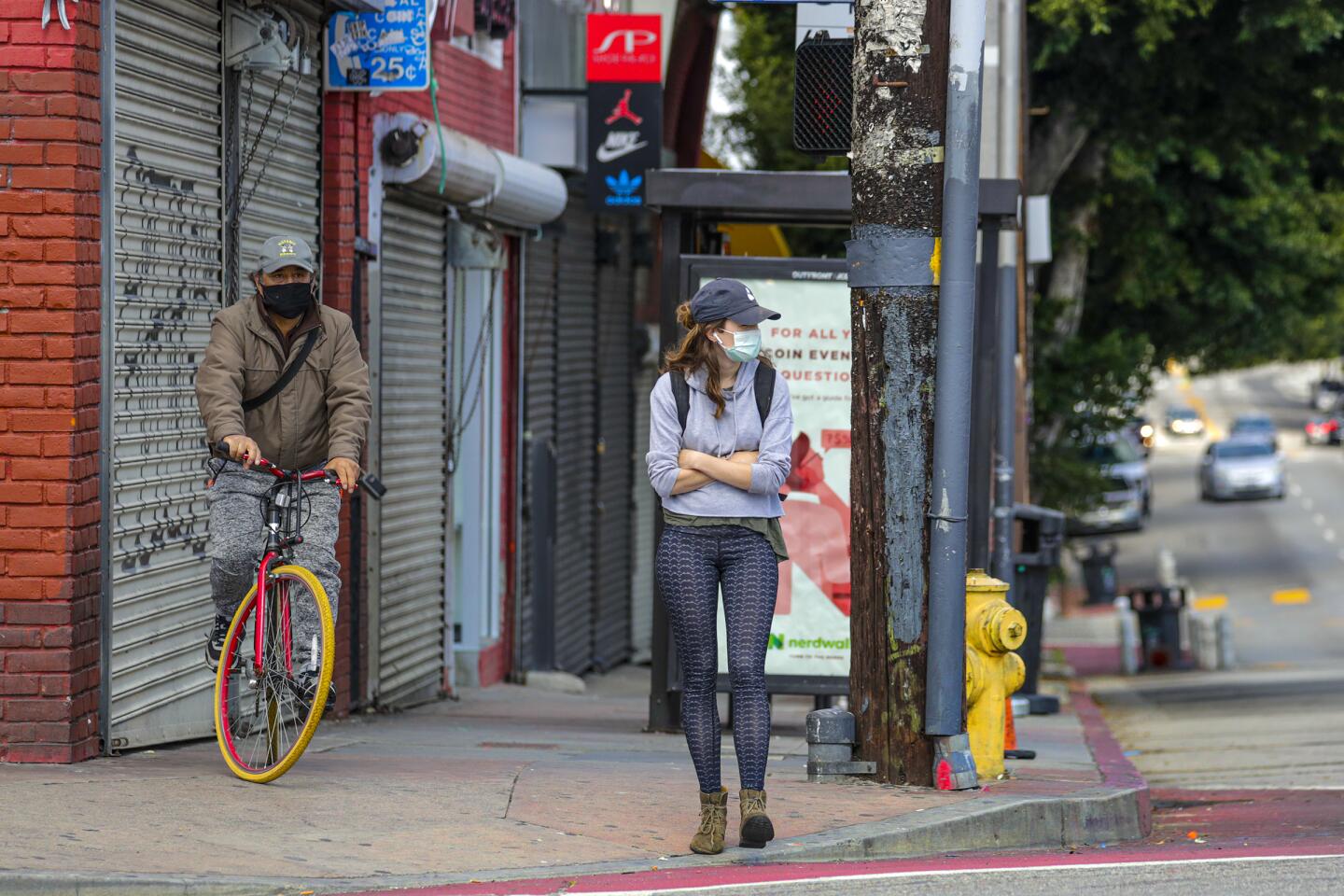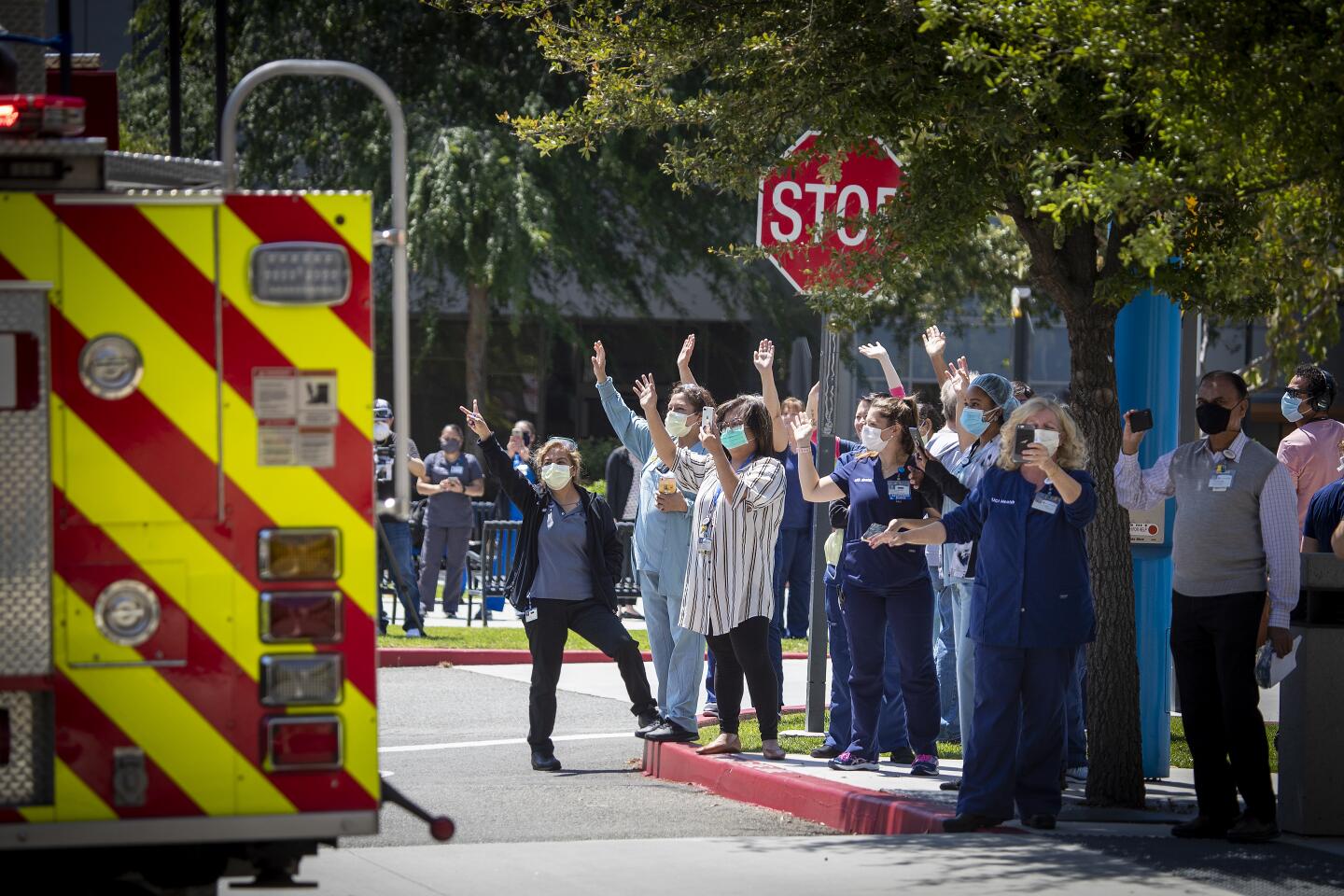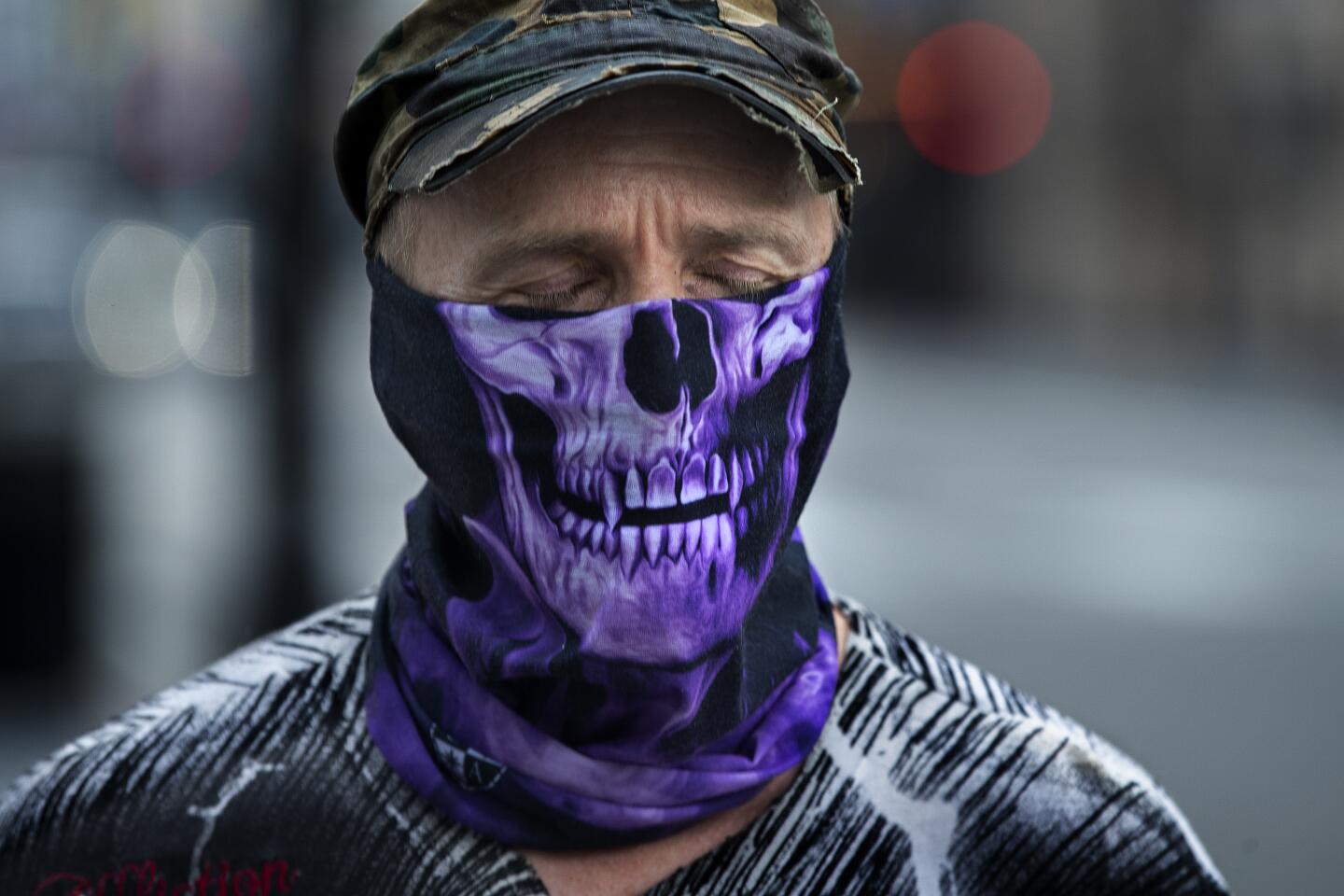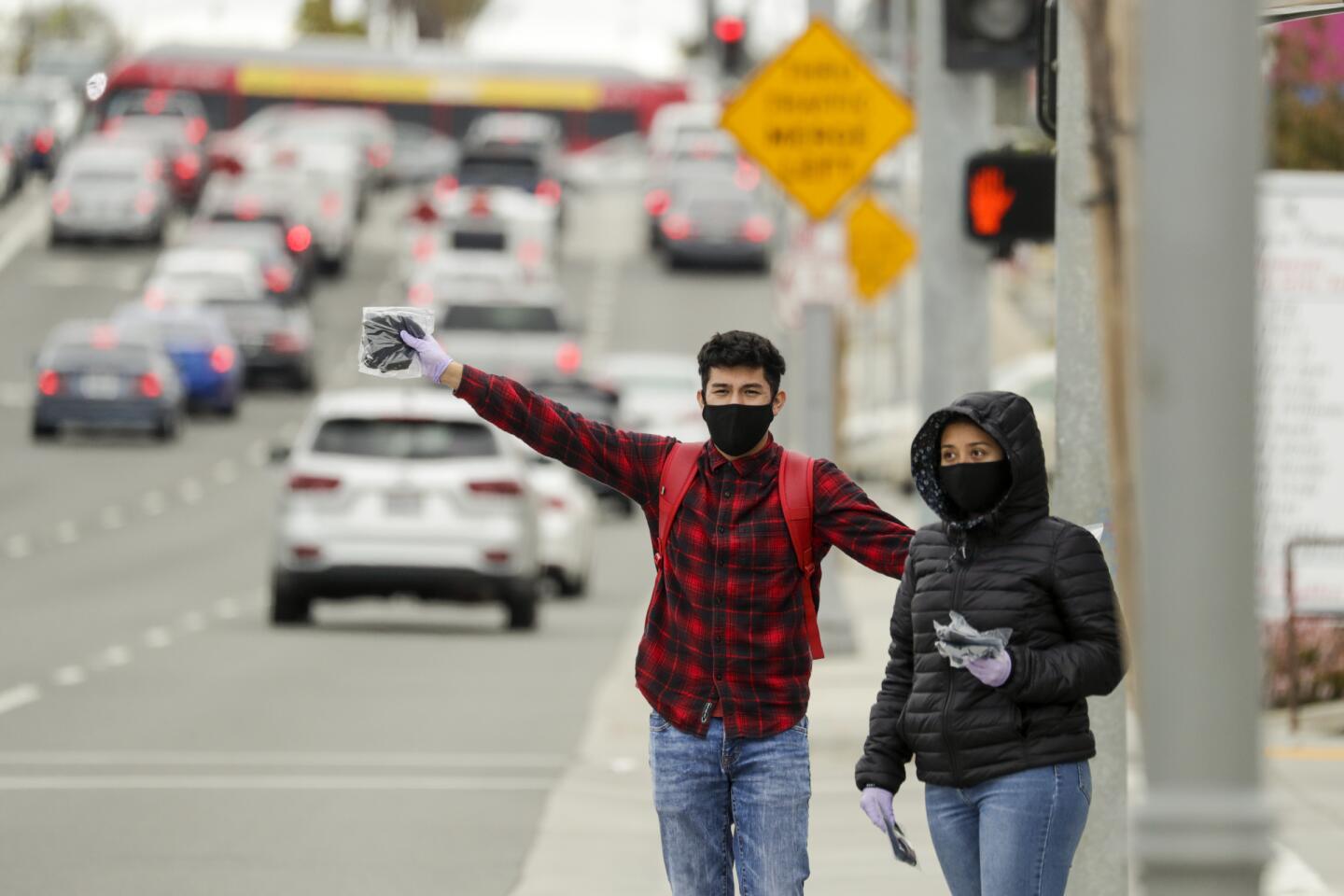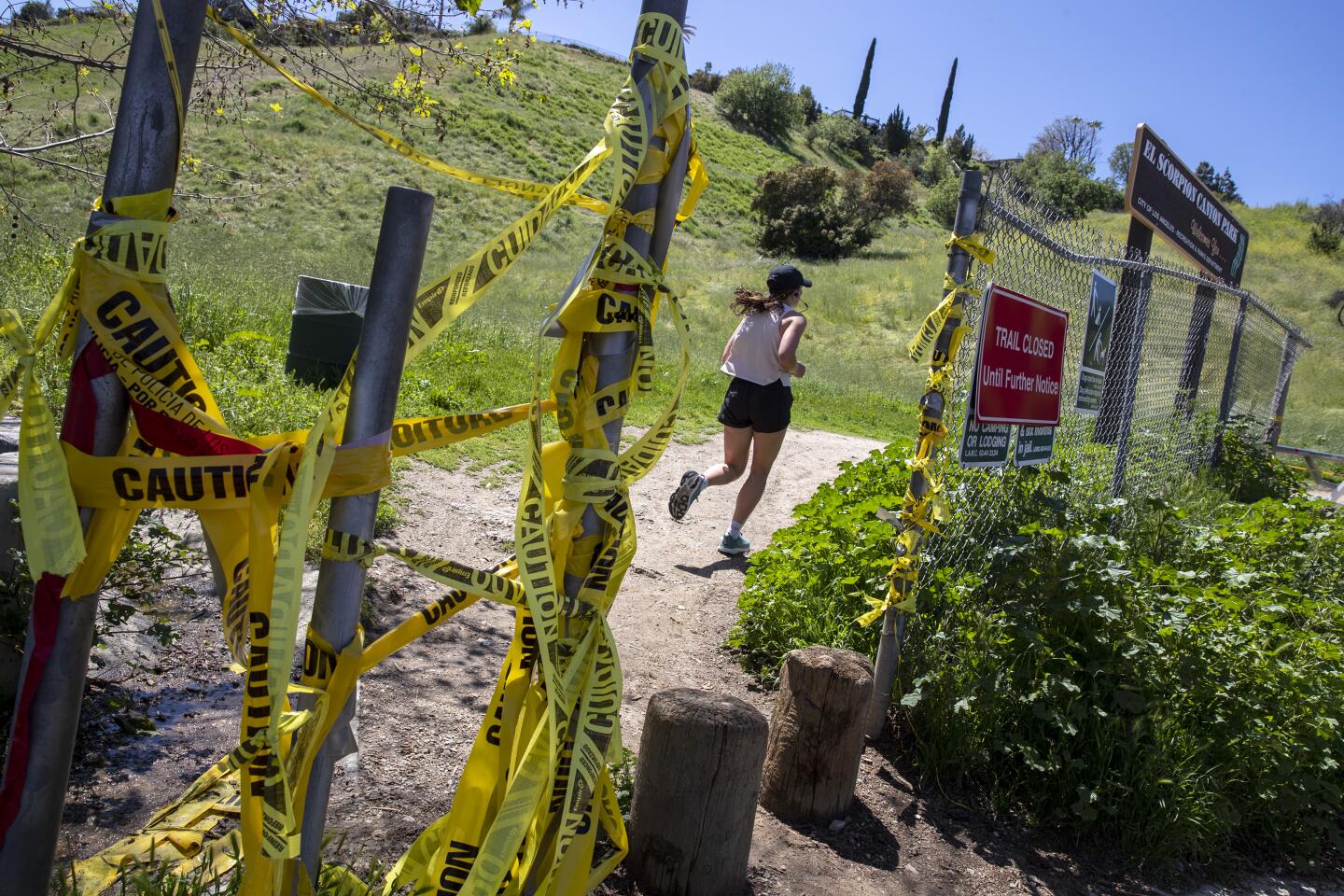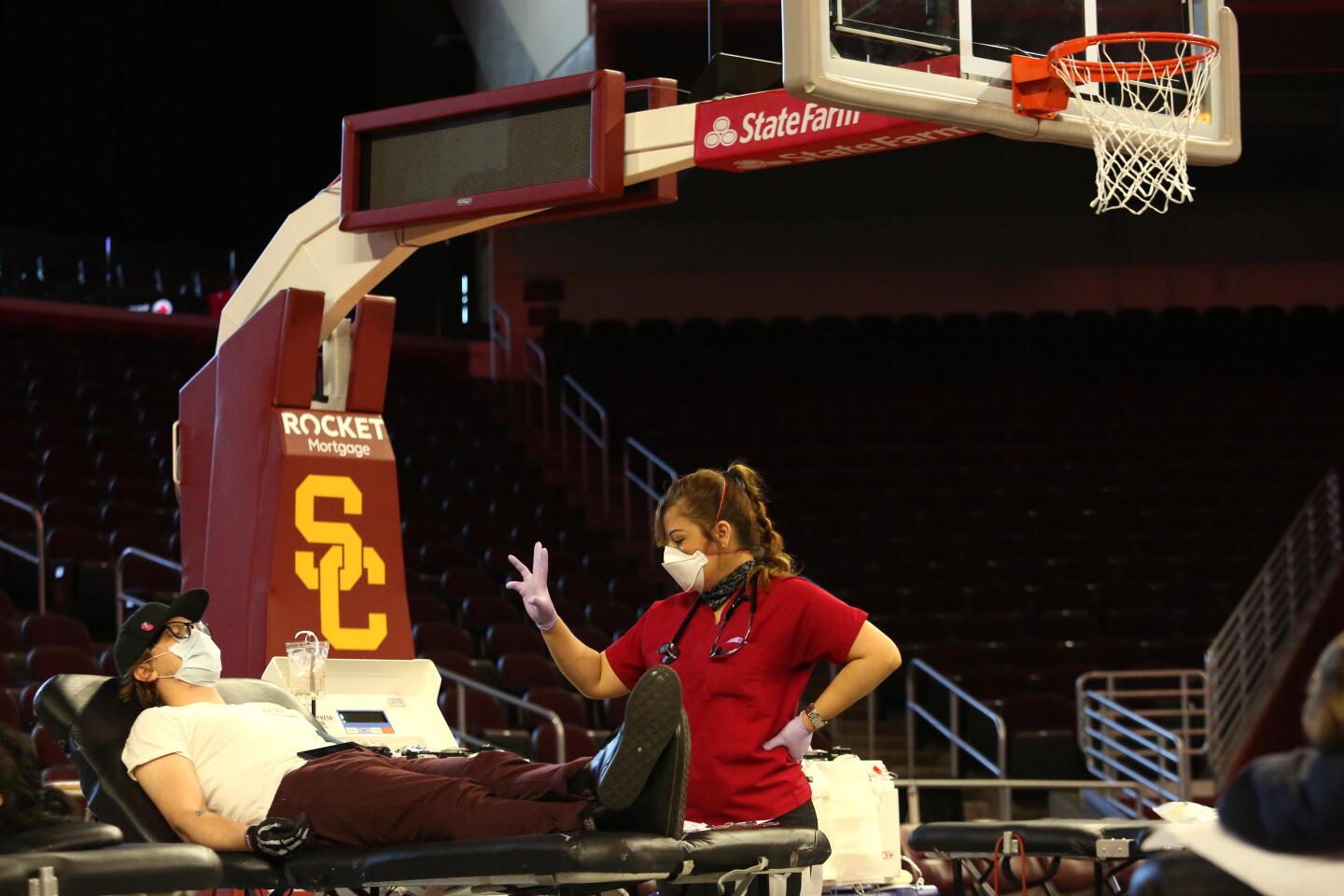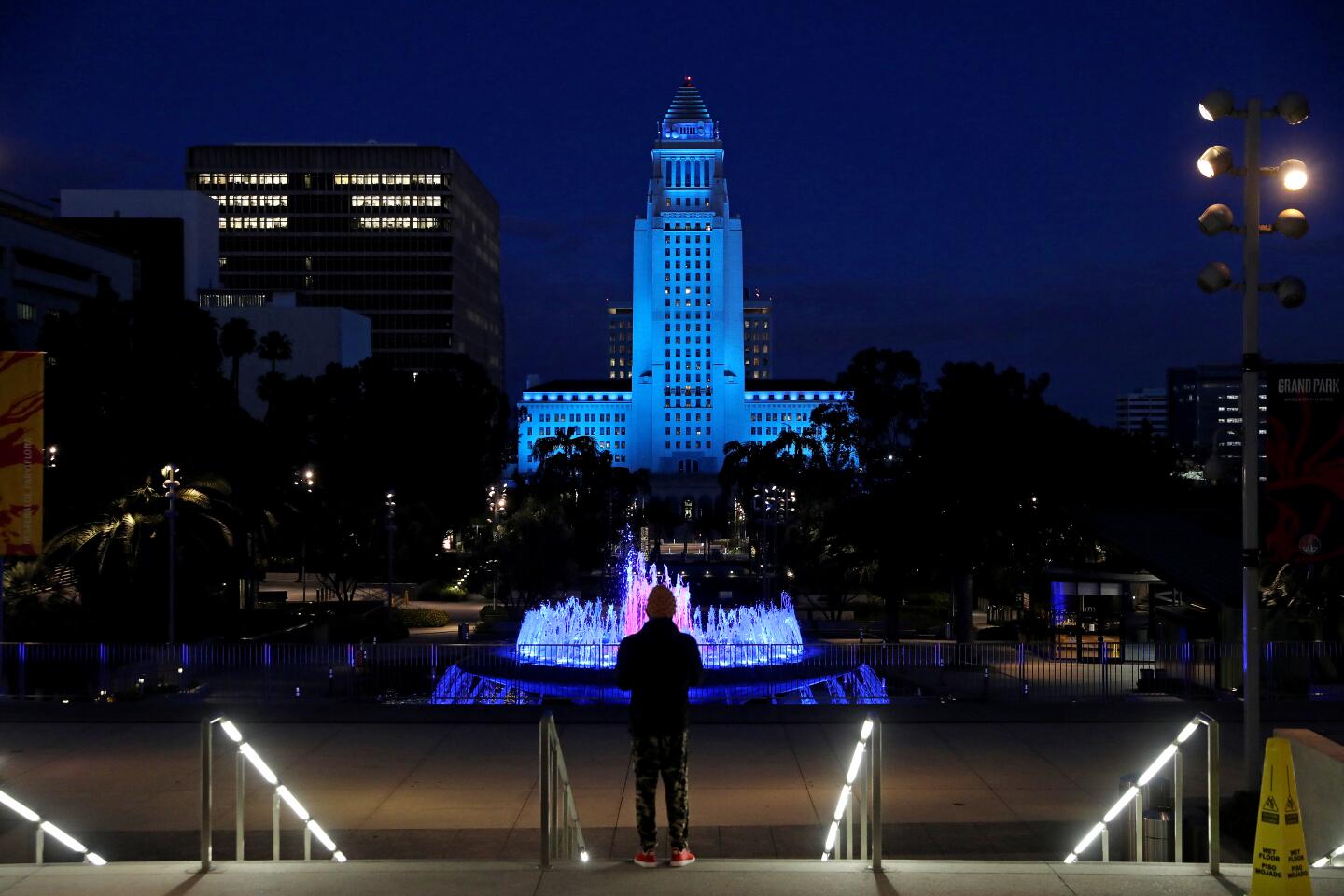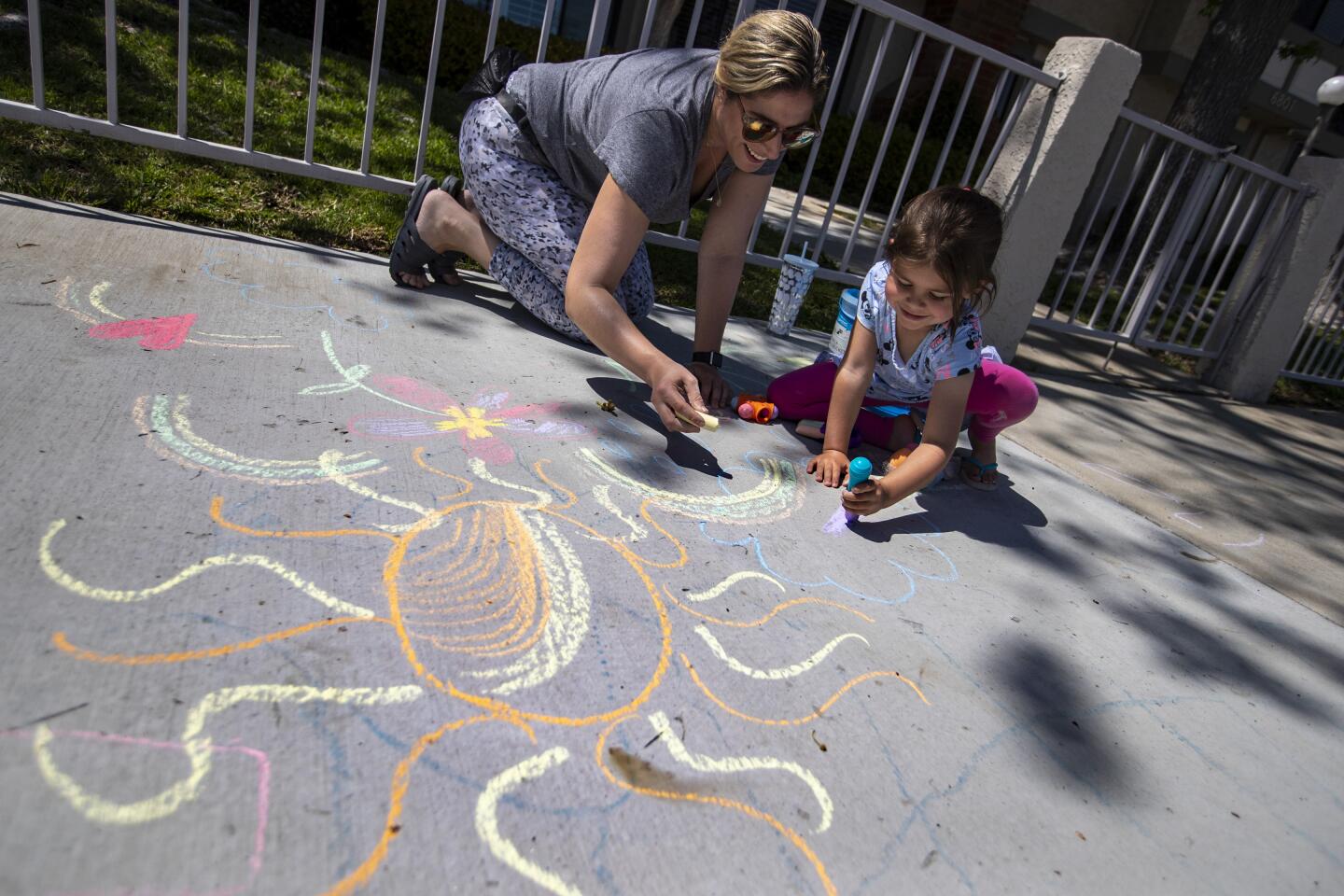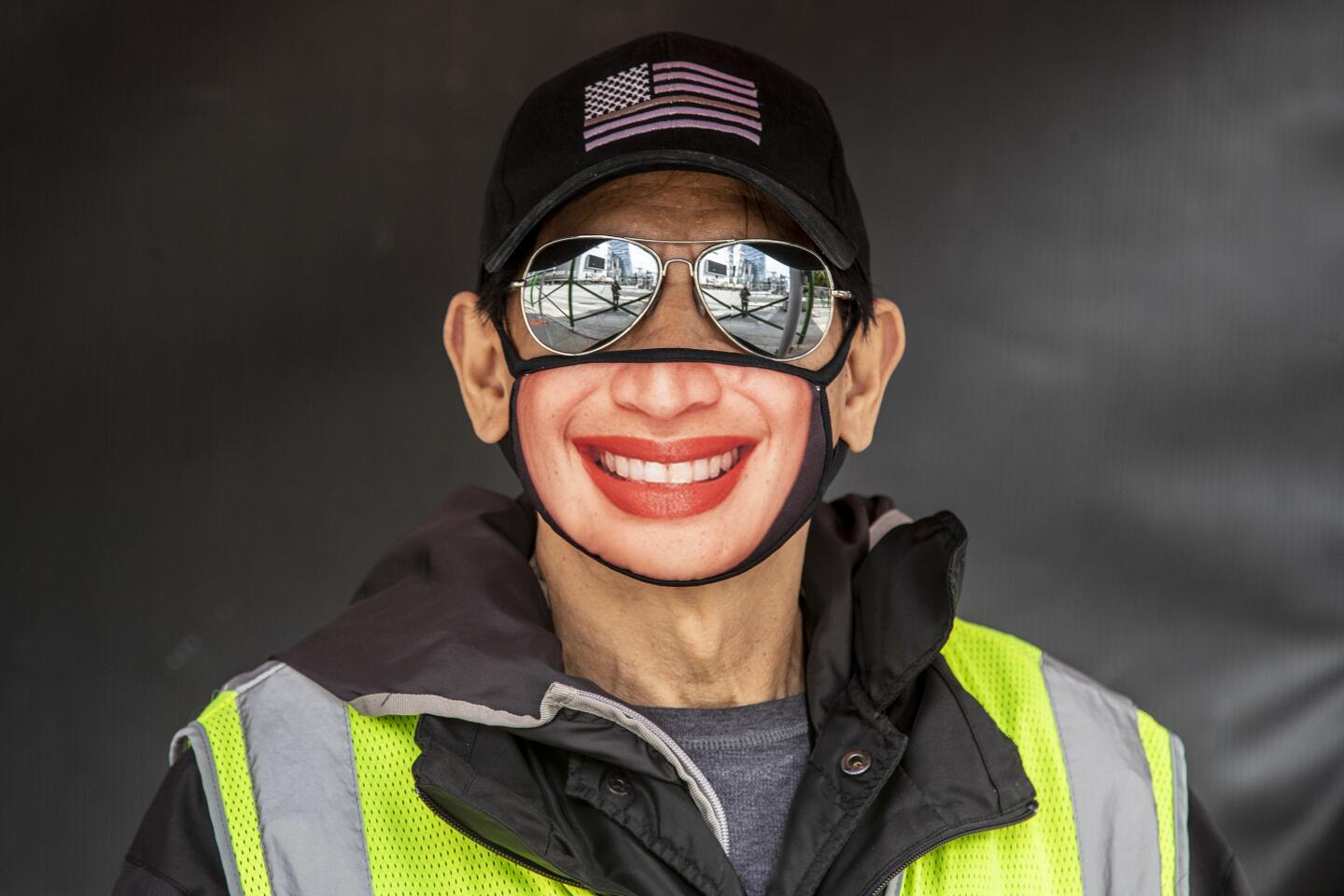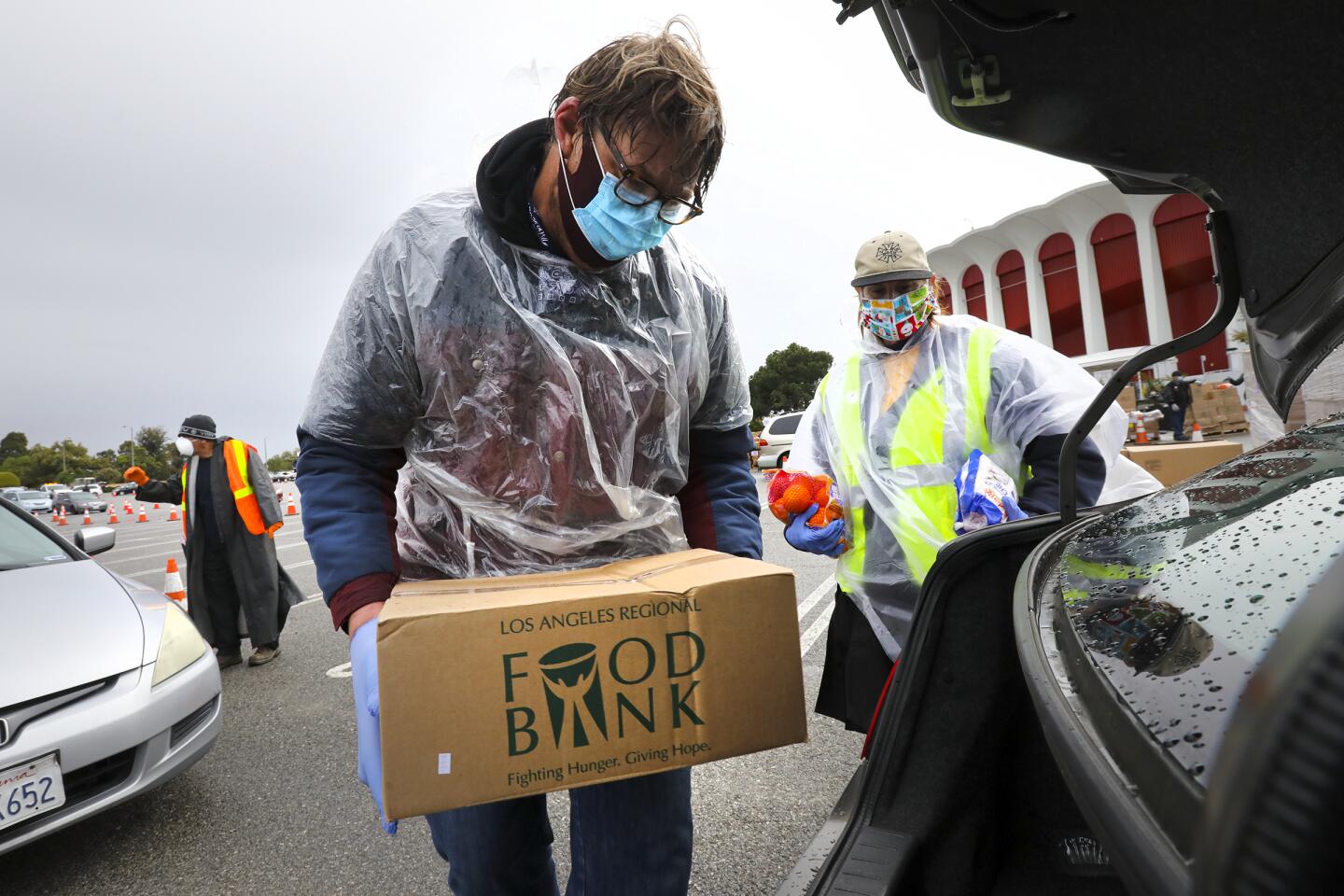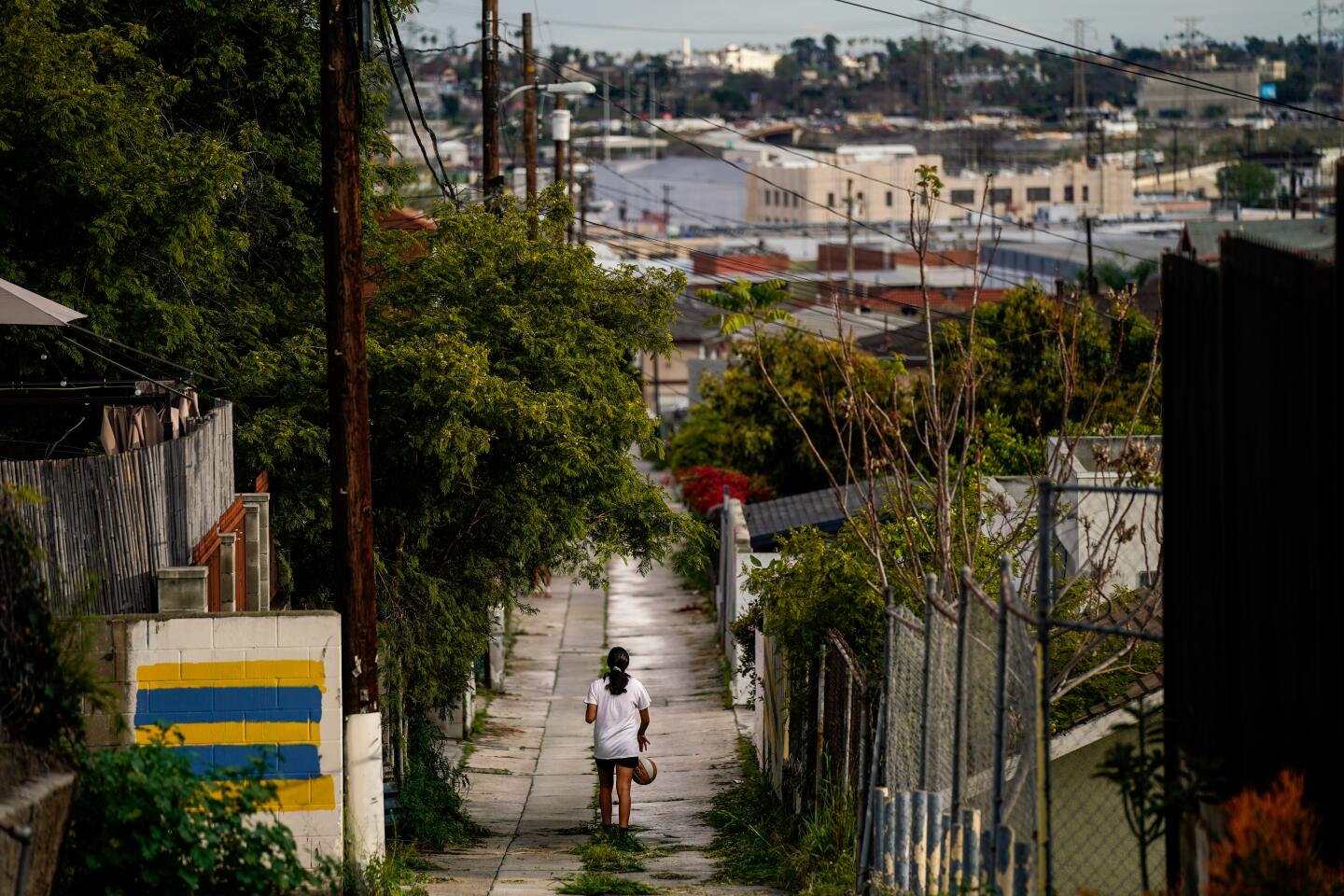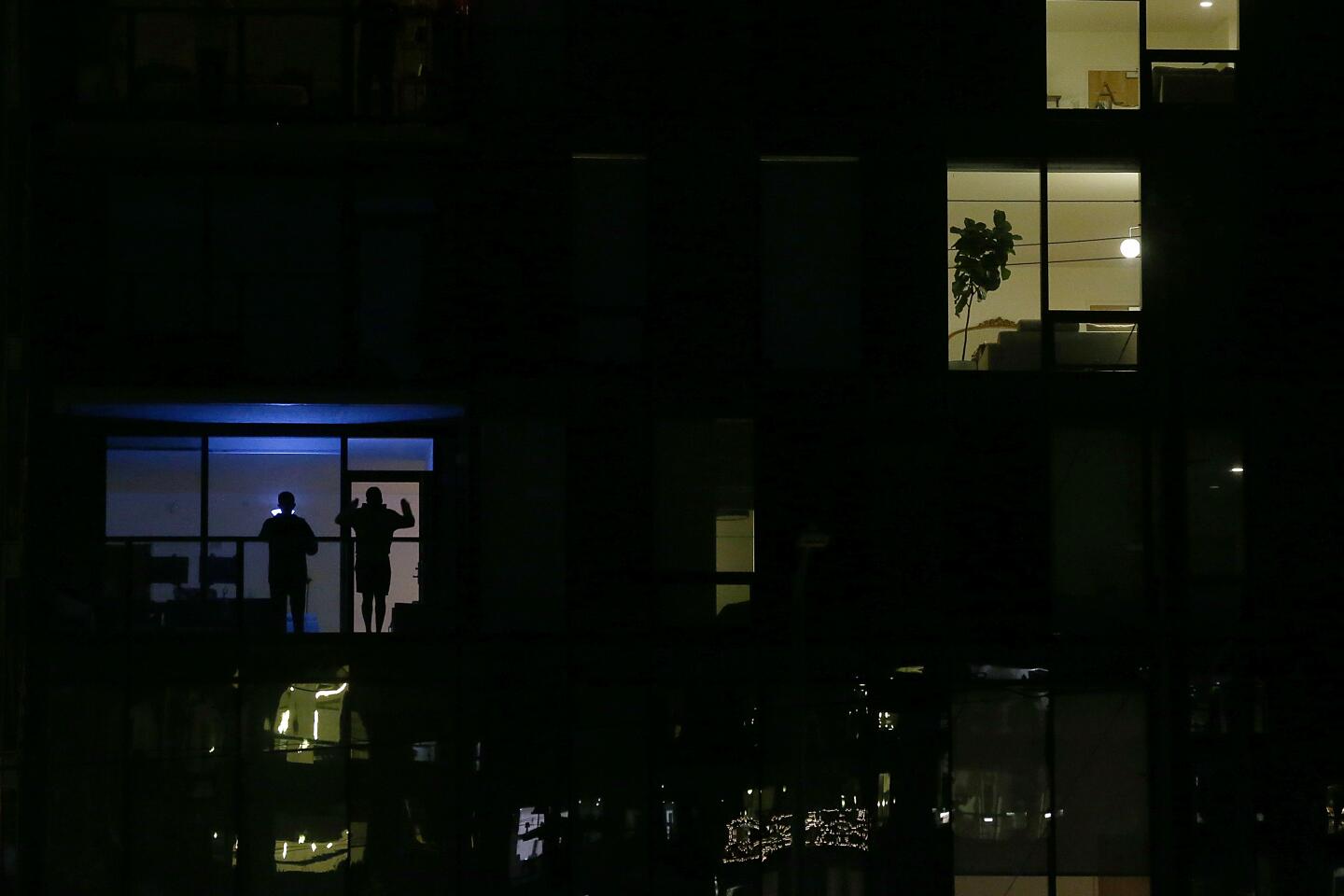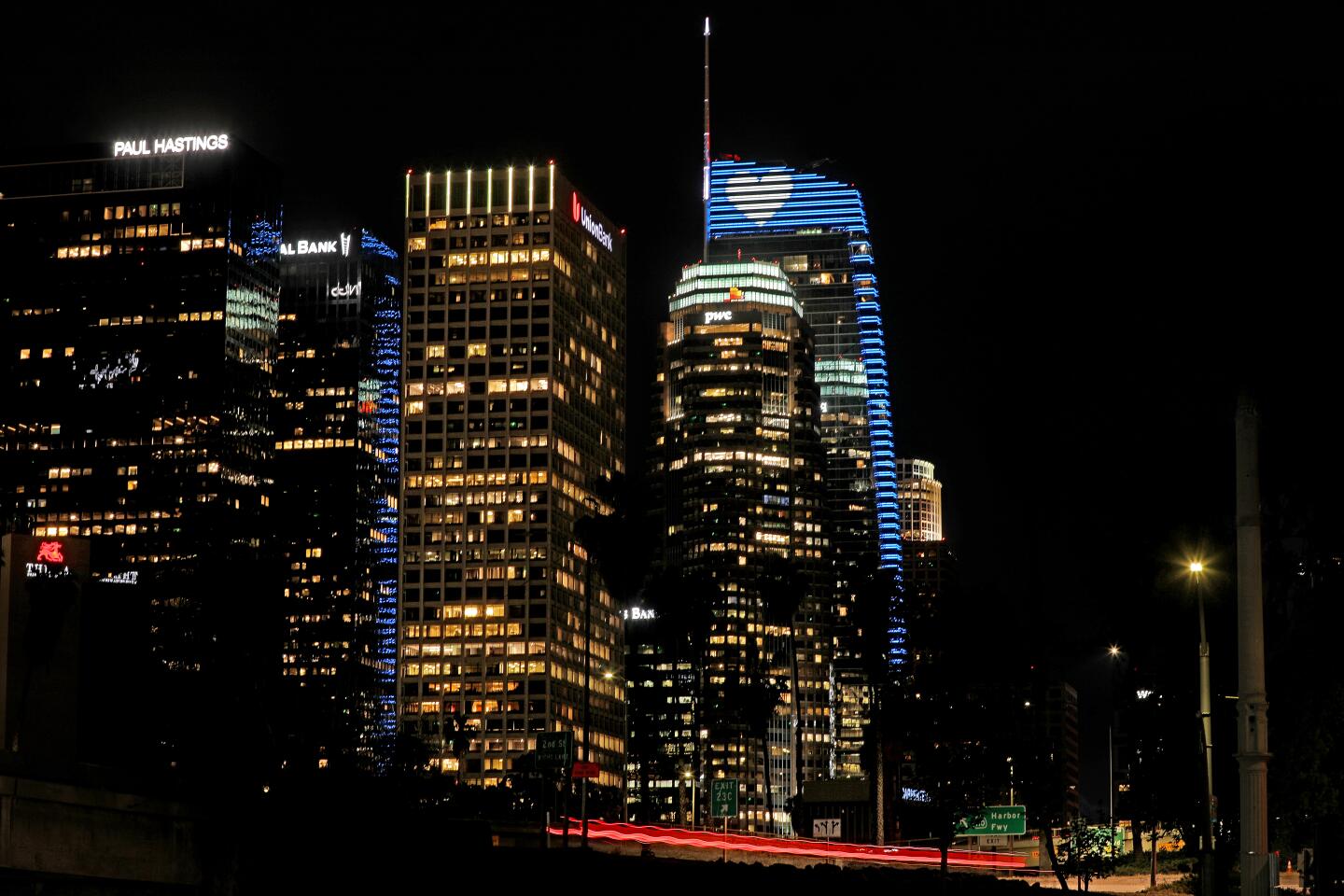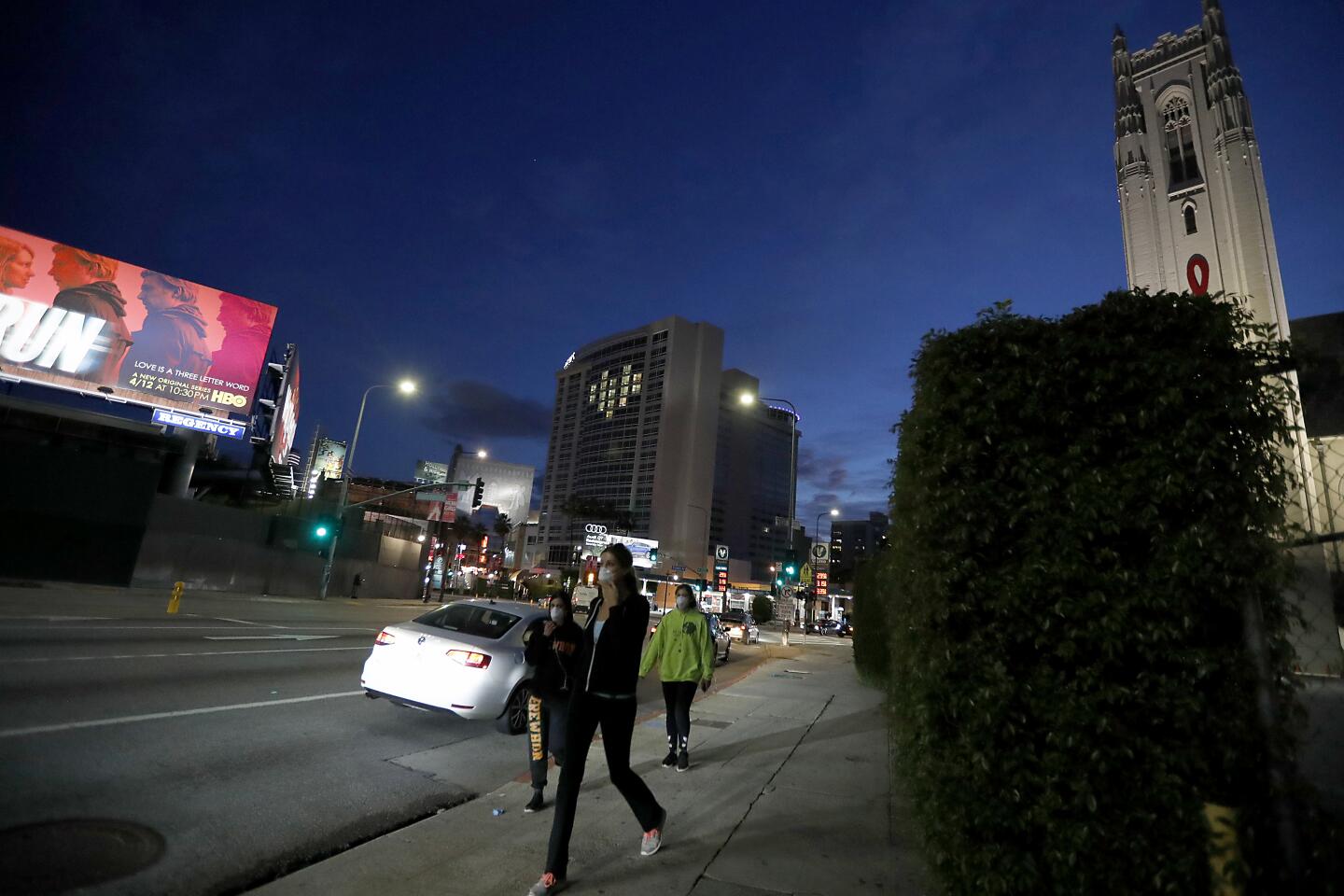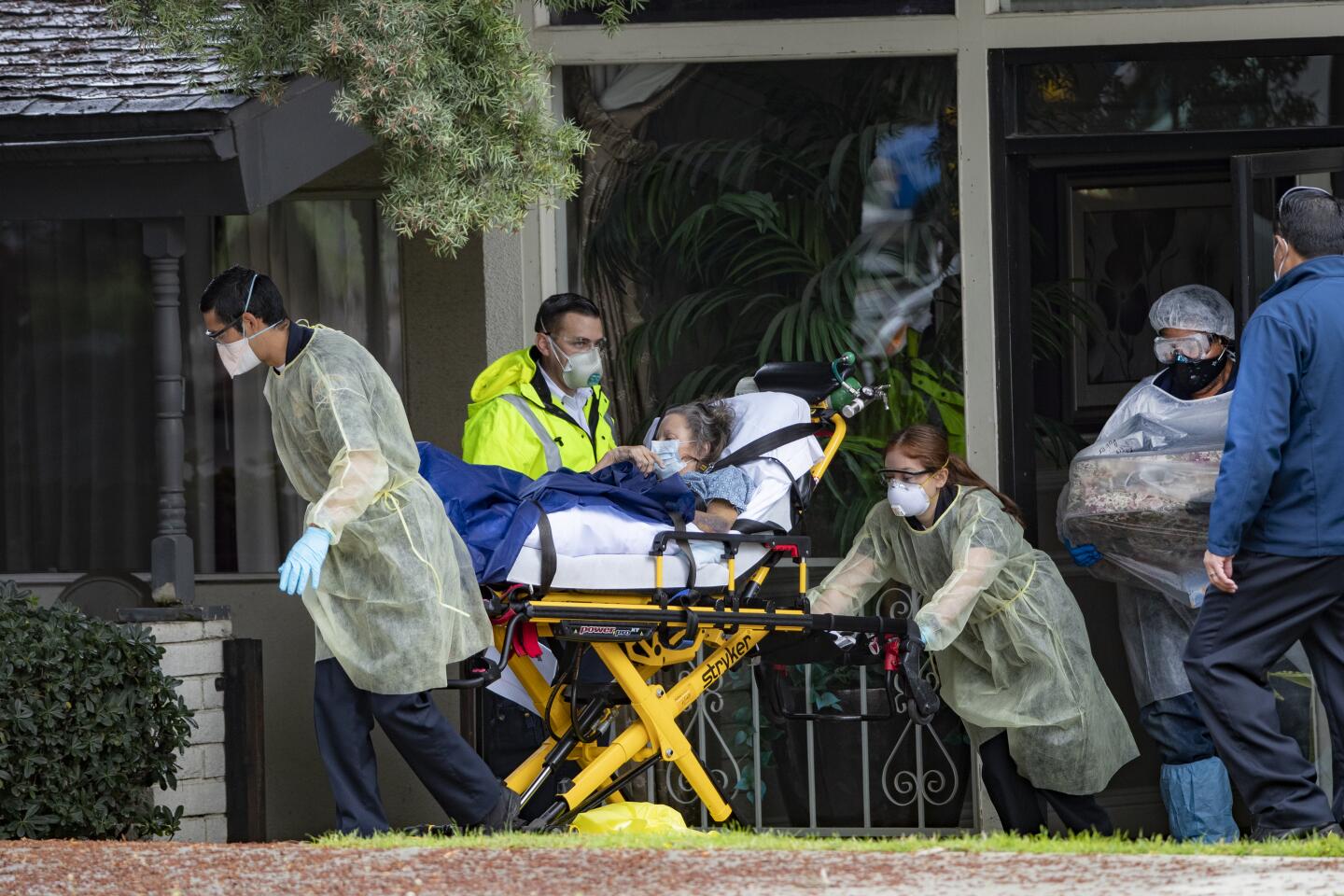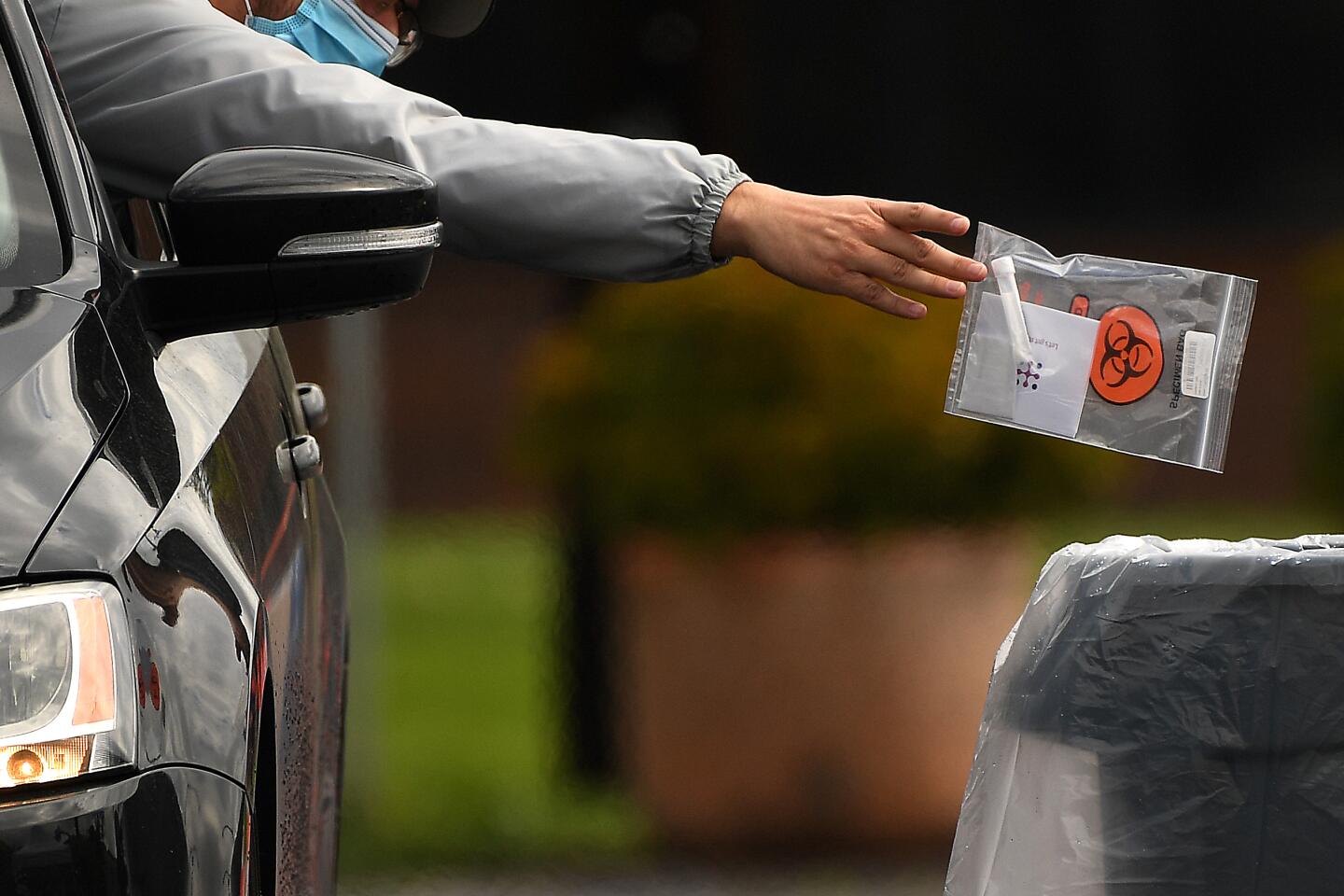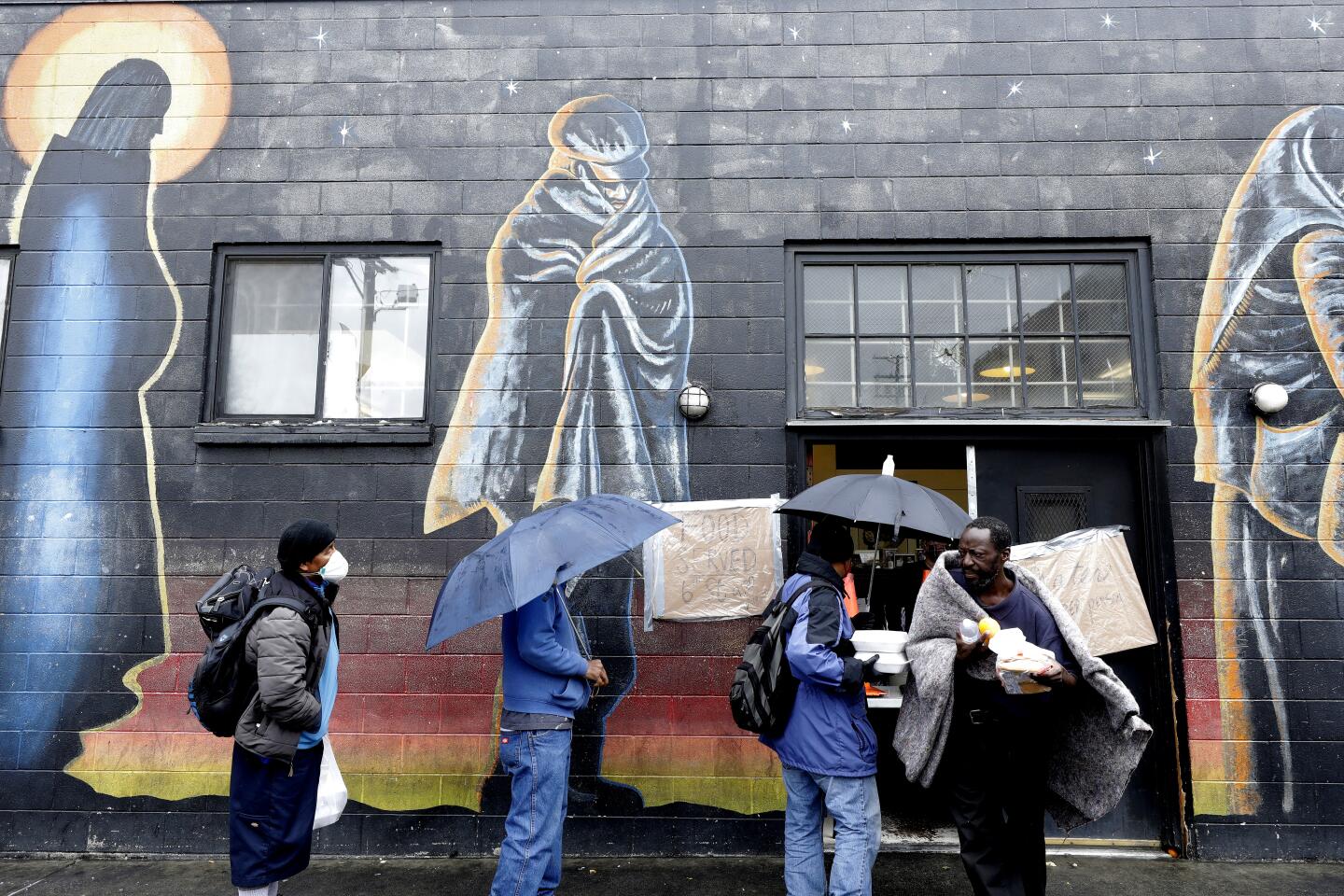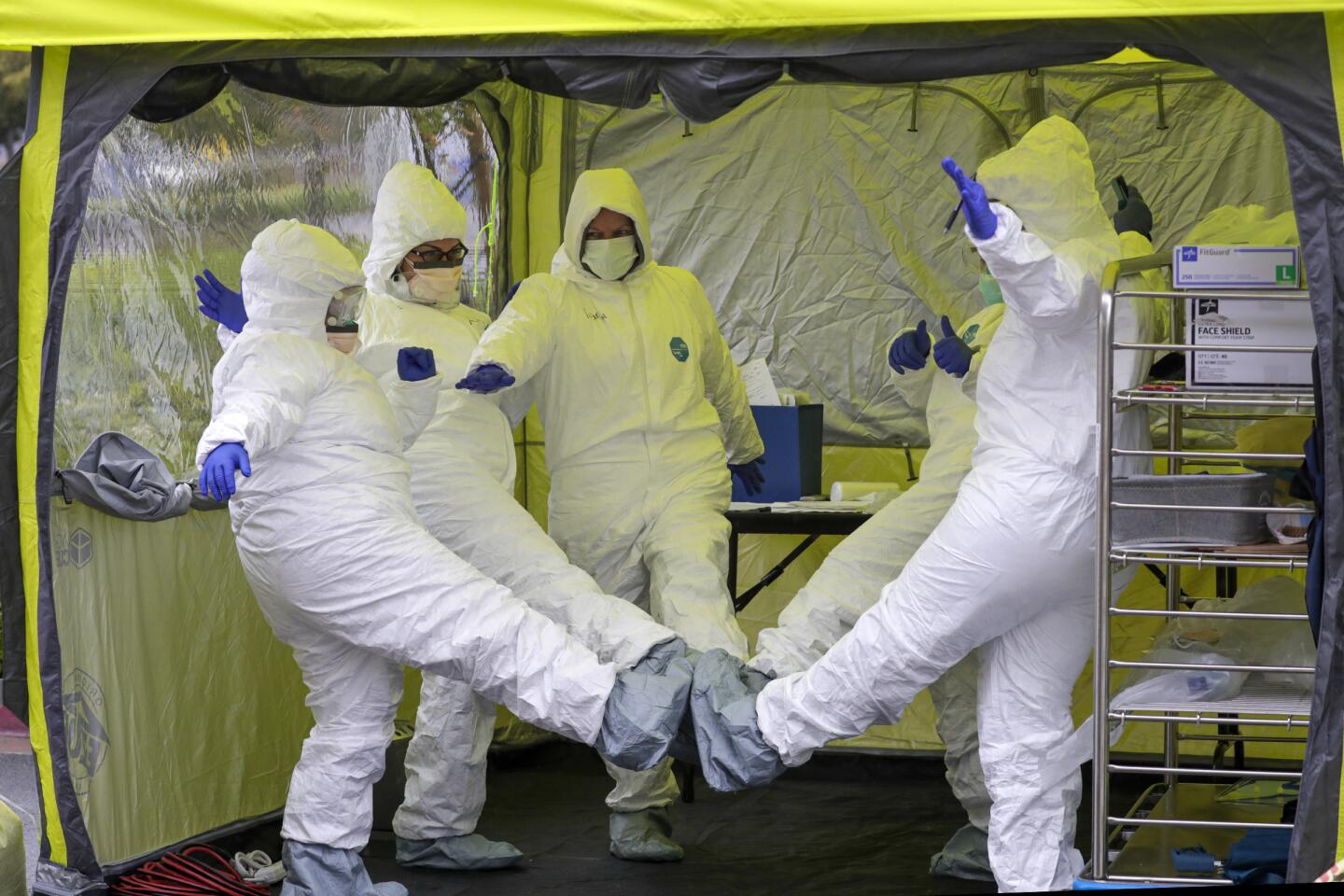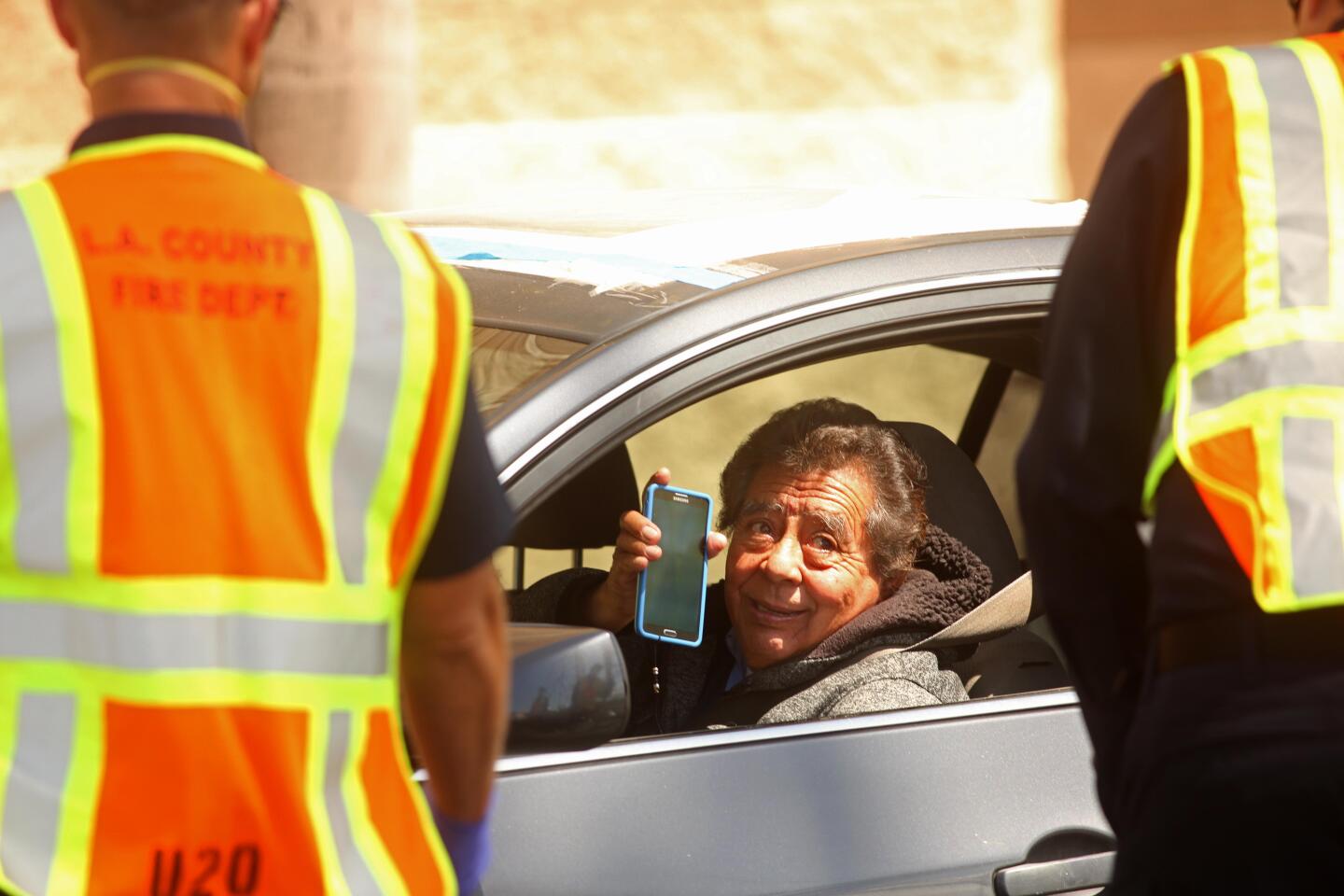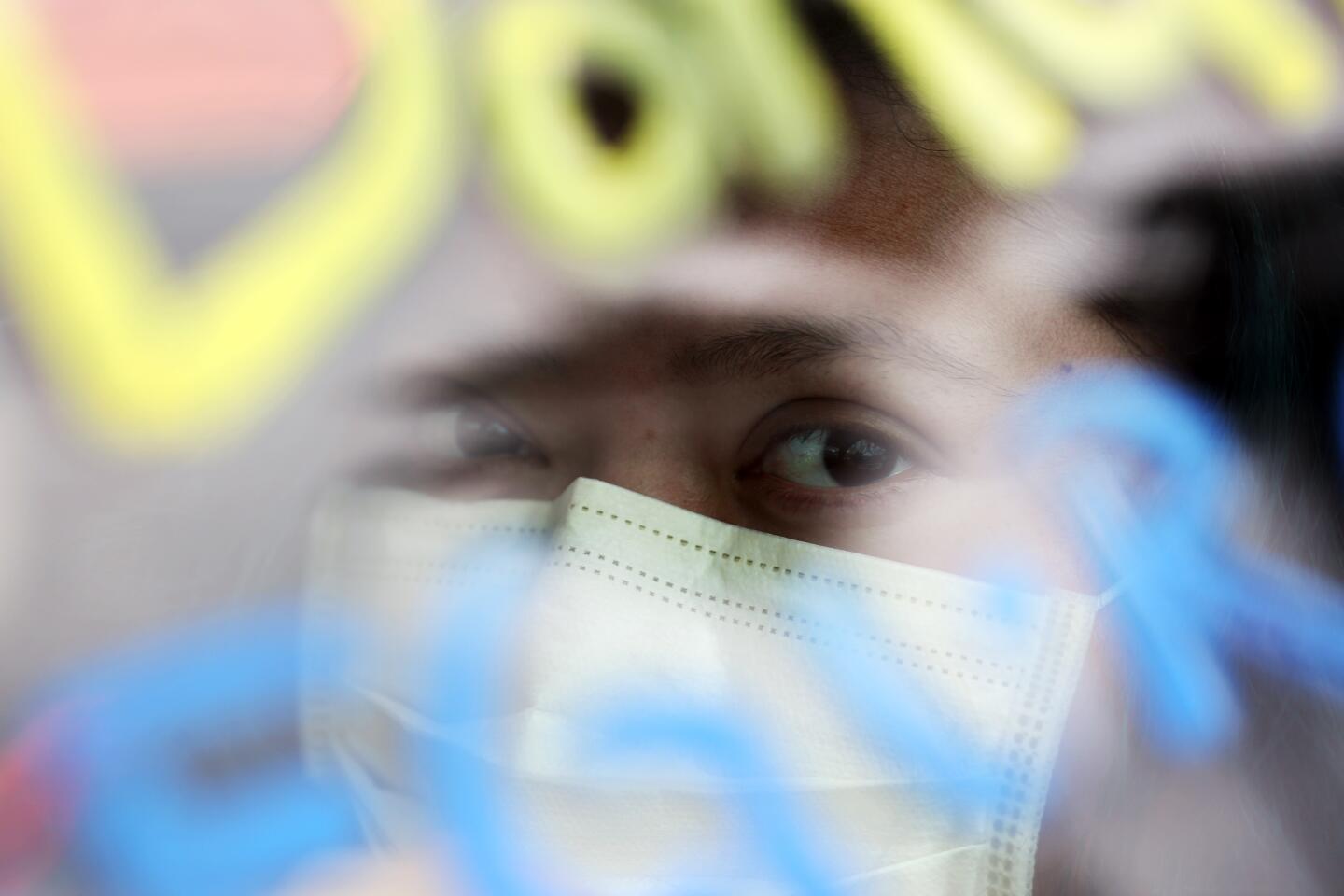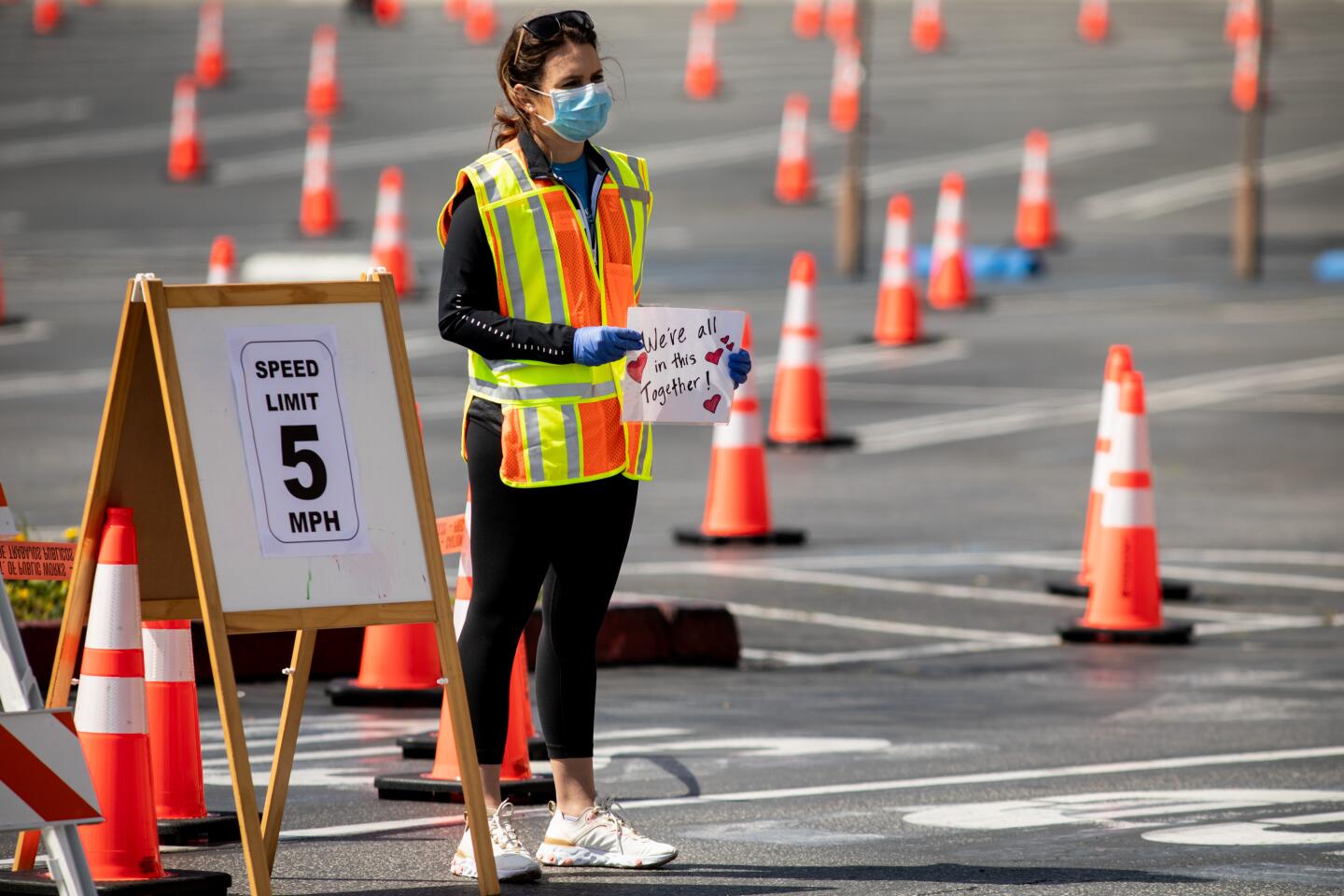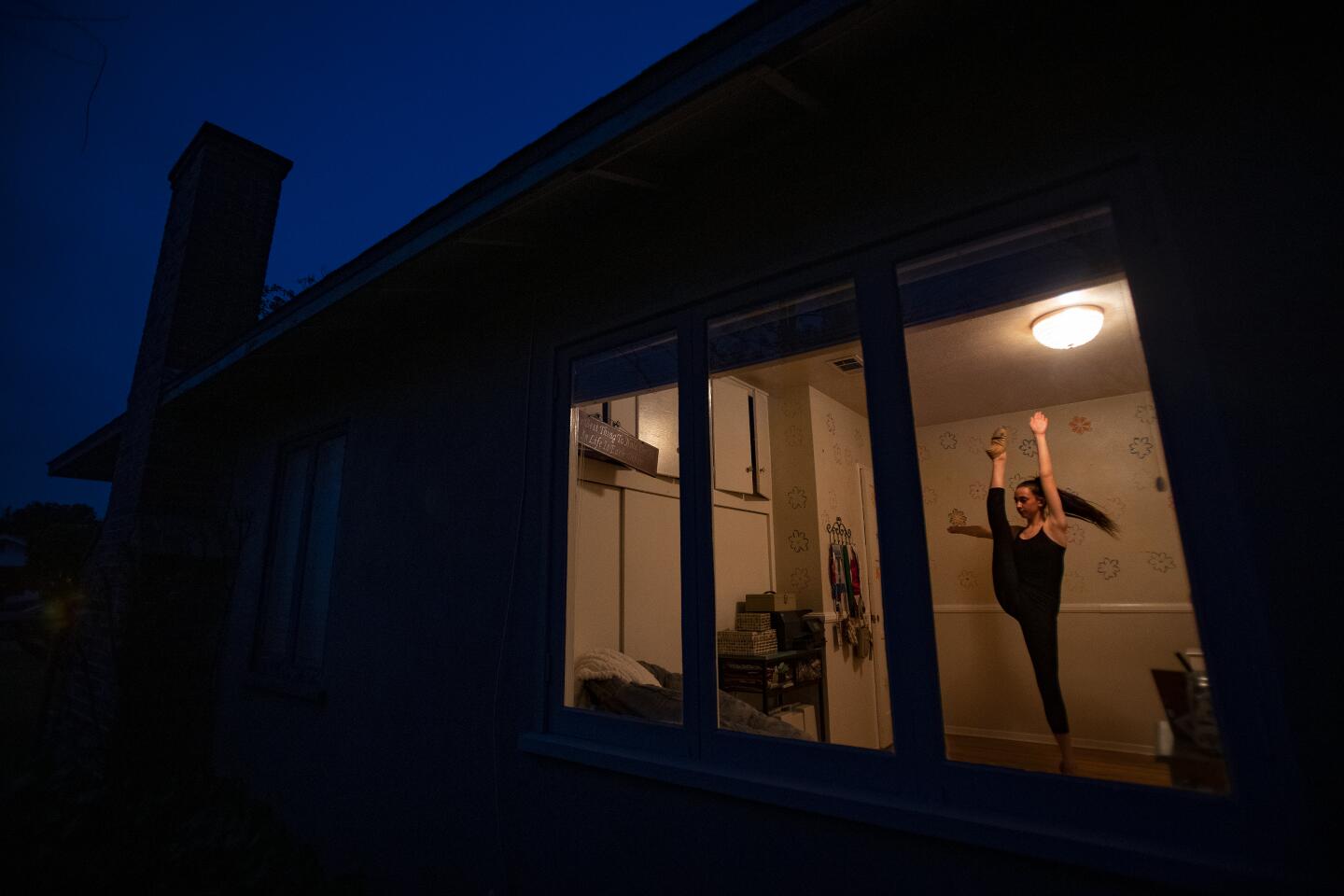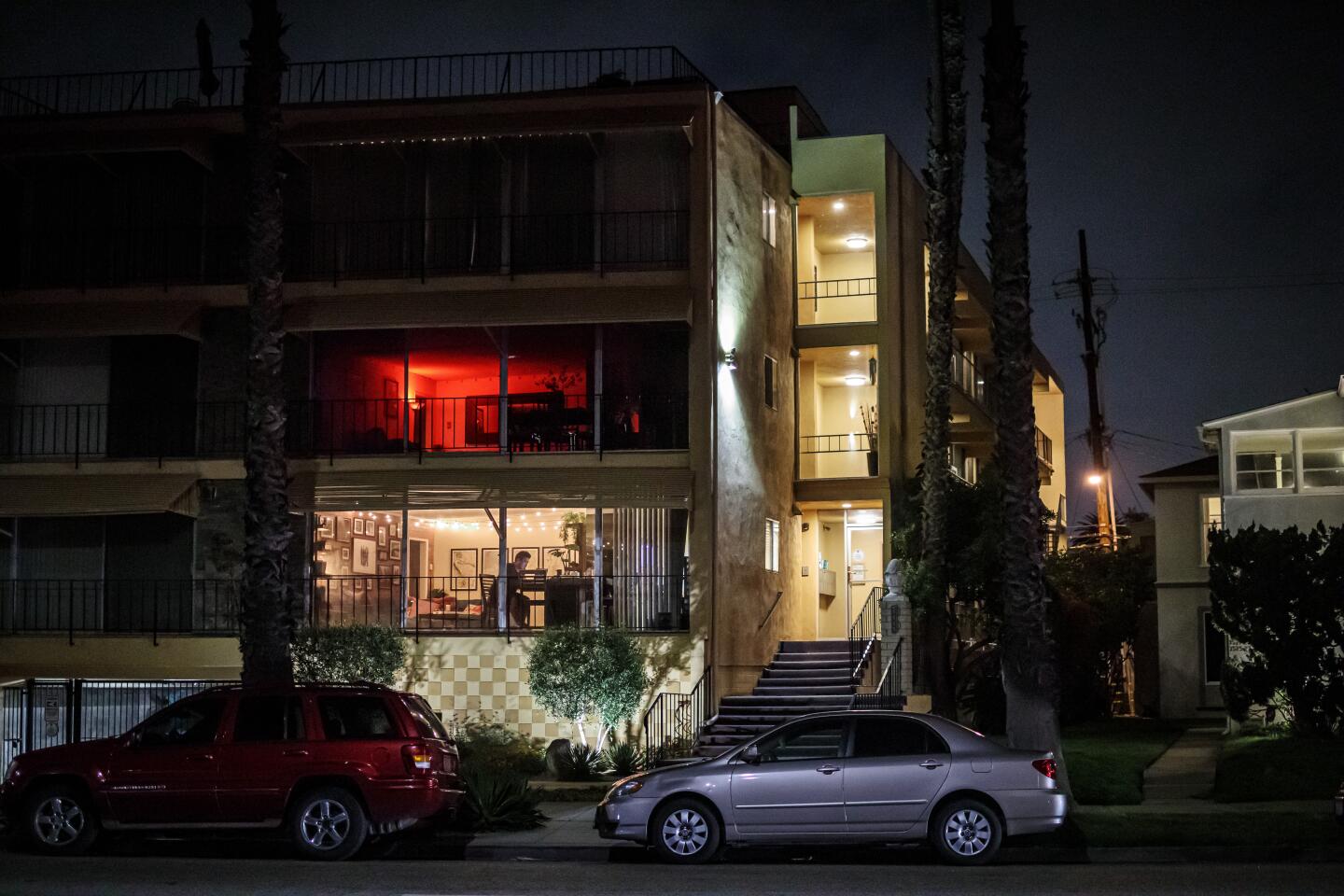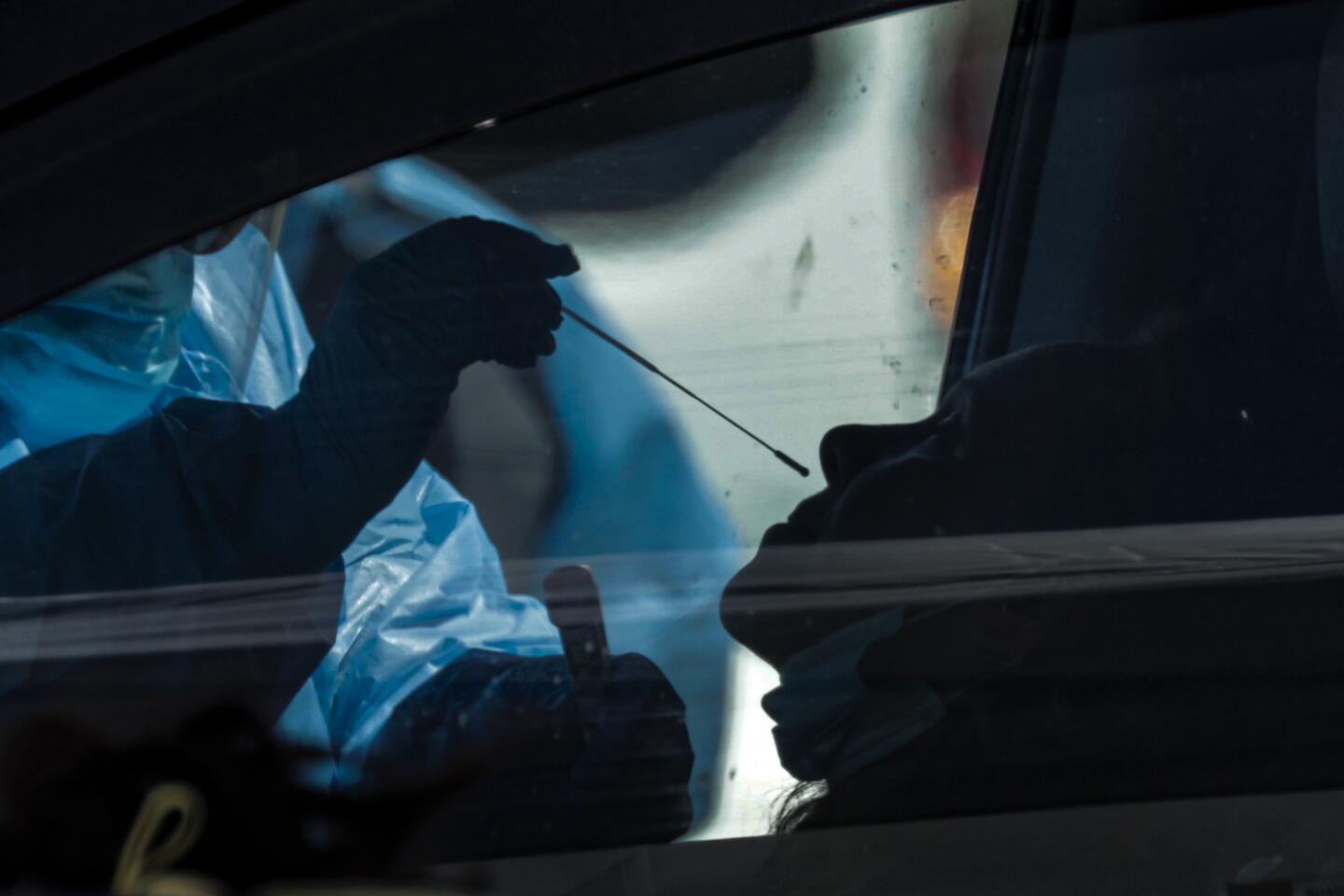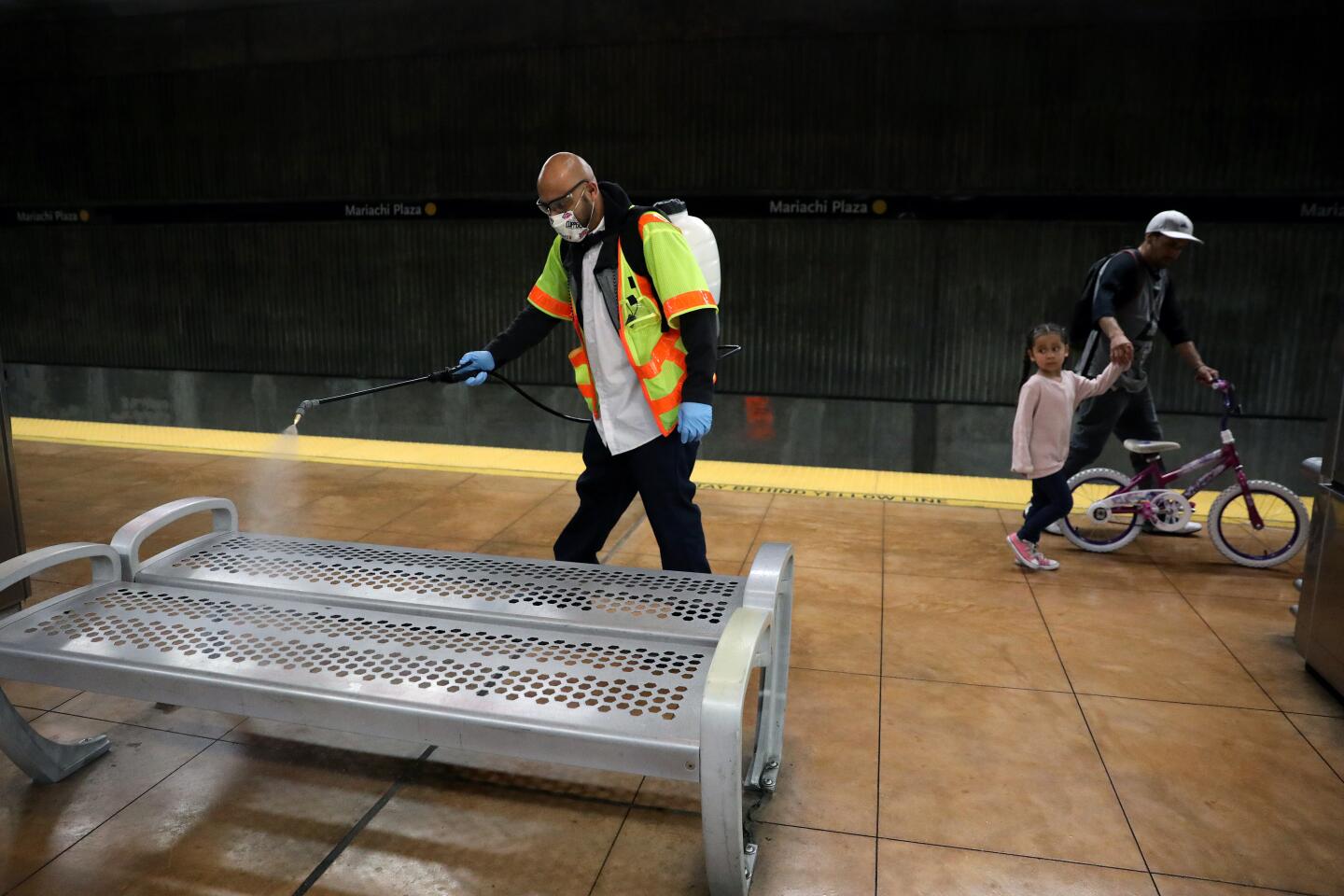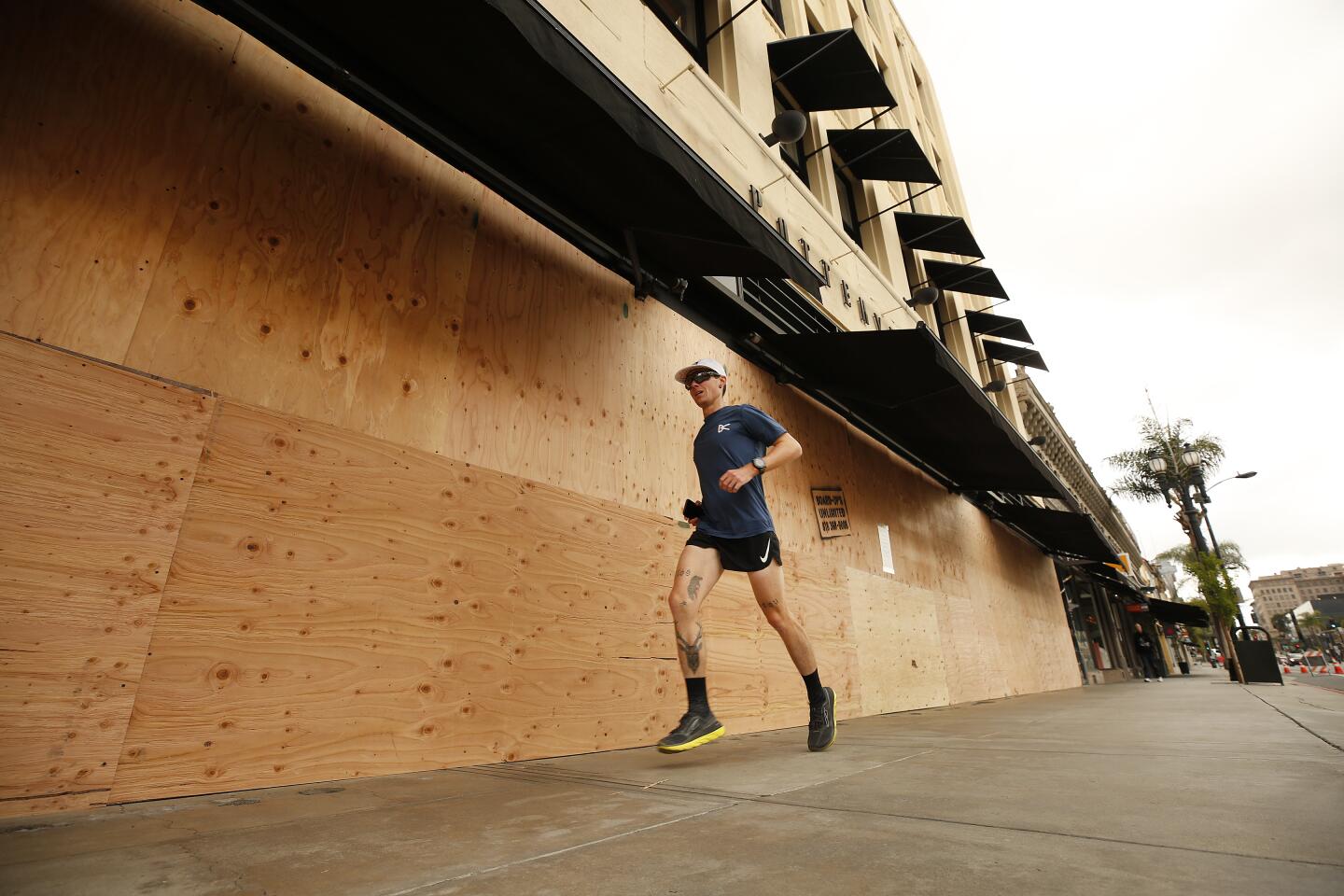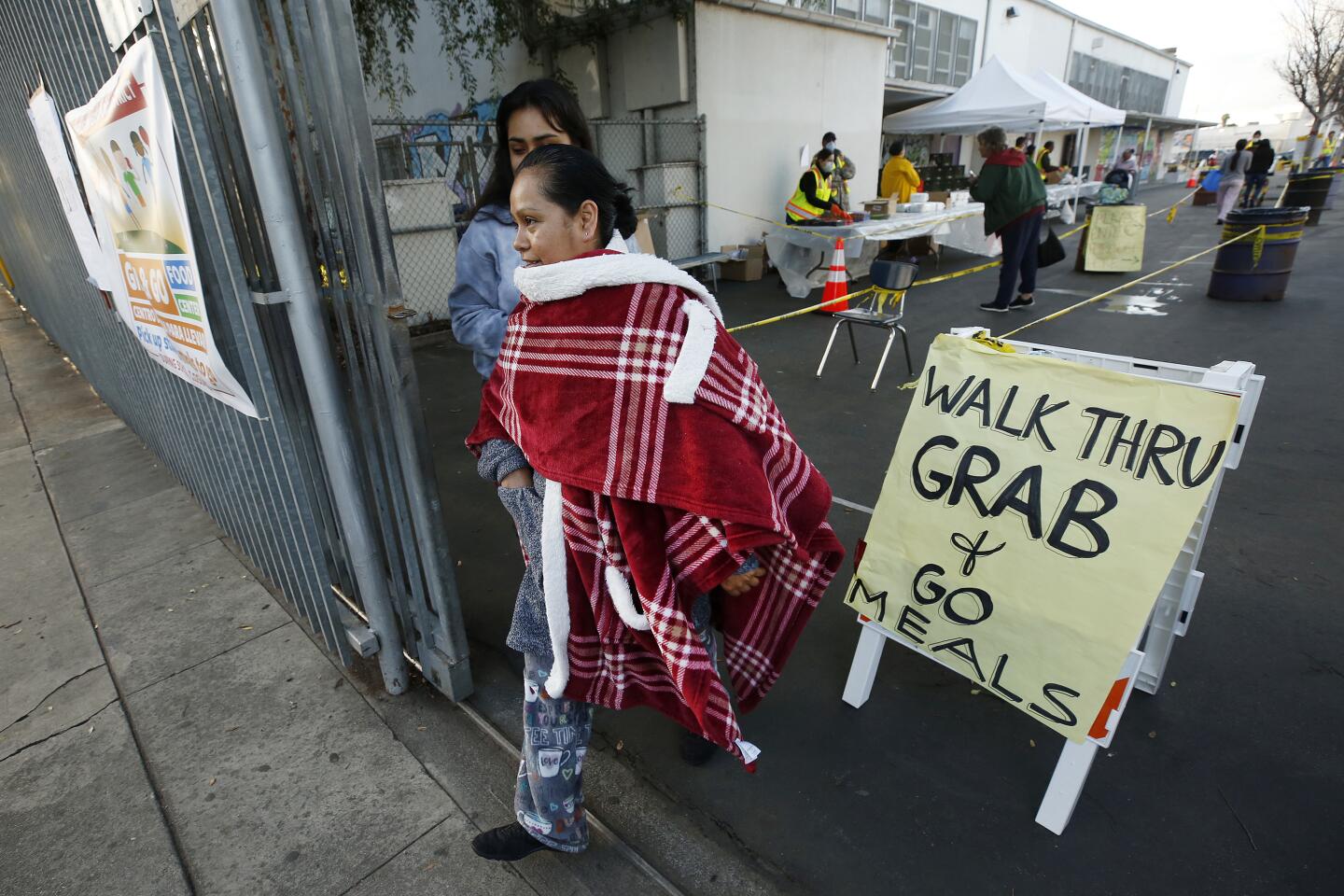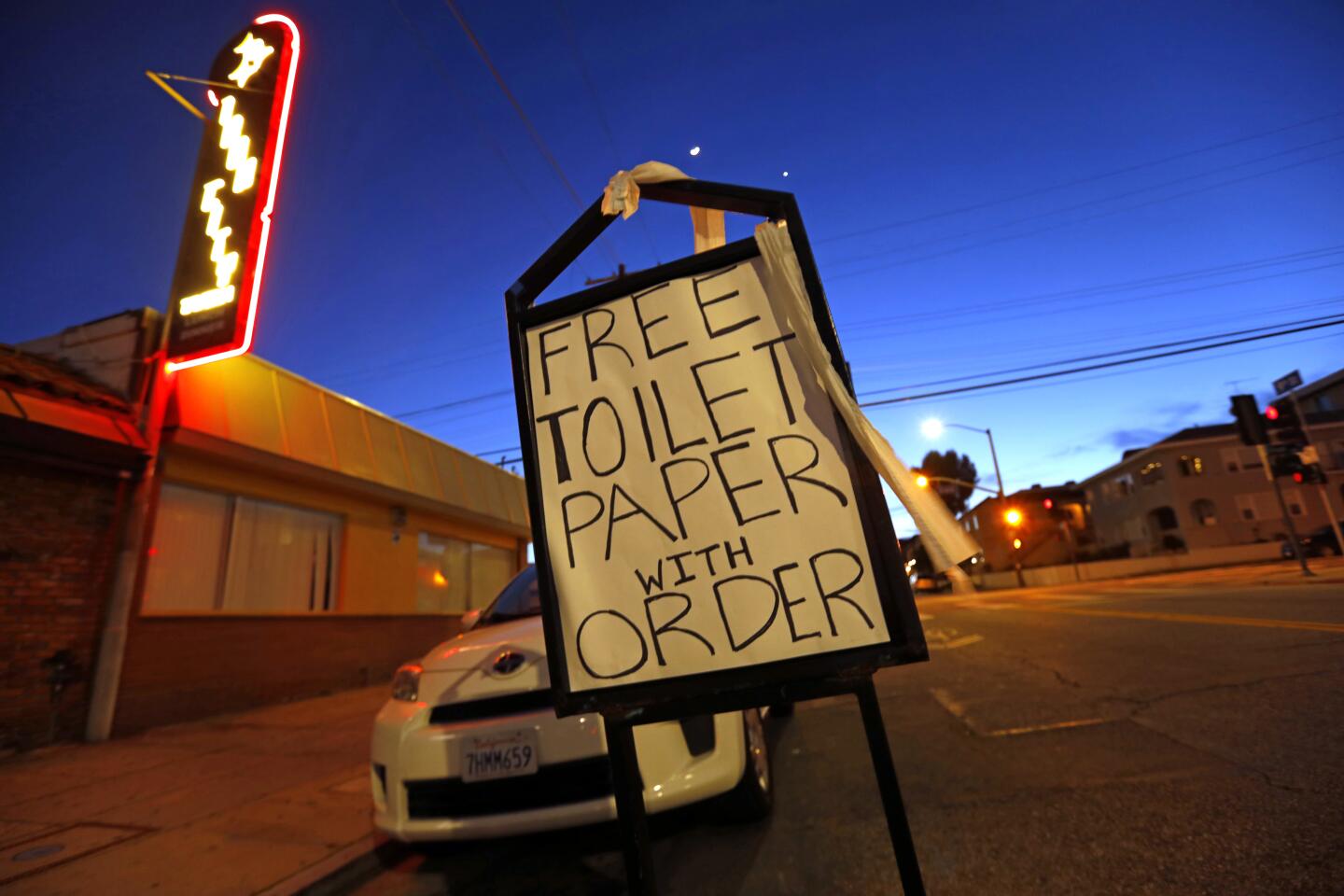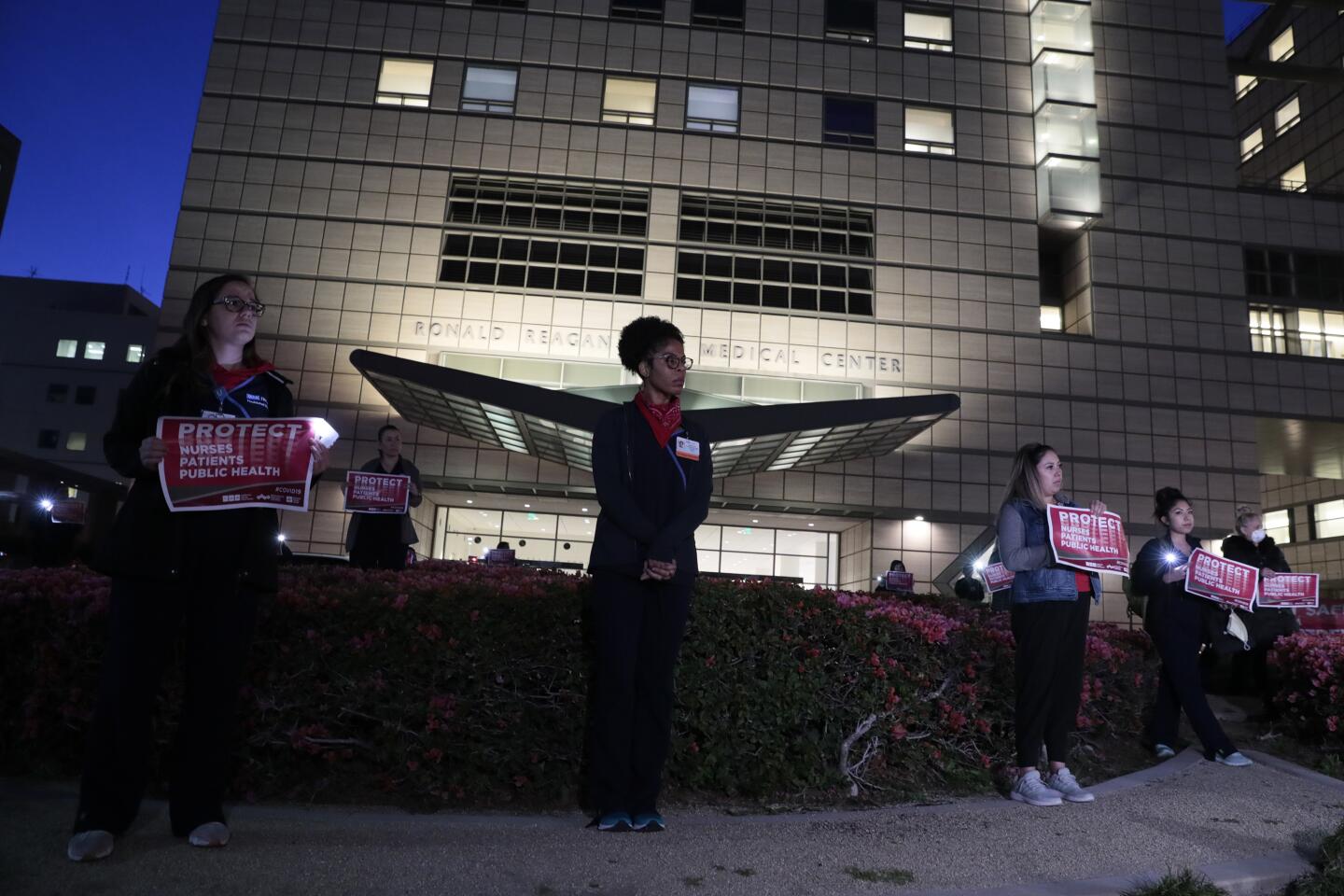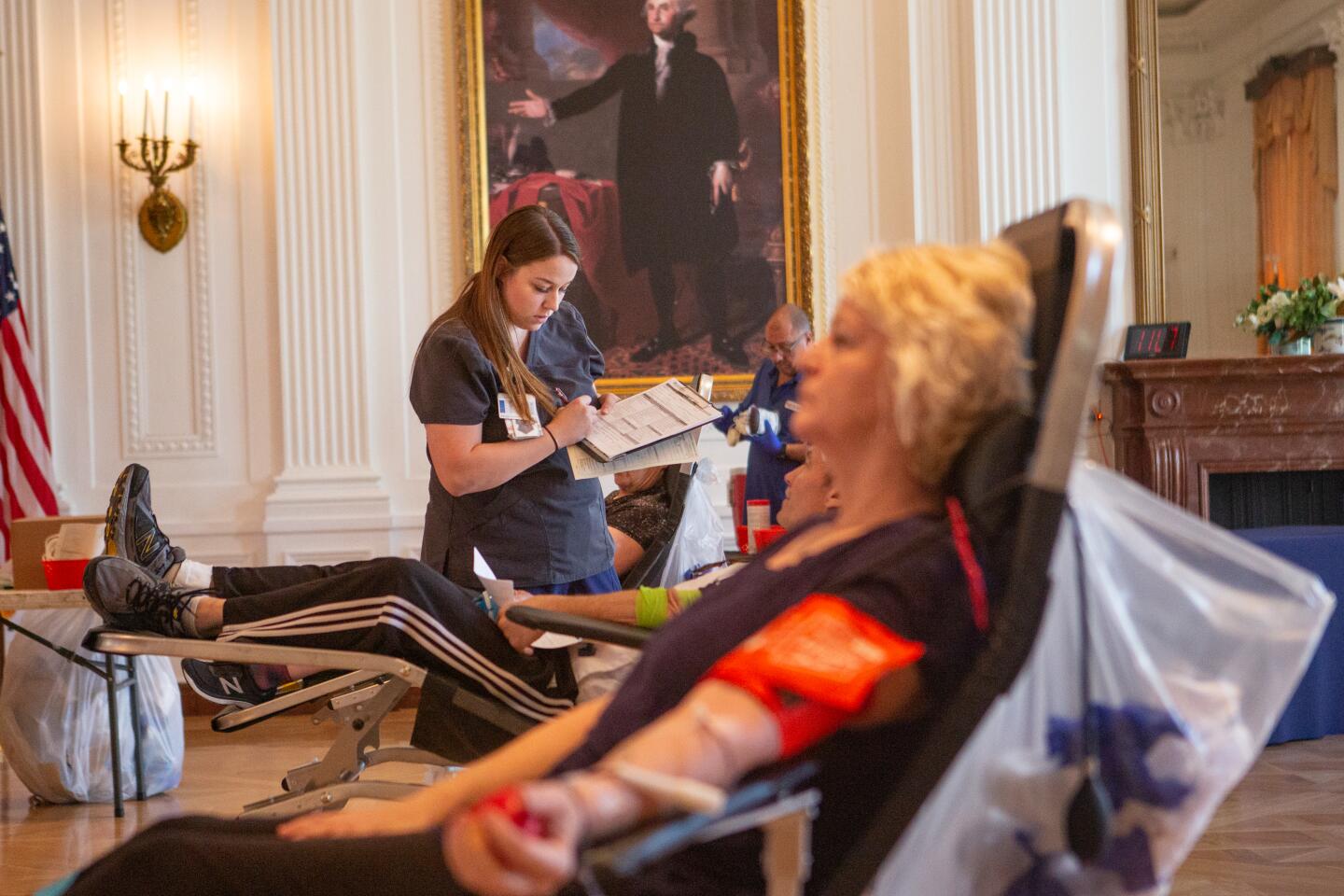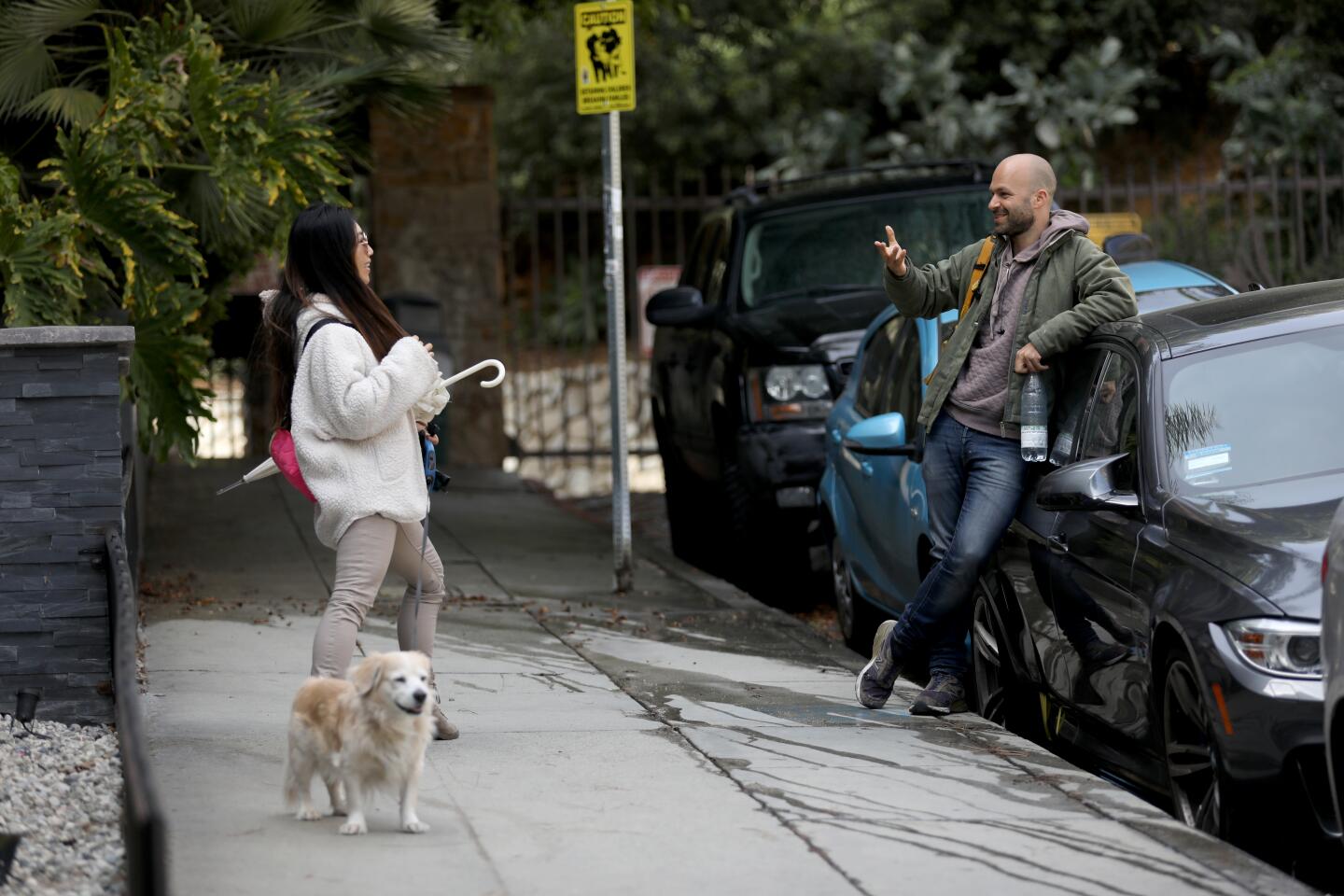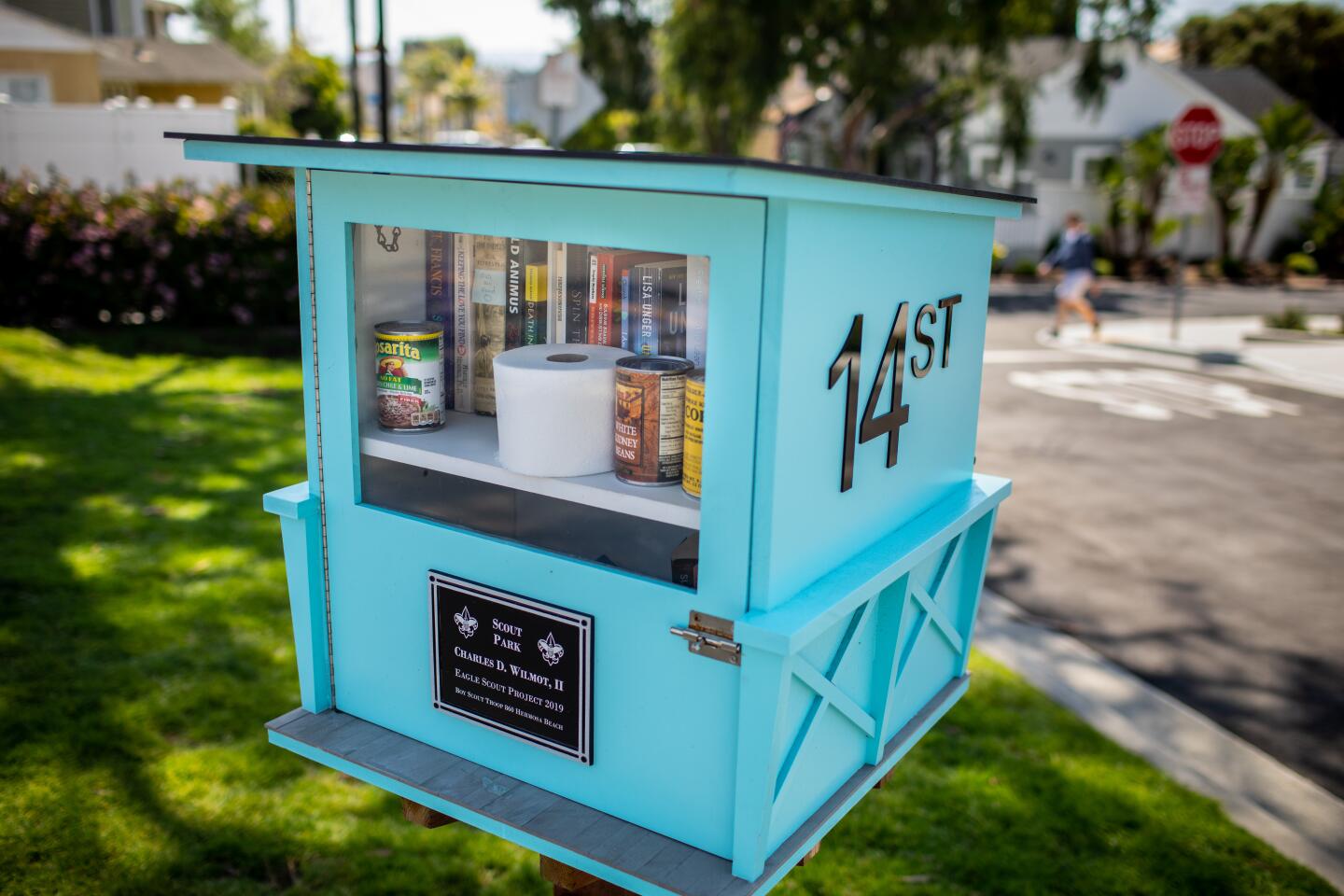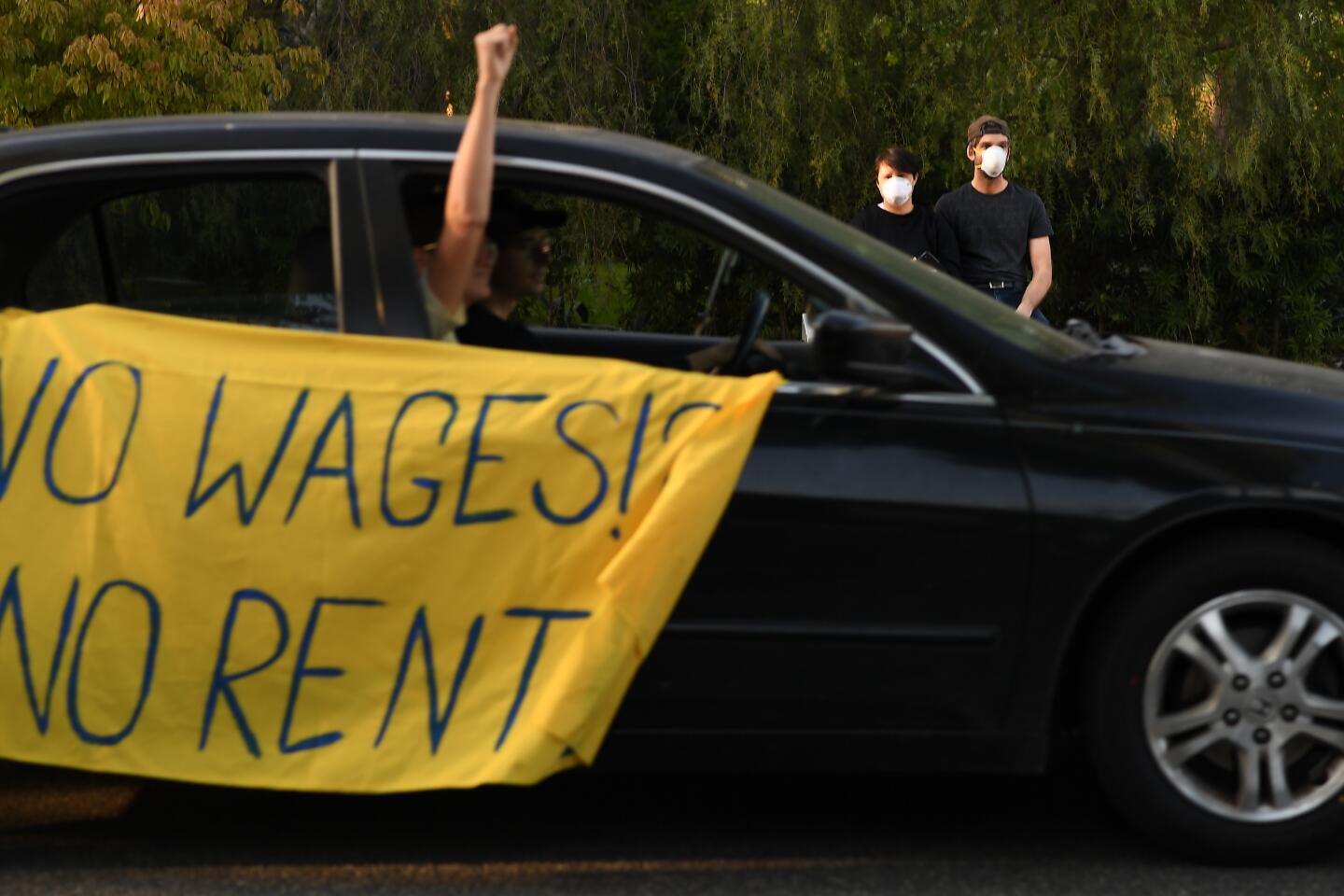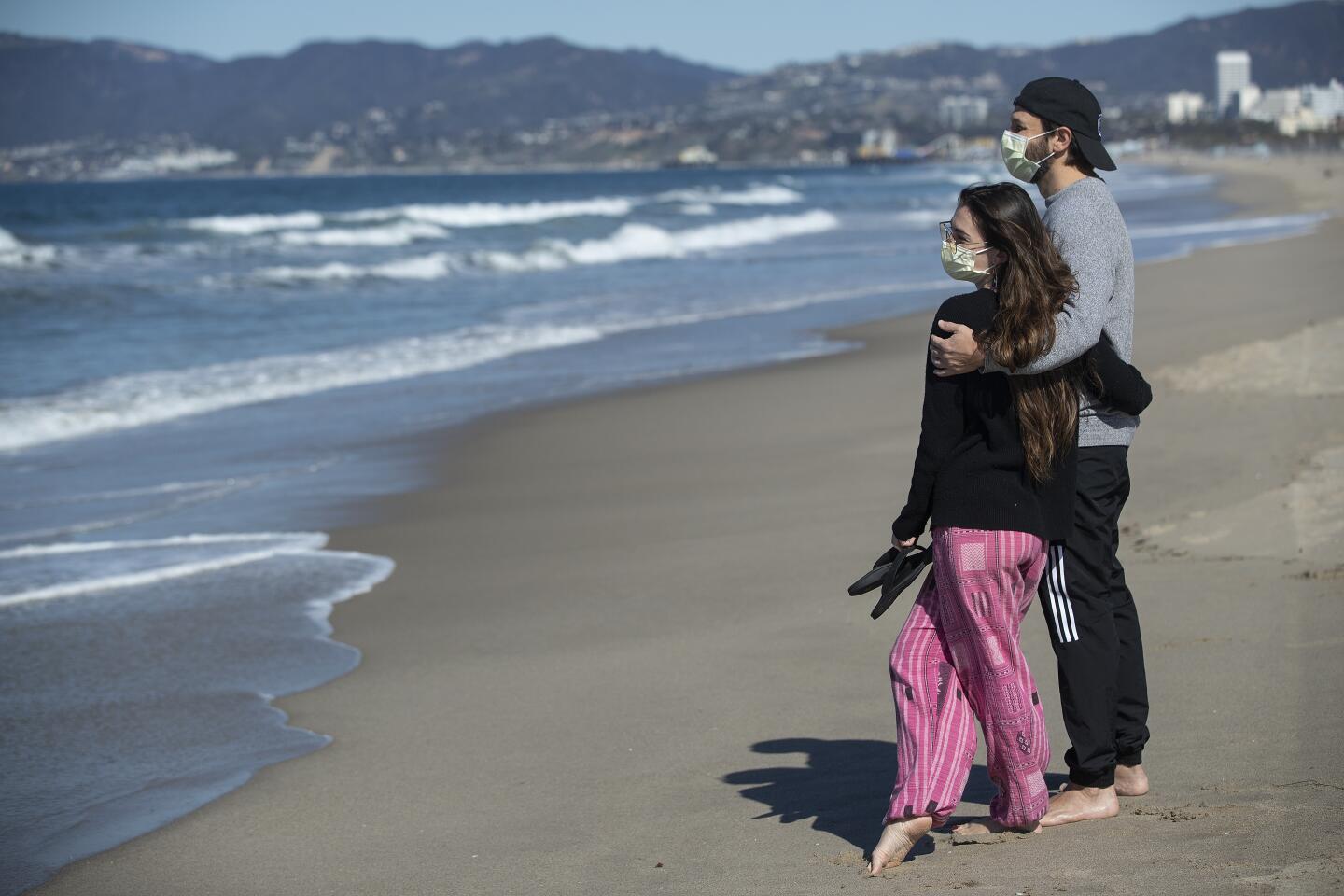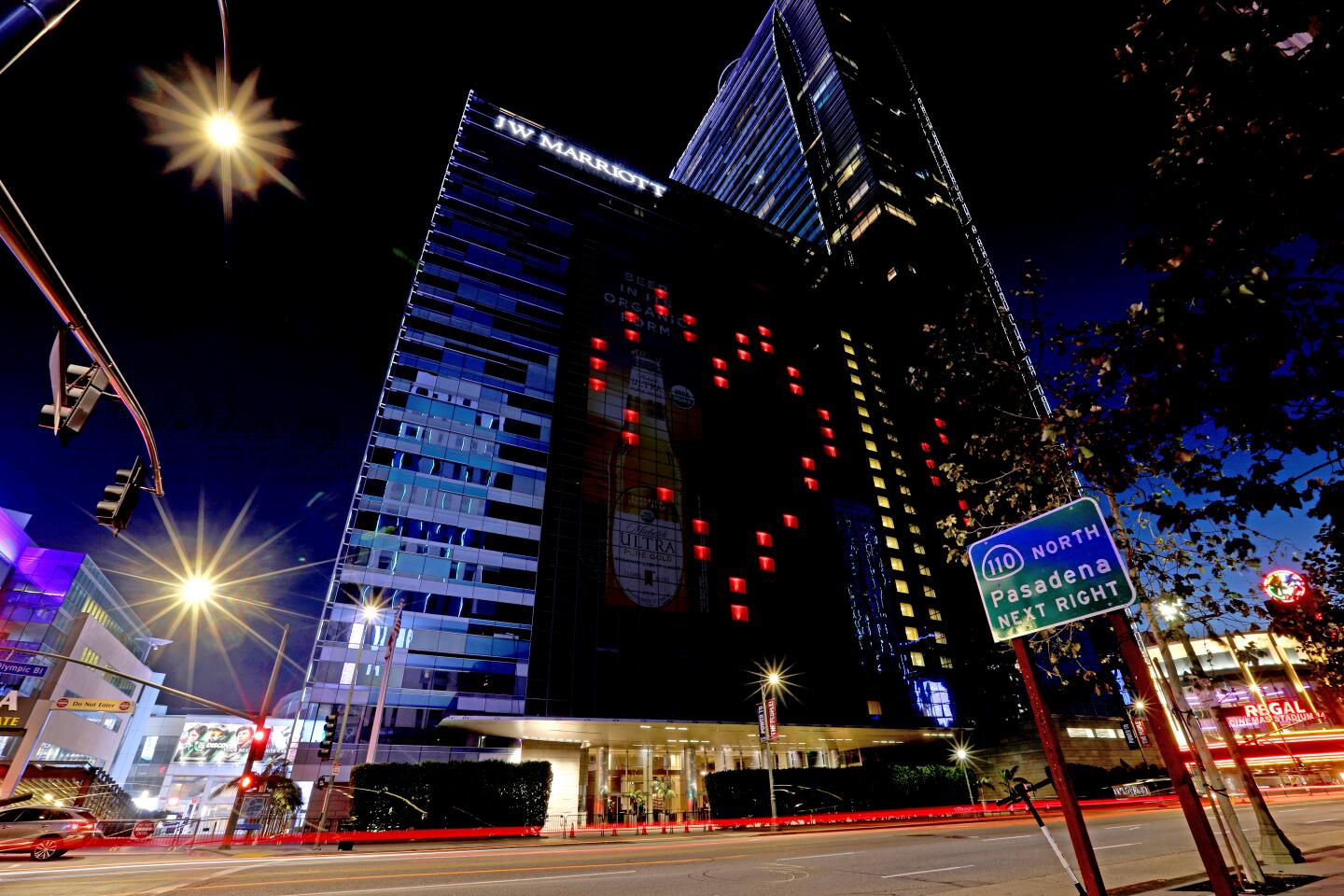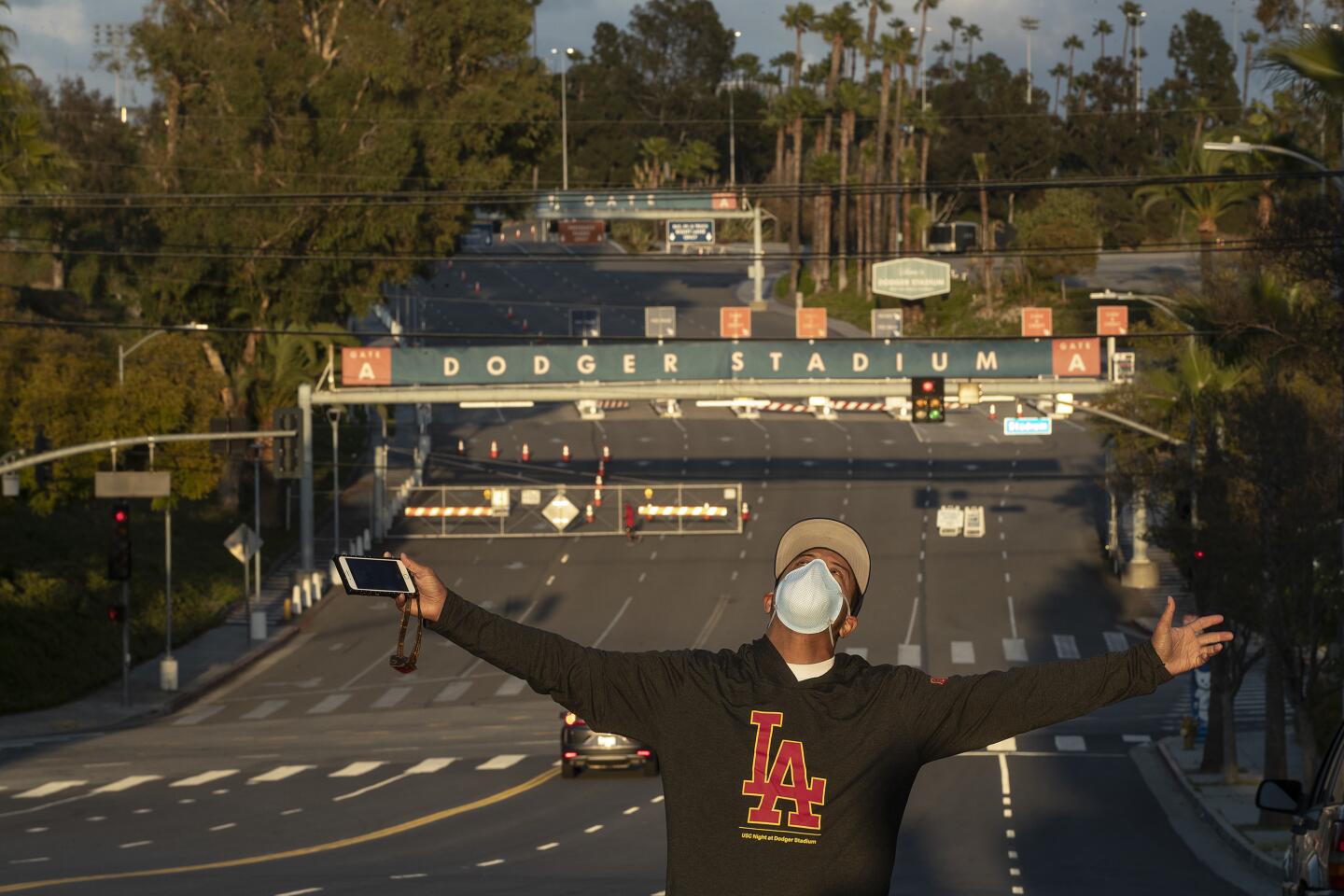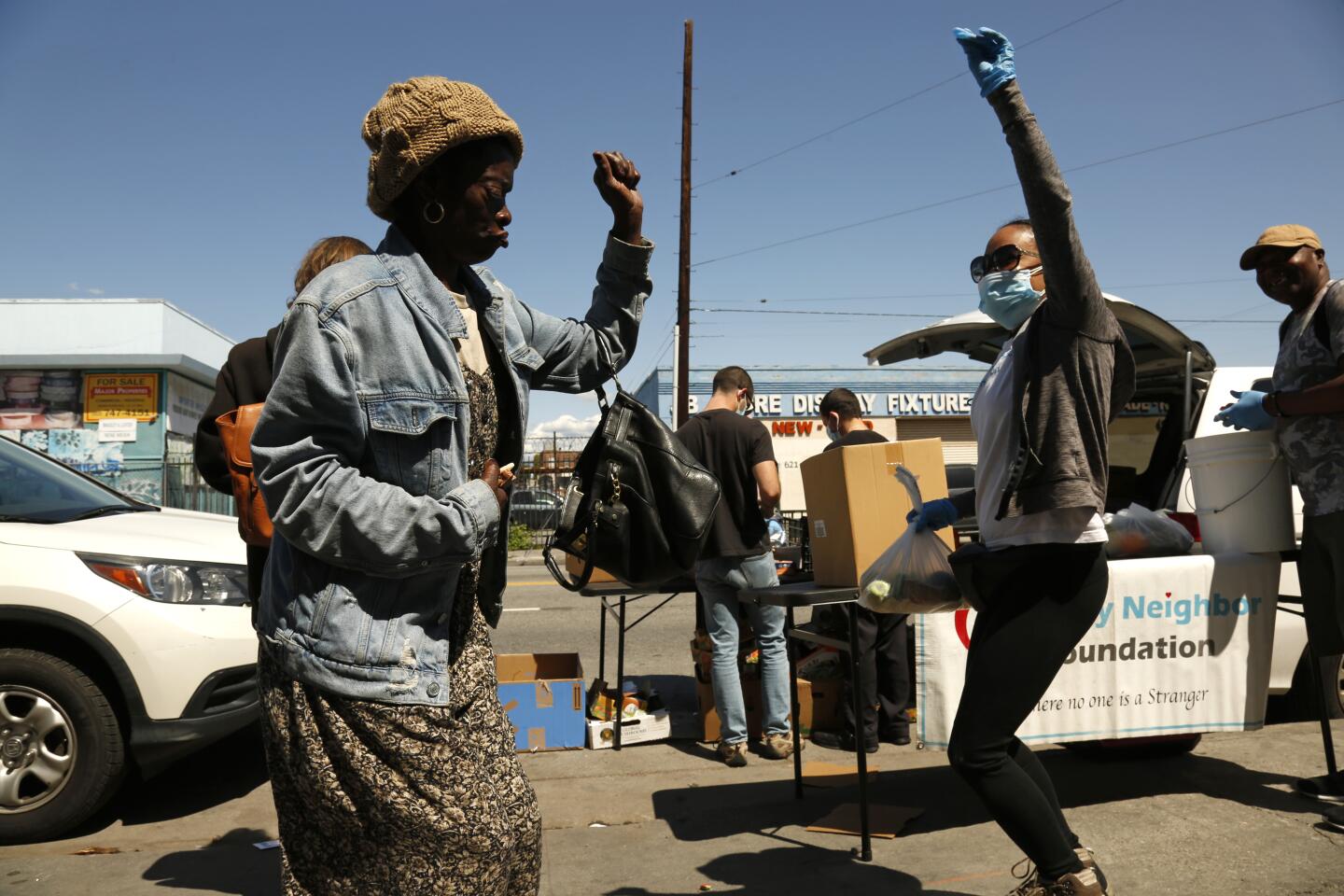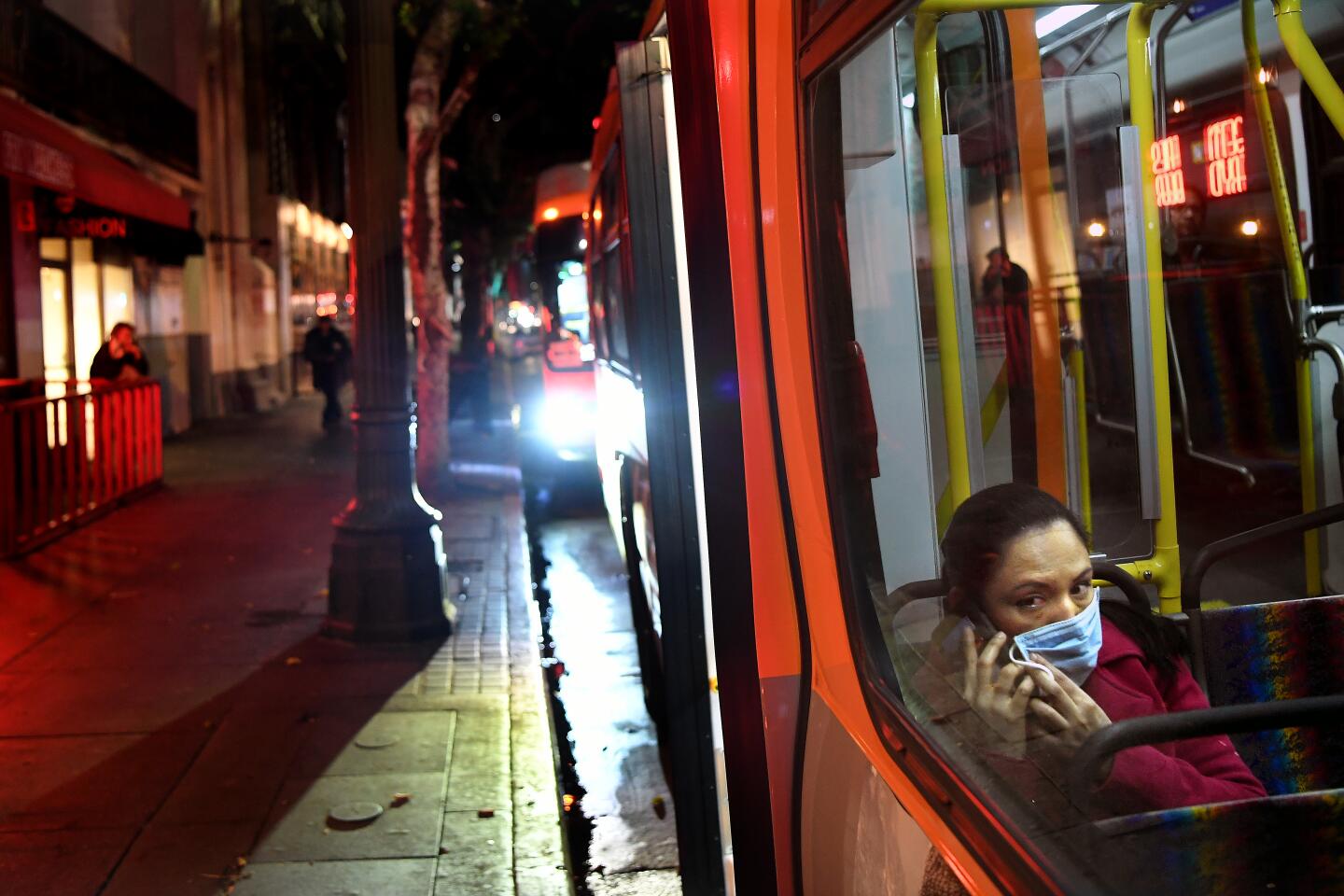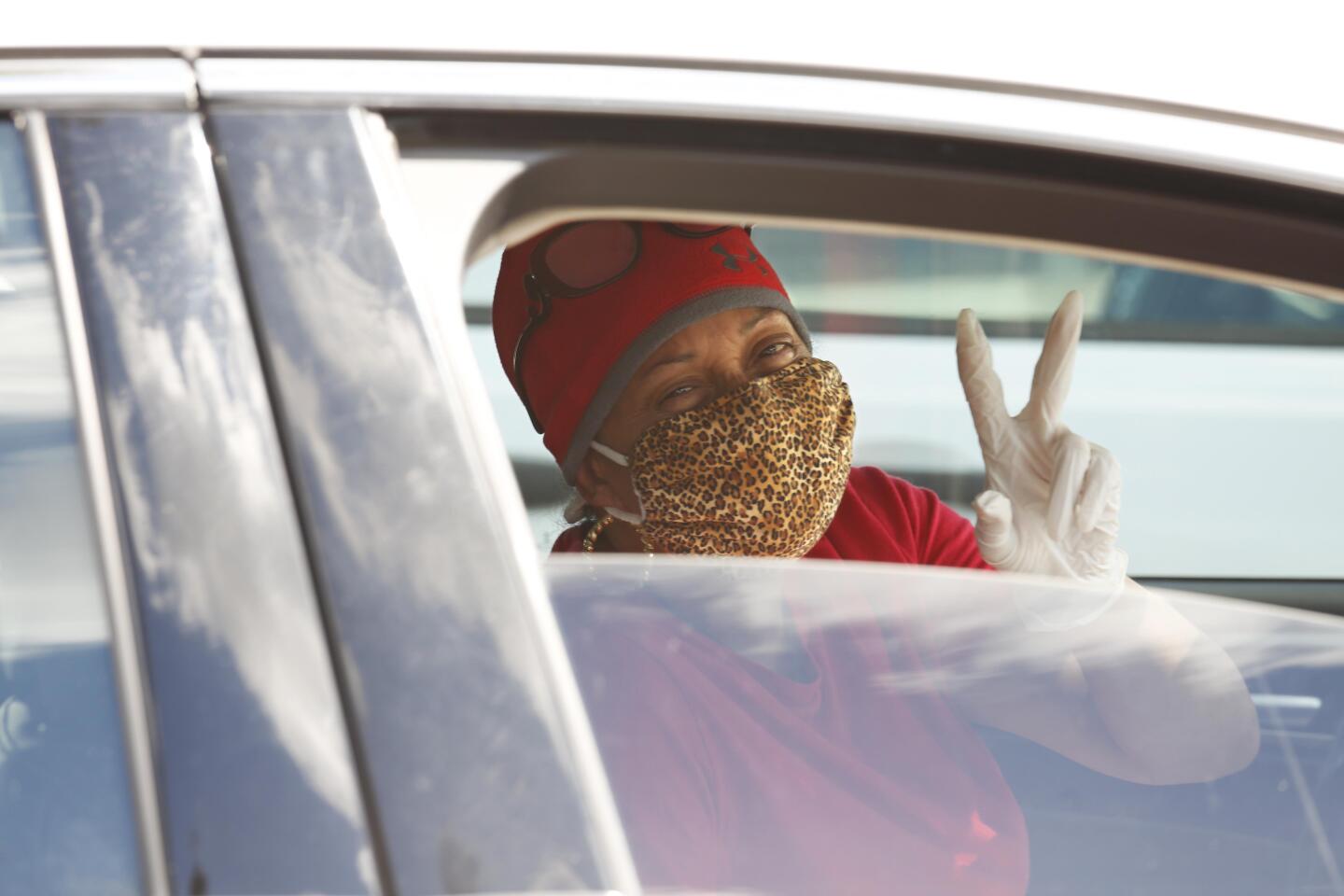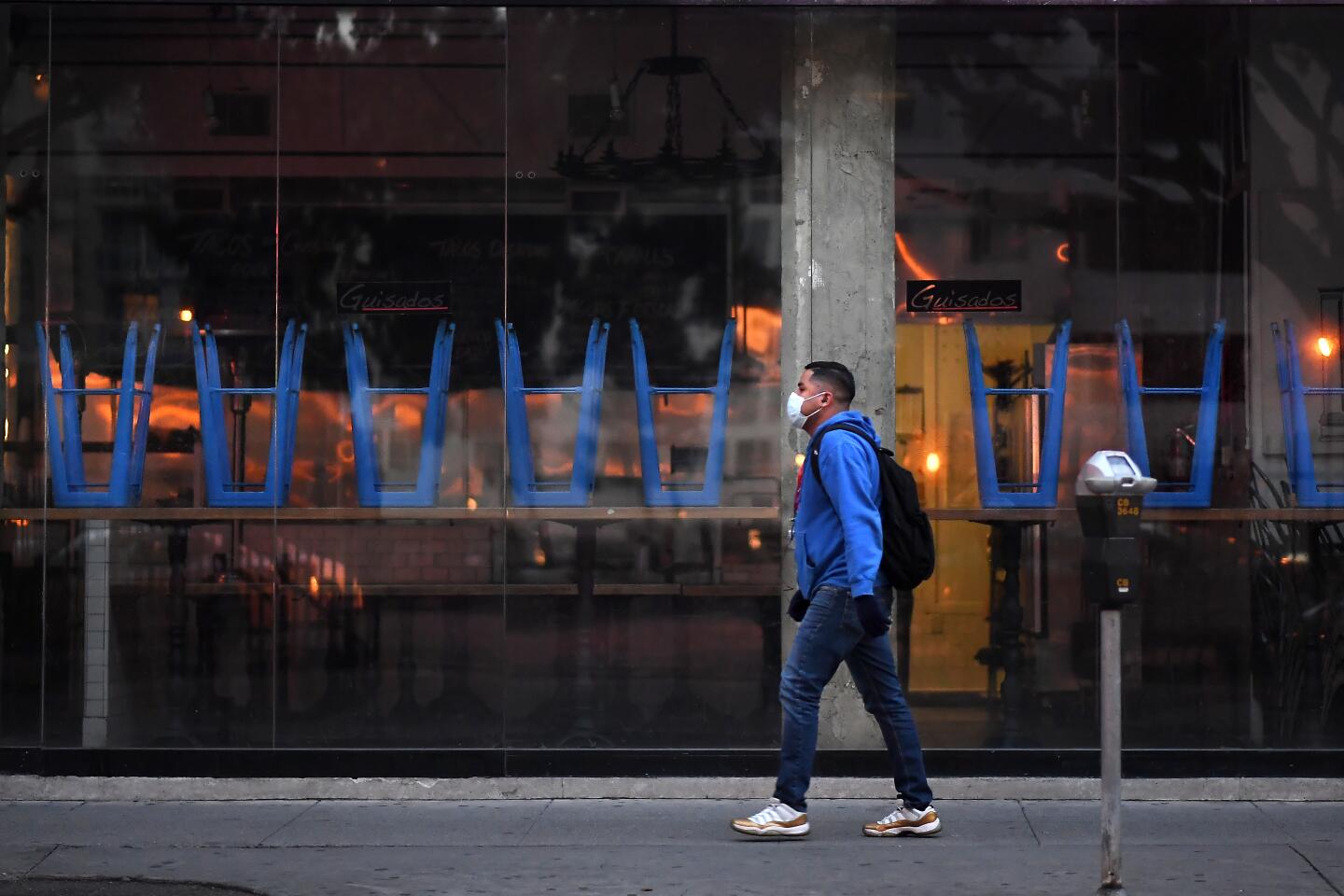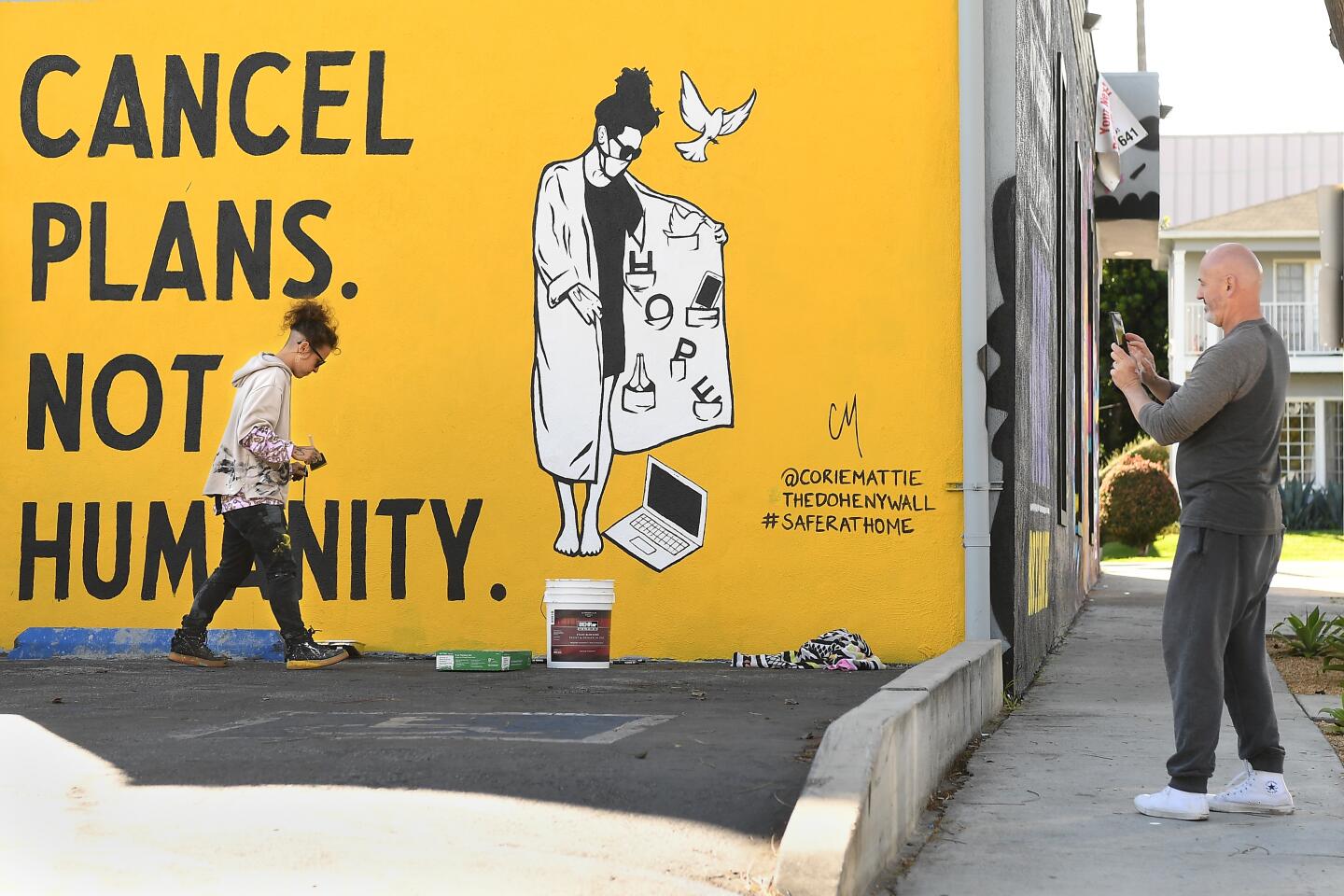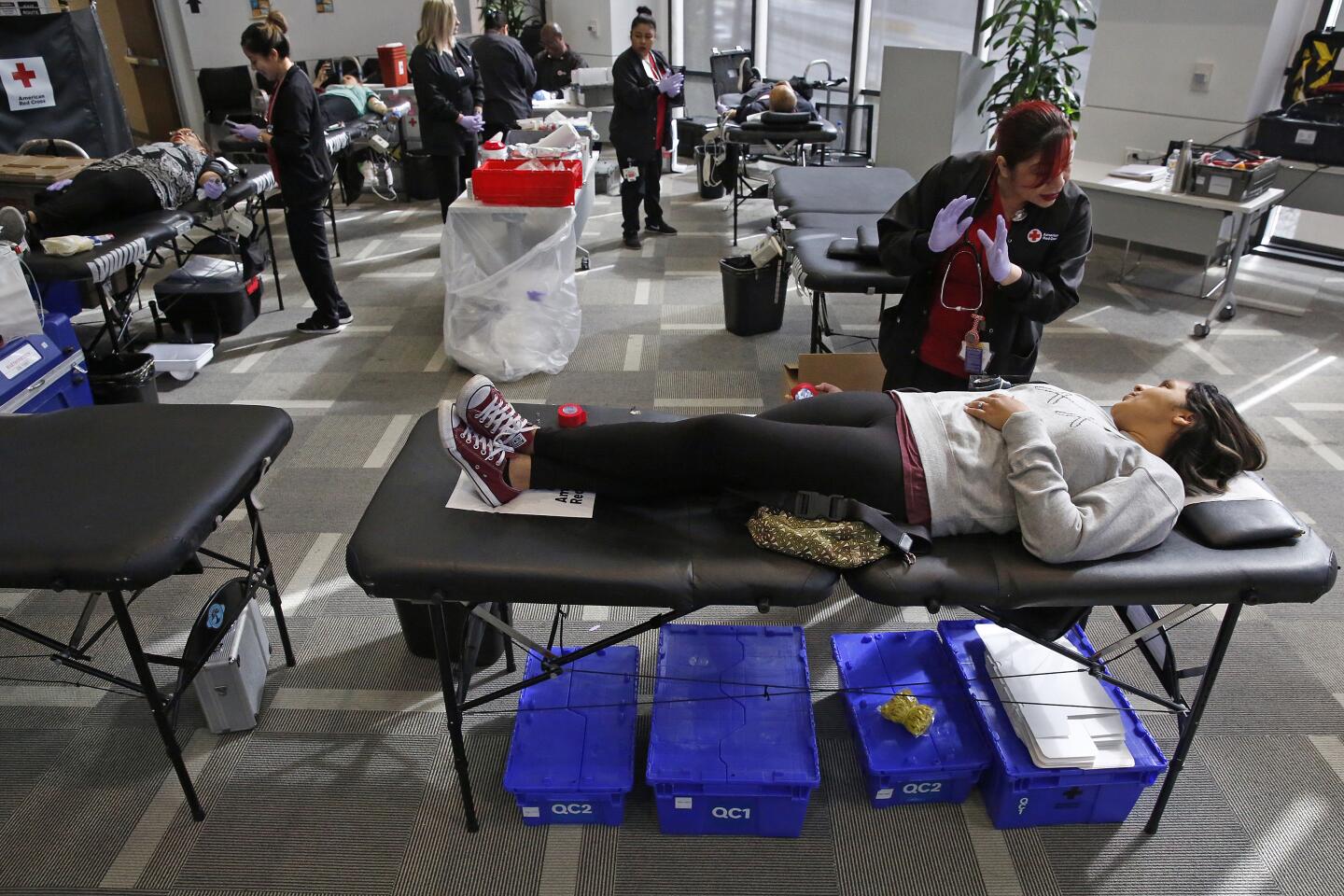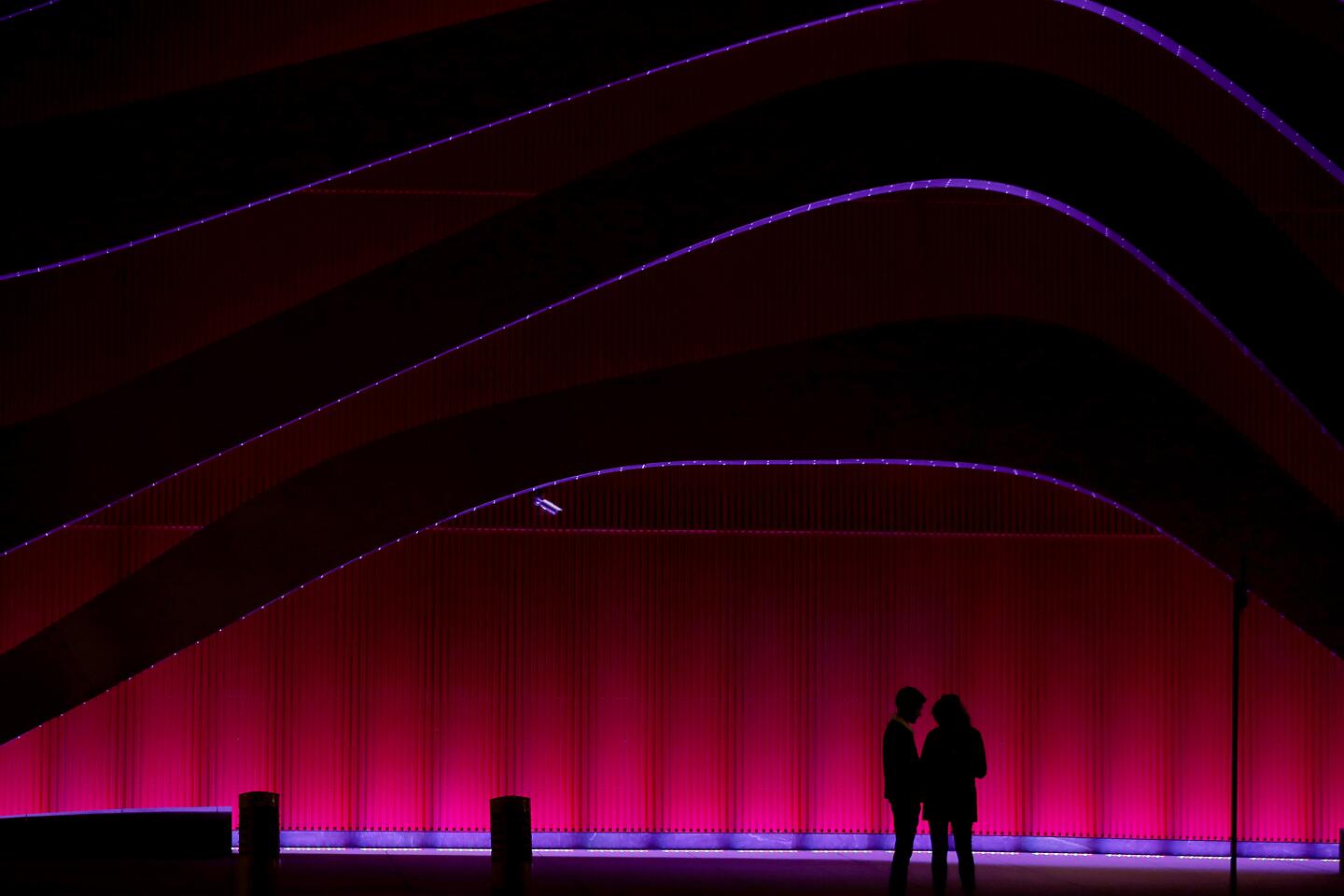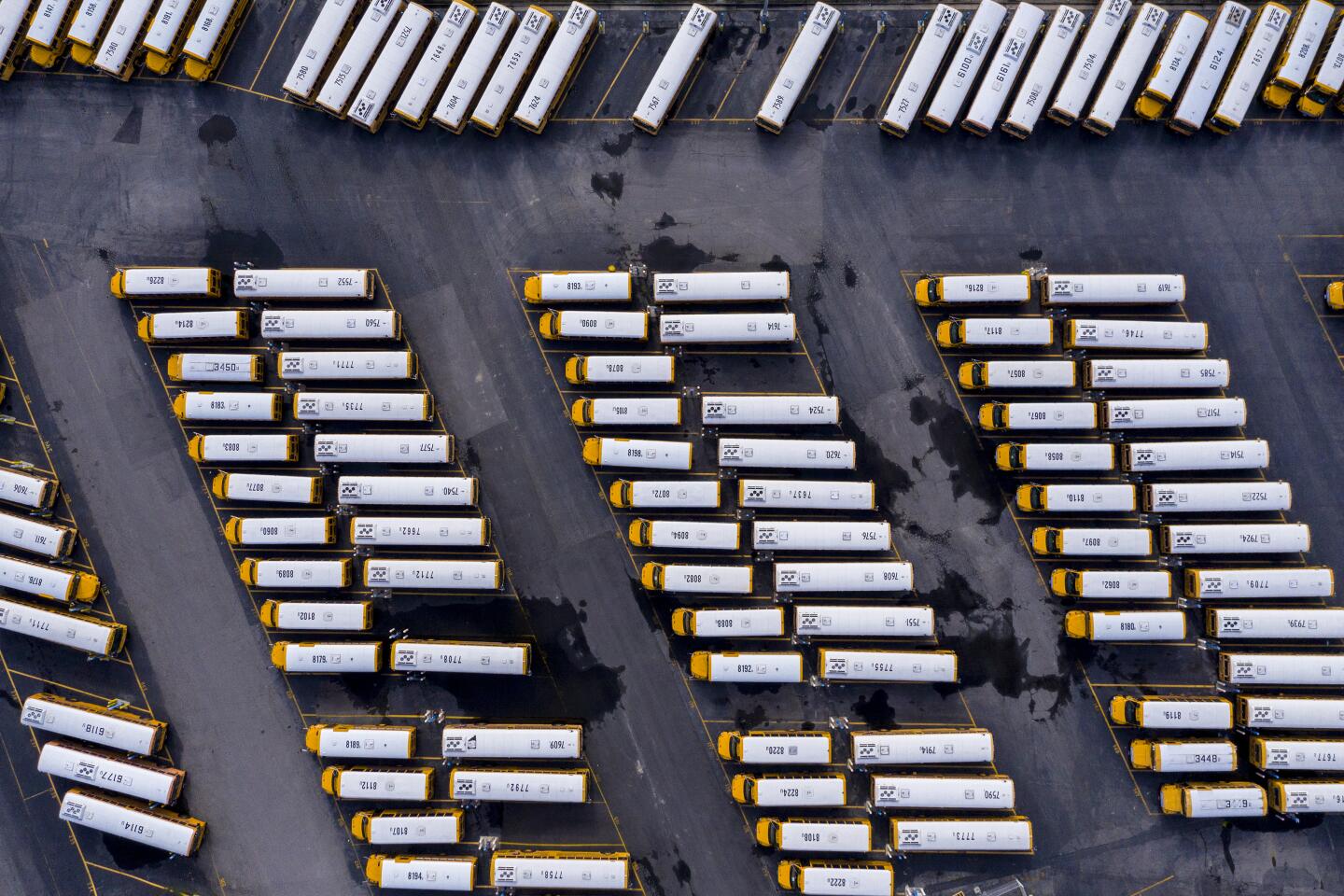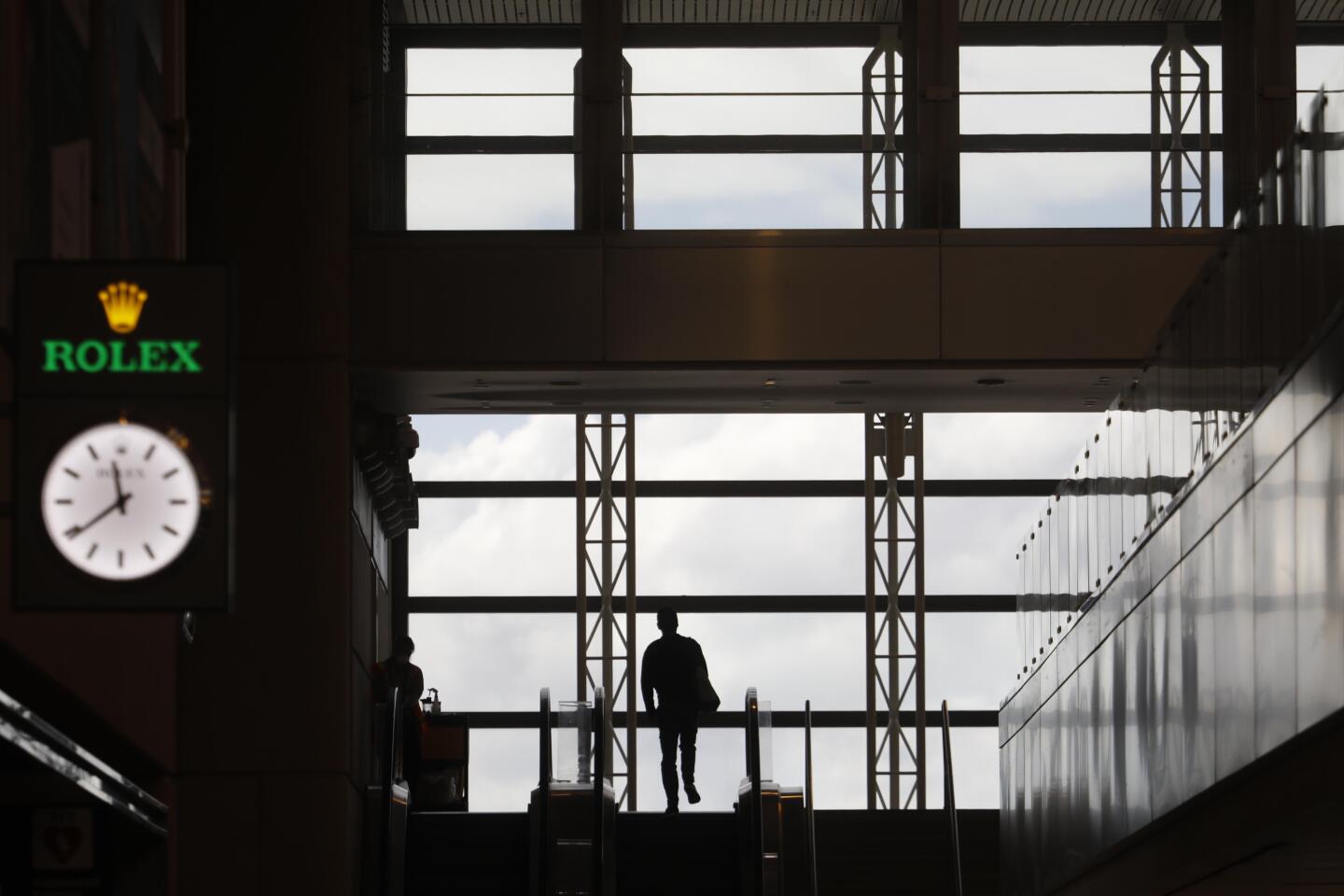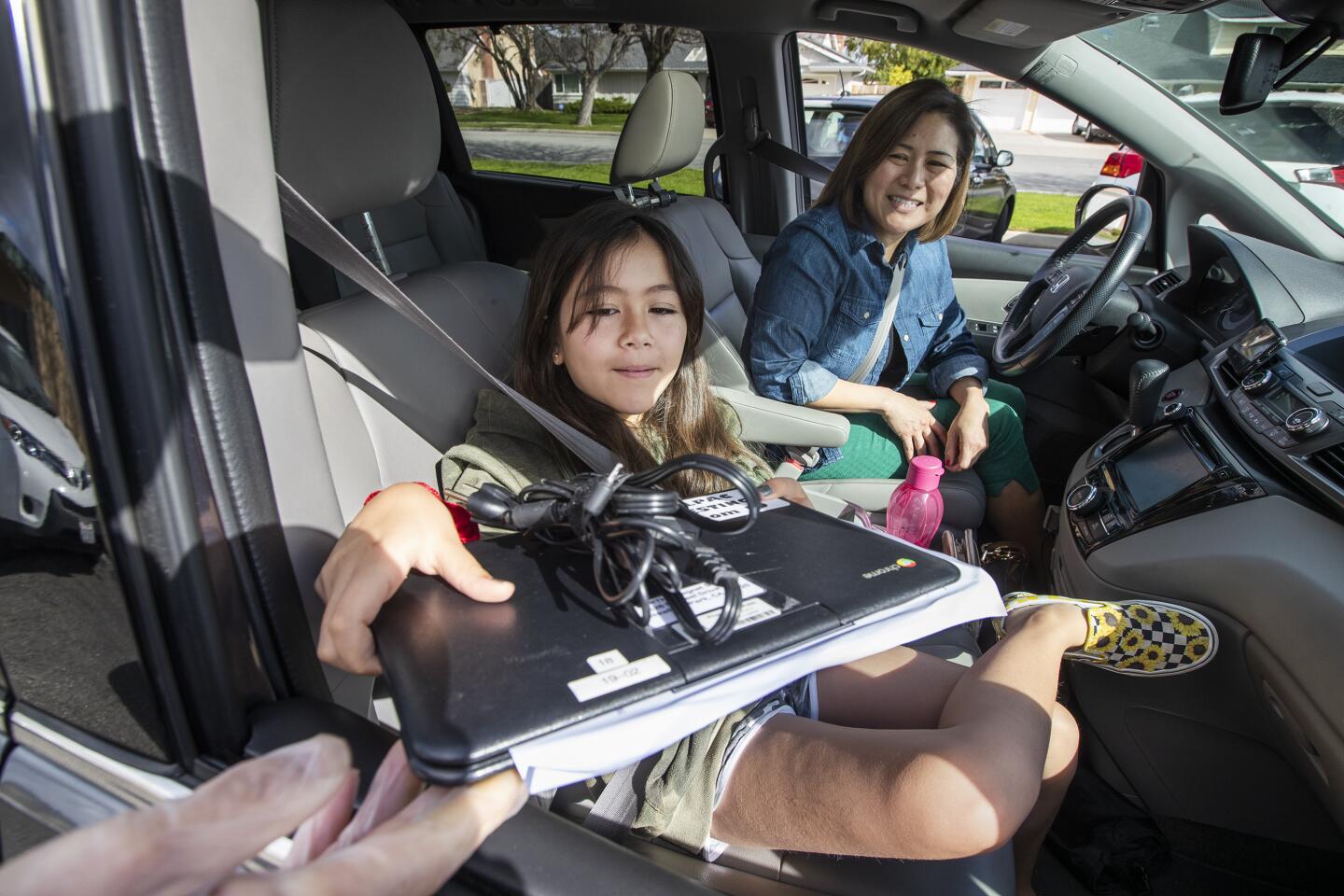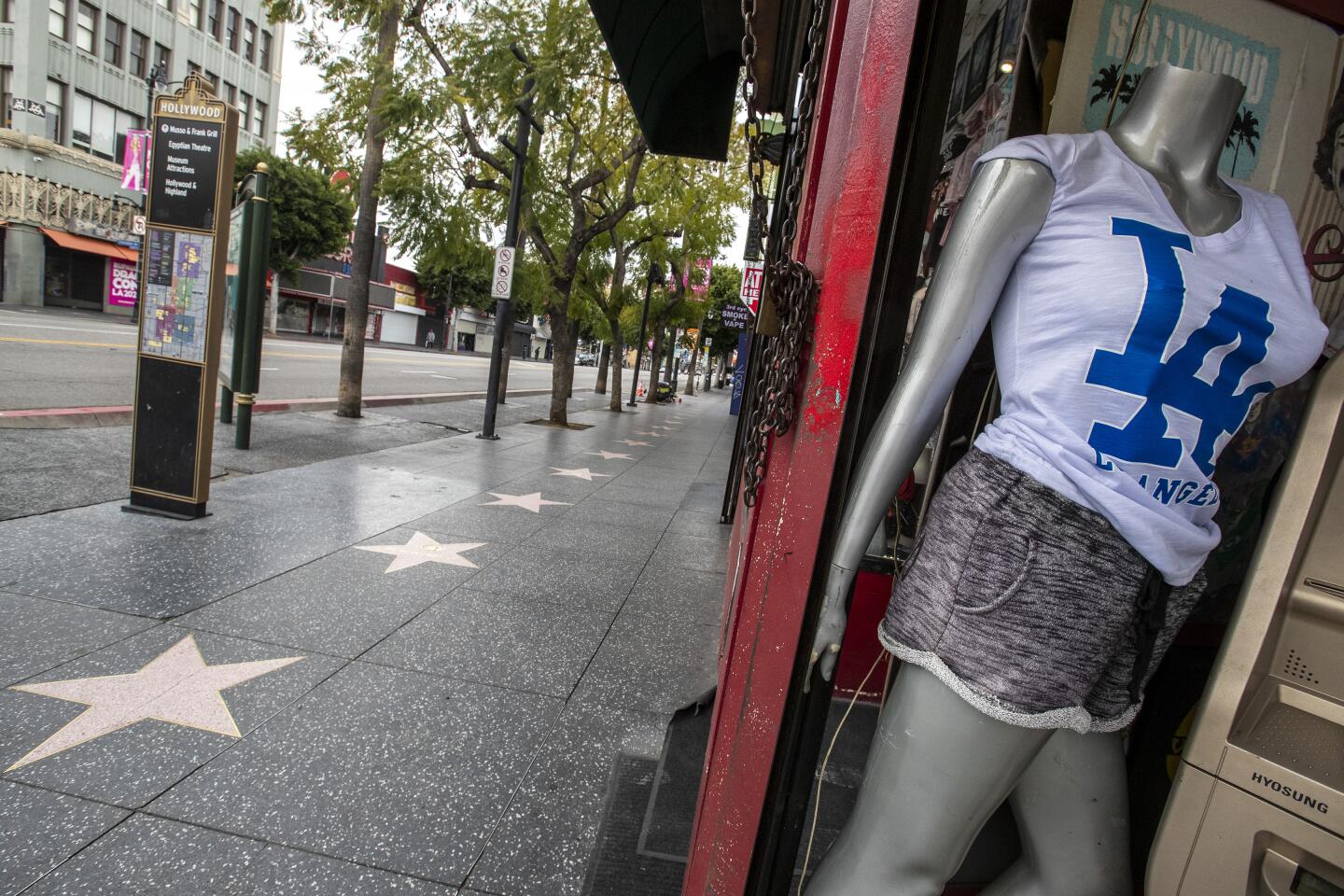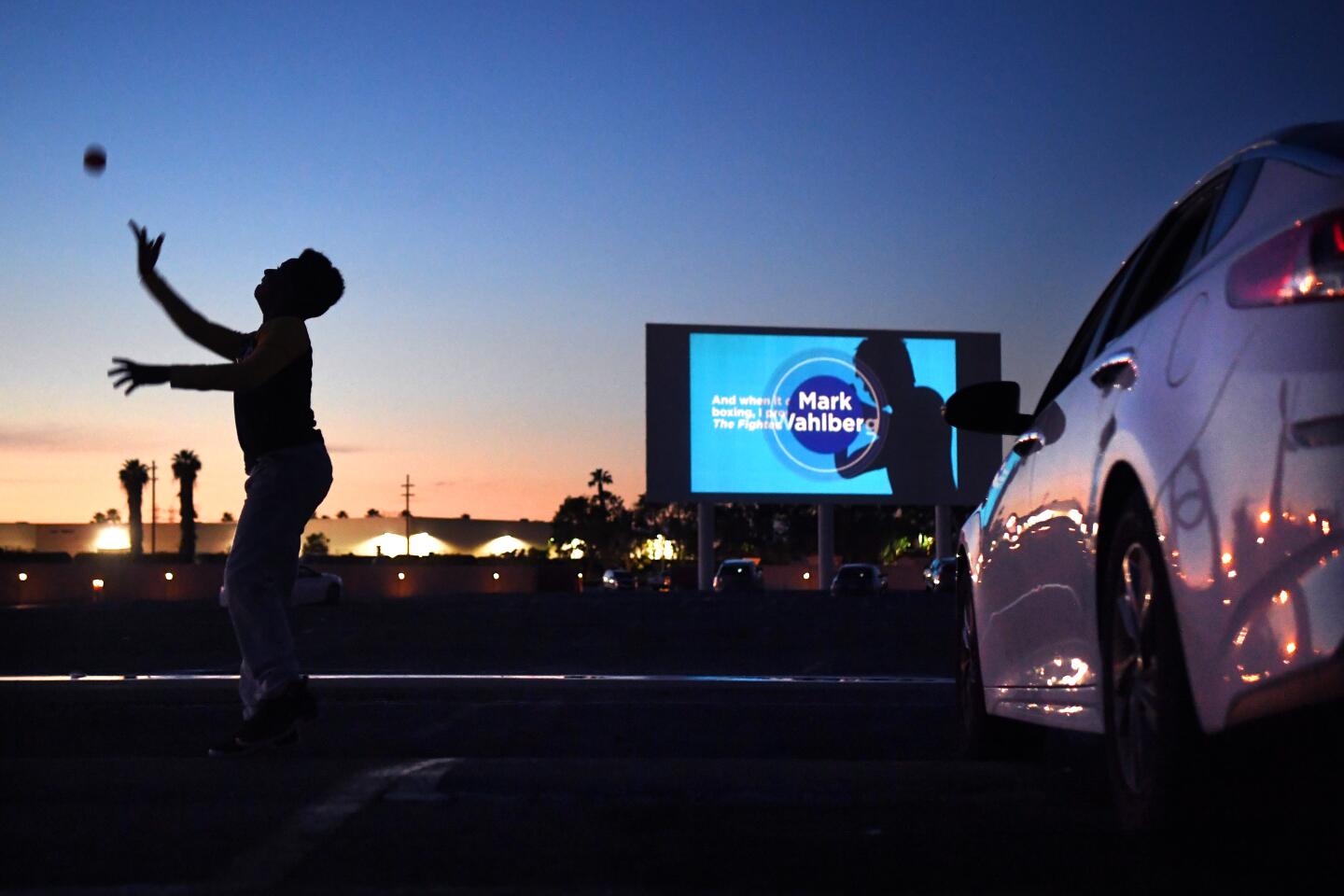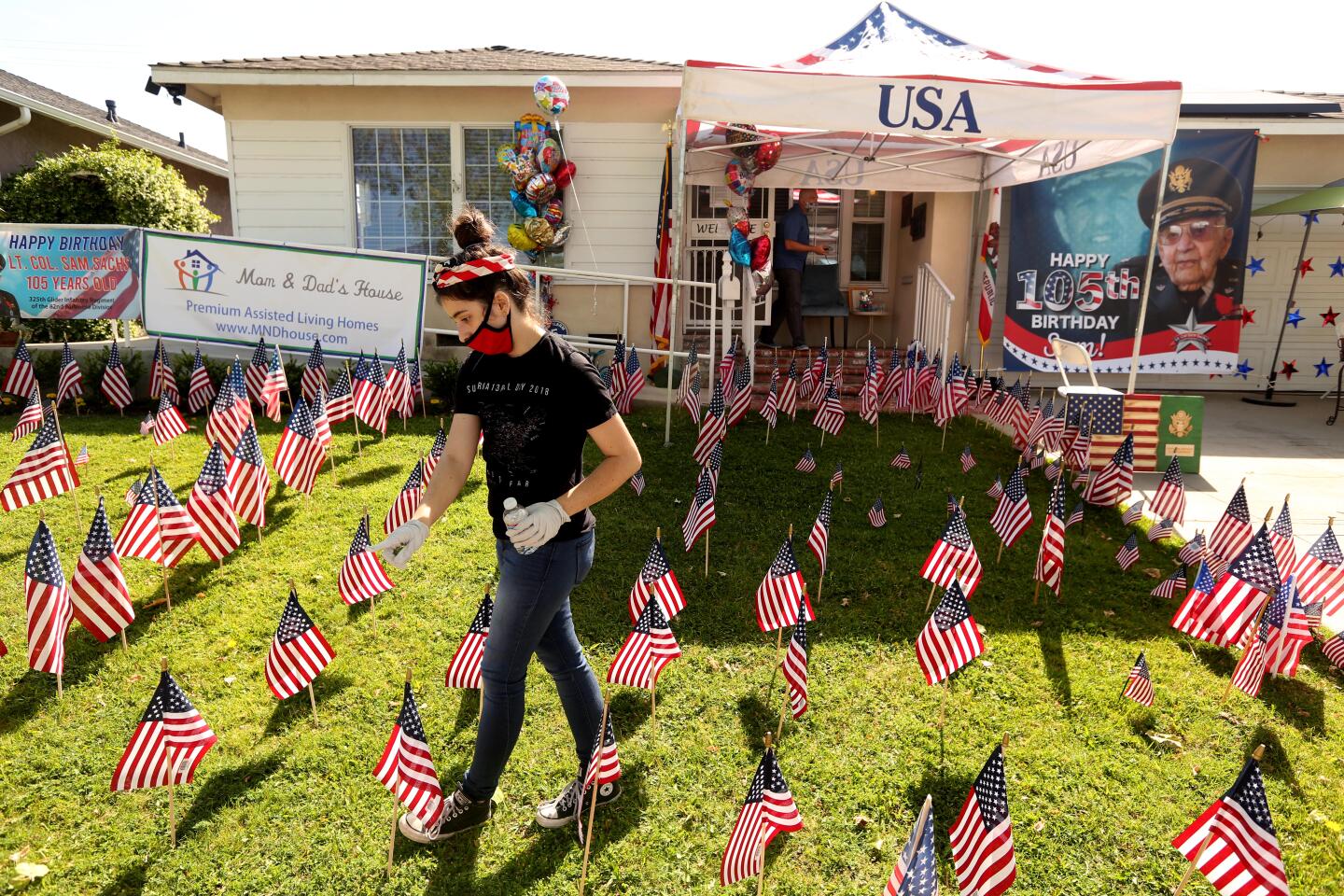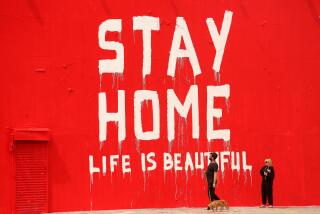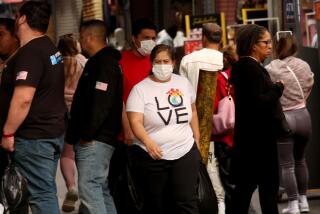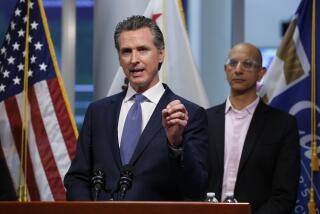SACRAMENTO — Gov. Gavin Newsom said California needs to increase testing, protect high-risk residents from infection and expand hospital capacity before the state can begin to modify the unprecedented stay-at-home order he imposed one month ago and gradually return to a sense of normalcy.
“I want you to know it’s not, it will not be a permanent state,” Newsom said of the restrictions put in place to fight the spread of coronavirus. “We recognize the consequences of the stay-at-home orders have a profound impact on the economy, your personal household budget, your personal prospects around your future.”
The governor broadly described the steps his administration expects to take in the weeks and months ahead to protect the public and gauge how long the order should remain in place, underscoring a transition in the fight against the virus in recent days as California and other states map out plans to ease restrictions.
Newsom also gave Californians a glimpse of what their “new normal” might look like when the rules are eventually loosened, noting that face coverings could become a mainstay, schools might stagger start times for students, restaurants may reopen with fewer tables and large gatherings would remain off limits.
The new parameters Newsom outlined Tuesday suggest the state must meet a high bar before walking back the order.
The administration highlighted six key indicators for altering his stay-home mandate, including the ability to closely monitor and track potential cases, prevent infection of high-risk people, increase surge capacity at hospitals, develop therapeutics and ensure physical distance at schools, businesses and child care facilities. The state also must develop guidelines for when to ask Californians to stay home again if the governor modifies the order and the virus surges, he said.
Newsom and officials in his administration say their strategy to slow the spread of the virus is working, pointing to relatively low growth in COVID-19 hospitalizations as evidence that staying home and social distancing are preventing a surge of infections.
But that success comes with a cost.
More than 2.3 million Californians filed for unemployment benefits in the last month as businesses closed due to state mandates, and the economy continues to unravel. Some students lost access to free and reduced-cost meals when schools shuttered, and many have not participated in virtual learning. The governor’s strategy of distancing residents can also lead to social isolation and increased health risks for the elderly and vulnerable populations.
Despite his attempts to quell uncertainty, Newsom has not yet provided a timeline for when the state’s nearly 40 million people can expect to return to work — or move about freely. And to those struggling to make ends meet, that’s the question they want answered most.
“When are the restrictions going to be lifted?” asked Miguel Tot, who last worked at his job managing a downtown Los Angeles restaurant on March 16. “There’s no timetable on that, so I have no idea, you know, when normality is going to come back.”
The 34-year-old said he and his wife have enough money saved to buy groceries, pay rent and bills and provide for their two young children for about two months. Despite having no health insurance, Tot said he began looking for a new job late last month in anticipation of that safety net running out and with no sense of when the order will end.
The governor said the length of the order largely depends on when hospitalizations and intensive care patients with COVID-19 flatten and decline in California. He said the end date is fluid and that he expects to provide an answer in the next two weeks if conditions continue to improve.
California has seen more than 25,000 confirmed cases of COVID-19 and 767 deaths. On Tuesday, Los Angeles County public health officials confirmed 40 more deaths linked to the coronavirus, the highest number of deaths reported in a single day.
The Newsom administration has predicted a peak in COVID-19 cases to begin in May and said hospitalizations are below expectations.
Newsom urged Californians to remain at home and practice physical distancing.
“You’ve met this moment in remarkable ways, and it’s put us as a state in a position where we can lay out this roadmap, but again it is all conditioned on us continuing to stay the course on the current road that we’re on,” Newsom said. “Stay at home, practice appropriate social distancing and make sure that we are physically distanced from one another.”
As chief executive, Newsom has the power to call off the statewide order, but individual counties can keep their own orders in place. Newsom announced a pact on Monday to work with his counterparts in Oregon and Washington to develop a regional strategy to reduce restrictions on residents in the coming months.
“The most important thing for leaders is to be honest and be honest about what we don’t know,” said Daniel Zingale, a former aide to Newsom who retired earlier this year. “If it comes to a point where we do know more, then tell them.”
Lisa Berkman, a professor of public policy and epidemiology at the Harvard University T.H. Chan School of Public Health, agrees that offering false hope won’t help struggling Californians or anyone else.
“It’s not helpful to give an end date if we don’t know an end date,” Berkman said. “I don’t think that any governor should be saying that we’re going to end this in three, four or five weeks when it’s completely unknown. You don’t want to end this until you see a leveling out of the curve. You don’t want to end it early and have an uprising in cases.”
Berkman’s work is focused on the health effects of public and workplace policies. People who are socially isolated have a higher risk of mortality, including dying of cardiovascular disease, infectious diseases and a number of other causes, she said.
She said orders across the country have exposed socioeconomic inequality in disadvantaged communities, and she stressed the importance of reducing isolation by expanding internet access, introducing government programs to help at-risk residents and calling and checking on elders.
Newsom said earlier this month that Google would donate 100,000 mobile hot spots to provide free and unlimited high-speed Internet for the remainder of the school year, but it’s unclear which communities will receive that benefit.
Berkman and other academic experts support Newsom’s call for the state to expand its testing beyond sick patients to attempt to ascertain the percentage of the population that is infected, or to determine how many people previously contracted the disease and have immunity.
Newsom has said antibody blood tests are “critical in terms of our capacity to make a determination about community spread and about immunity.”
Diana Dooley, a chief of staff to former Gov. Jerry Brown, said the lack of access to tests has prevented California and other states from accurately determining how long to keep orders in place.
“The whole issue of how much it’s out there will drive the fundamental question of when could it end,” she said.
The governor has said testing broader samples of the public throughout the state, and not just people exhibiting COVID-19 symptoms, will help officials determine when to lift the restrictions.
For now, that kind of testing is occurring only at the local level or at universities. Los Angeles County, for example, began testing the blood of 1,000 randomly selected residents last week to see whether they have or previously had COVID-19.
1/82
Socially distanced bikers and walkers, against a backdrop of the Queen Mary, make their way along pedestrian and beach bike path on the first day that Long Beach reopened the path on Monday May 11, 2020. The city of Long Beach eased a few of its public health restrictions, allowing under certain guidelines the reopening of pedestrian and beach bike paths, tennis centers and courts. Beach bathrooms are also reopening, but the parking lots and beaches still remain closed. (Genaro Molina/Los Angeles Times)
2/82
Traffic remains light on the southbound 110 Freeway headed toward downtown Los Angeles on April 28. (Robert Gauthier / Los Angeles Times)
3/82
Dominique Barrett, center, known as “King Vader” to his 2.4 million TikTok followers, prepares to shoot a video on April 30 in Glendora. (Dania Maxwell / Los Angeles Times)
4/82
Cody Purcell of Redondo Beach rides a wave, glowing from the bioluminescence, in Hermosa Beach, CA, after midnight Friday morning, May 8. (Jay L. Clendenin/Los Angeles Times)
5/82
Friends play spikeball, a game perfect for social distancing on an open but restricted San Buenaventura State Beach. (Brian van der Brug / Los Angeles Times)
6/82
The majority of golfers are wearing masks while hitting balls on the driving range at Van Buren Executive Golf Course in Riverside. (Gina Ferazzi / Los Angeles Times)
7/82
Beaches including Harbor Cove Beach were open but beachgoers were not supposed to be sitting on the sand. (Brian van der Brug / Los Angeles Times)
8/82
Tango instructor Yelizaveta Nersesova leads a Zoom tango event from her Los Angeles home April 27 that brought together hundreds of dancers from around the world. (Jason Armond / Los Angeles Times)
9/82
Grocery store workers, joined by United Food and Commercial Workers International Union Local 770 representatives and community members, hold a rally in support of strict social distancing on May 1 at a Ralphs store in Hollywood where 19 employees have tested positive for COVID-19. (Kent Nishimura / Los Angeles Times)
10/82
Mostly masked commuters keep their distance from one another on a Metro bus in downtown Los Angeles on April 29. (Gabriella Angotti-Jones / Los Angeles Times)
11/82
Gregory Kuhl, 69, heads home after a shopping trip in Hollywood on April 28. Big cracks in the street, cars parked in driveways blocking sidewalks and uneven pavement levels make navigating his route difficult. (Dania Maxwell / Los Angeles Times)
12/82
Tenants and their supporters from across Los Angeles gather at city hall to call on L.A. Mayor Eric Garcetti, the L.A. City Council and California Gov. Gavin Newsom to cancel rent and mortgage payments during the COVID-19 crisis. (Luis Sinco / Los Angeles Times)
13/82
Aerial view of over 100 vehicles lined up at the West Valley COVID-19 testing center at Warner Center in Woodland Hills. (Brian van der Brug / Los Angeles Times)
14/82
Senior Mason Wise, left, helps his sister, Mackenzie, a sophomore, clean out her PE locker at El Camino Real Charter High School in Woodland Hills. School officials were allowing no more than five students at a time on campus to take home their belongings. (Brian van der Brug / Los Angeles Times)
15/82
Shuttered storefront businesses in the garment district of Los Angeles. California’s unemployment rate has skyrocketed since the statewide coronavirus shutdown took effect. (Luis Sinco / Los Angeles Times)
16/82
Healthcare workers celebrate as Claudia Martinez is discharged from the ICU after she recovered from COVID-19 at Scripps Mercy Hospital in Chula Vista. (Marcus Yam / Los Angeles Times)
17/82
Carson residents Kaeli Burks, 3, left, and her cousin Bailey Watson, 5, look out the window of their car after their mothers helped them with self-testing at a new drive-up testing site for COVID-19 in Carson. Free COVID-19 testing is available to all city residents thanks to a partnership between the city and US Health Fairs. (Genaro Molina / Los Angeles Times)
18/82
Norm and Tracy Kahn enjoy eating dinner outside on a small cafe table sitting in blue chairs on their side yard during the coronavirus pandemic on April 27 in Riverside. “During this pandemic, eating outside offers us an opportunity to change surrounding and appreciate the calmness of being outdoors among trees, scents from nature and the sounds of birds,” she said. Also adding, “Mixing up where we eat puts variety into our days and takes away the sameness of feeling trapped at home.” (Gina Ferazzi / Los Angeles Times)
19/82
Ronald Reagan UCLA Medical Center nurses carry supplies outside the hospital. (Robert Gauthier / Los Angeles Times)
20/82
Tom Sean Foley pauses on a walk with his kids, Cathelen Claire, “C.C.,” 3, and Timothy Joseph, 4, to take a photo in front of the “Love Wall,” mural by artist Curtis Kulig, outside of Smashbox Studios in Culver City. (Jay L. Clendenin / Los Angeles Times)
21/82
Protesters stand along Mission Blvd. in Pacific Beach during A Day of Liberty rally on April 26. The protesters were against the government shutdown due to the coronavirus. (K.C. Alfred / San Diego Union-Tribune)
22/82
People make orders at a food truck along Shoreline Avenue in Long Beach. (Luis Sinco / Los Angeles Times)
23/82
Medical staff, wearing protective gear, work inside a COVID-19 isolation area inside the emergency department at Los Angeles County-USC Medical Center in Los Angeles, where patients with the virus are being treated. (Mel Melcon / Los Angeles Times)
24/82
Neighbors practice social distancing while enjoying the nice weather near The Strand in Hermosa Beach. (Gabriella Angotti-Jones / Los Angeles Times)
25/82
Counter-protesters attend a protest to call on state and local officials to reopen the economy in downtown Los Angeles. (Christina House / Los Angeles Times)
26/82
A group of protesters cheer on cars during a vehicle caravan protest to call on state and local officials to reopen the economy in downtown Los Angeles. (Christina House / Los Angeles Times)
27/82
Cedar Mountain Post Acute Rehabilitation staff member Navi Cavaltera waters a flower pot put up by the community to show their support for the nursing staff of the facility in Yucaipa. Eighteen of 20 coronavirus-related deaths in Yucaipa were residents of the skilled nursing facility. (Irfan Khan / Los Angeles Times)
28/82
A pedestrian wearing a protective mask passes a mural on a store on Melrose Avenue in the Fairfax district of Los Angeles. (Allen J. Schaben / Los Angeles Times)
29/82
Jonte Florence, a freestyle dancer, does a handstand on a mostly empty Hollywood Walk of Fame. Florence said he normally performs for hundreds of tourists along the busy street. (Allen J. Schaben / Los Angeles Times)
30/82
The Tyrannosaurus rex overlooking the intersection of Hollywood Boulevard and Highland Avenue wears a protective mask while practicing social distancing. (Allen J. Schaben / Los Angeles Times)
31/82
Businesses are shuttered and pedestrians are few and far between on Hollywood Boulevard. (Allen J. Schaben / Los Angeles Times)
32/82
Daniel Rogerson wears a vintage military gas mask while riding a bike along the beach path in Santa Monica, which is closed to enforce social distancing because of the coronavirus pandemic. (Luis Sinco / Los Angeles Times)
33/82
A face mask seller in colorful dress appears to be part of a mural behind a bus stop on Soto Street in Los Angeles. (Irfan Khan / Los Angeles Times)
34/82
Life around Cesar E. Chavez Boulevard and Soto Street has slowed down as California officials extended stay-at-home orders into May and residents entered Easter weekend with unprecedented limits on their movements. (Irfan Khan / Los Angeles Times)
35/82
UC Irvine Medical Center health care workers return their gratitude as about 25 Orange County first responder vehicles participate in a drive-by parade of gratitude as they battle COVID-19 at the hospital. (Allen J. Schaben / Los Angeles Times)
36/82
Billy Budd, 55, of Hollywood, walks along Hollywood Boulevard with a protective face covering. Budd is a scenic artist for movies and television who is currently out of work due to the coronavirus outbreak. (Mel Melcon / Los Angeles Times)
37/82
Stuart Reyes and his sister, Stephanie, sell masks for $5 each on the 3000 block of West Century Boulevard in Inglewood. Stuart Reyes said he is selling masks to support his mother. (Irfan Khan / Los Angeles Times)
38/82
A jogger runs on a closed trail past dozens of pieces of caution tape, torn off by hikers and mountain bikers at El Escorpion Canyon Park in West Hills. (Brian van der Brug / Los Angeles Times)
39/82
Alex Herron and nurse Mercy Pineda at a blood drive sponsored by USC athletics and the American Red Cross at USC’s Galen Center. (Genaro Molina / Los Angeles Times)
40/82
Los Angeles City Hall displays blue lights to show support for healthcare workers and first responders. (Gary Coronado / Los Angeles Times)
41/82
After being indoors for several days because of rainy weather and coronavirus stay-at-home orders, Olivia Jacobs, 4, and her mom, Cia Jacobs, enjoy a warm and sunny afternoon making chalk drawings on the sidewalk in front of their home in West Hills. (Brian van der Brug / Los Angeles Times)
42/82
An Oceanview Plaza security guard sports a whimsical mask while on patrol. (Robert Gauthier / Los Angeles Times)
43/82
Jacob De Wilde, left, and Lesli Lytle load a car with food during a food distribution organized to mark Good Friday. (Irfan Khan / Los Angeles Times)
44/82
As a late season storm continues to make its way across the Southland, a young basketball player dribbles along an alley through an Elysian Park neighborhood in Los Angeles. (Kent Nishimura / Los Angeles Times)
45/82
People are silhouetted in a window of an apartment building in Hollywood, where a stay-at-home order remains in effect to help curb the spread of the coronavirus. (Luis Sinco / Los Angeles Times)
46/82
The Wilshire Grand Center display blue lights and a heart to show support for healthcare workers and first responders. (Gary Coronado / Los Angeles Times)
47/82
Women wear masks as they stroll along Highland Avenue in Hollywood. Wearing masks while outdoors is mandatory in the city of Los Angeles. (Luis Sinco / Los Angeles Times)
48/82
Patients are removed from Magnolia Rehabilitation and Nursing Center after 39 tested positive for the coronavirus and nursing staff was not showing up to work. (Gina Ferazzi / Los Angeles Times)
49/82
A specimen is turned in at the new mobile testing site for people with symptoms of the coronavirus at Charles R. Drew University of Medicine and Science in South Los Angeles. (Christina House / Los Angeles Times)
50/82
Hippie Kitchen in Los Angeles hands out food, water and toiletries to homeless people and residents of skid row. Additionally, masks were offered to help reduce the spread of the coronavirus. (Myung J. Chun / Los Angeles Times)
51/82
Nurses pose for a fun photo during a break in drive-through public testing for the coronavirus at Arrowhead Regional Medical Center in Colton. (Irfan Khan / Los Angeles Times)
52/82
A woman shows a notice from her doctor that allows her to obtain a test for coronavirus at a new drive-up testing site in a parking lot at the South Bay Galleria in Redondo Beach. (Genaro Molina / Los Angeles Times)
53/82
A person who wishes to remain anonymous strikes from her car to support McDonald’s employees who are demanding the company cover healthcare costs of any worker or immediate family member who gets sick from COVID-19 in Los Angeles. (Dania Maxwell / Los Angeles Times)
54/82
Cassidy Roosen, with Beach Cities Health District, holds up a sign that says, “We’re All in This Together,” while waiting to direct cars at a drive-through, appointment-only coronavirus testing location at the South Bay Galleria in Redondo Beach. (Jay L. Clendenin / Los Angeles Times)
55/82
Grace Carter, 15, of Riverside, practices a dance routine at home after dance classes and school were canceled. She has to use the Zoom app on her iPhone to practice with her dance group. “It’s hard,” she said. “My bedroom is a smaller space. I miss all my friends at the studio.” (Gina Ferazzi / Los Angeles Times)
56/82
A man works from his home in Long Beach. (Marcus Yam / Los Angeles Times)
57/82
A San Bernardino County healthcare worker takes a sample at a coronavirus drive-through testing site at the county fairgrounds in Victorville. (Irfan Khan / Los Angeles Times)
58/82
A Metro general service employee disinfects a bench in Boyle Heights. (Gary Coronado / Los Angeles Times)
59/82
A runner jogs past the Pottery Barn in Pasadena. Some businesses in the area have boarded up their stores. (Al Seib / Los Angeles Times)
60/82
Raquel Lezama and daughter Monica Ramos collect meals for their family at Manual Arts High School. Lezama was laid off from her $17.76-an-hour job at a Beverly Hills hotel. (Al Seib / Los Angeles Times)
61/82
The Iron City Tavern in San Pedro tries an incentive to lure takeout customers. (Carolyn Cole / Los Angeles Times)
62/82
Healthcare workers gather outside UCLA Ronald Reagan Medical Center to call for further action from the federal government in response to the COVID-19 outbreak. (Robert Gauthier / Los Angeles Times)
63/82
Kristen Edgerle, of Victorville, collects information from a blood donor before drawing blood at The Richard Nixon Presidential Library blood drive during the coronavirus pandemic in Yorba Linda. (Jason Armond / Los Angeles Times)
64/82
Shauna Jin, of Los Angeles, with her dog, Bodhi, practices social distancing with John Kiss, of Los Angeles, at the entrance of Runyon Canyon Park in Los Angeles. (Gary Coronado / Los Angeles Times)
65/82
A lending library had some additional useful items, including a roll of toilet paper and cans of beans and corn, in a Hermosa Beach neighborhood. (Jay L. Clendenin / Los Angeles Times)
66/82
Protesters drive by the Getty House, the home of L.A. Mayor Eric Garcetti, in Hancock Park. Tenant advocates are demanding a total moratorium on evictions during the coronavirus crisis. (Wally Skalij / Los Angeles Times)
67/82
Venice residents Emily Berry and Gavin Kelley take a break at Venice Beach. Berry, a cocktail waitress at Enterprise Fish Co., lost her job due to the coronavirus outbreak. Kelley, a manager at a performing arts school with a focus on music, said that he still has a job and that classes at the school will resume online this coming Monday. (Mel Melcon / Los Angeles Times)
68/82
The JW Marriott at L.A. Live is sharing a message of hope with red lights in 34 windows, creating a 19-story display on the hotel’s north side. (Gary Coronado / Los Angeles Times)
69/82
Juan Diaz Jr., a lifelong Dodgers fan, prays that the season will start by May in front of Dodger Stadium on what would have been opening day. (Mel Melcon / Los Angeles Times)
70/82
Hayley, CEO and founder of Love My Neighbor Foundation, right, dances with Crystal Armster, 51, while she and her colleagues continue to feed the homeless on skid row amid the pandemic. (Genaro Molina / Los Angeles Times)
71/82
A masked passenger on a Metro bus in downtown Los Angeles. (Wally Skalij / Los Angeles Times)
72/82
Dede Oneal waits for a coronavirus test at the Crenshaw Christian Center in South Los Angeles. (Genaro Molina / Los Angeles Times)
73/82
A man in a mask passes a closed restaurant along Spring Street in downtown Los Angeles. (Wally Skalij / Los Angeles Times)
74/82
Artist Corie Mattie paints a mural on the side of a pop-up store as a man takes a picture in West Hollywood. (Wally Skalij / Los Angeles Times)
75/82
Medical assistant Zoila Villalta works with Rosie Boston, 32, of Glendale, who is donating blood for her first time at L.A. Care Health Plan downtown. (Al Seib / Los Angeles Times)
76/82
A couple wait for a bus outside the Petersen Automotive Museum in Los Angeles. (Luis Sinco / Los Angeles Times)
77/82
With all Los Angeles schools closed until further notice, LAUSD buses sit idle in Gardena. (Brian van der Brug / Los Angeles Times)
78/82
A lone traveler makes his way to catch a flight in Tom Bradley International Terminal. (Genaro Molina / Los Angeles Times)
79/82
Denise Young looks on as her daughter, Allison, 9, a fourth-grader at EARThS (Environmental Academy of Research Technology and Earth Sciences) Magnet School in Newbury Park, receives a Chromebook. (Mel Melcon / Los Angeles Times)
80/82
Hollywood Boulevard is devoid of the usual crowds. (Brian van der Brug / Los Angeles Times)
81/82
Michael Ray, 11, plays before a movie at the Paramount Drive-In. (Wally Skalij / Los Angeles Times)
82/82
Isabella Leader, 15, counts how many flags have been left for World War II veteran Lt. Col. Sam Sachs who was celebrating his 105th birthday at the Mom & Dad’s House, an assisted living facility, in Lakewood. Lt. Col. Sachs appealed to the public for birthday cards after the coronavirus pandemic forced the cancellation of a big celebration and wound up receiving thousands, including a letter and photo from President Trump. (Genaro Molina / Los Angeles Times)
Dooley called statewide random blood sample tests “a bit of an academic wish” given that California still doesn’t have enough tests for sick patients.
Mark Ghaly, secretary of the state’s Health and Human Services agency, said the state is prioritizing traditional diagnostic tests for patients suspected of having COVID-19 and expanding access to those tests to hospital workers, low-income Californians and communities of color. On Tuesday, he said the state needs to expand its ability to track and trace potential cases and isolate the exposed to prevent spread before modifying the orders.
Ghaly said the state expects to begin statewide antibody tests in the next few weeks, an undertaking supported by the scientific community.
“Right now it takes away from testing people who could be potentially ill, and that’s a horrible decision to make, but in the long run as a public health scientist, I would say we learn a lot from surveillance,” Berkman said. “It’s one of the bedrocks that we have. It’s how we first identify early cases. It’s how we learn how people survive or not, who is vulnerable or more resistant. Without some kind of a random sample, we can’t learn any of that.”
Absent a vaccine, Newsom said on Tuesday that Californians should expect to continue to wear face coverings or masks, and to visit restaurants with fewer tables, disposable menus and waiters wearing masks and gloves as the state slowly transitions back to normal. His administration suggested the state will introduce guidelines for businesses to conduct “health checks” when employees return to work.
The governor said it’s unlikely that mass gatherings will be allowed again at any point this summer. He also discussed the possibility of staggering school start times throughout the day for students if they return to campus in the fall.
“We talk about what the new normal will look like as I said, normal it will not be — at least until we have herd immunity and we have a vaccine,” Newsom said.
Dooley expects the state to allow businesses that are predisposed to social distancing, such as hair salons or certain retail stores, to reopen first before gradually expanding to other types of facilities.
Others suggest staggered work shifts, more telecommuting and, perhaps, the end of the handshake will become part of what Newsom has described as the “new normal” in the next several months.
With access to basic necessities such as water, heat and food, Berkman remains hopeful that Americans can endure stay-at-home orders for as long as it takes. The “we’re all in this together” message repeated by Newsom and other leaders across the country also helps people cope with the new conditions and feel a sense of connection with others across the world, she said.
“As Americans, we have rarely been called upon to do something for the public good,” Berkman said. “It’s not just to protect our own risk; it’s to help protect everybody. It’s a rare collective action, and if people understand they are forsaking their comforts and joys and the way they normally behave to really curb something that is for the good of the country and the world, there’s a lot of joy in that.”

